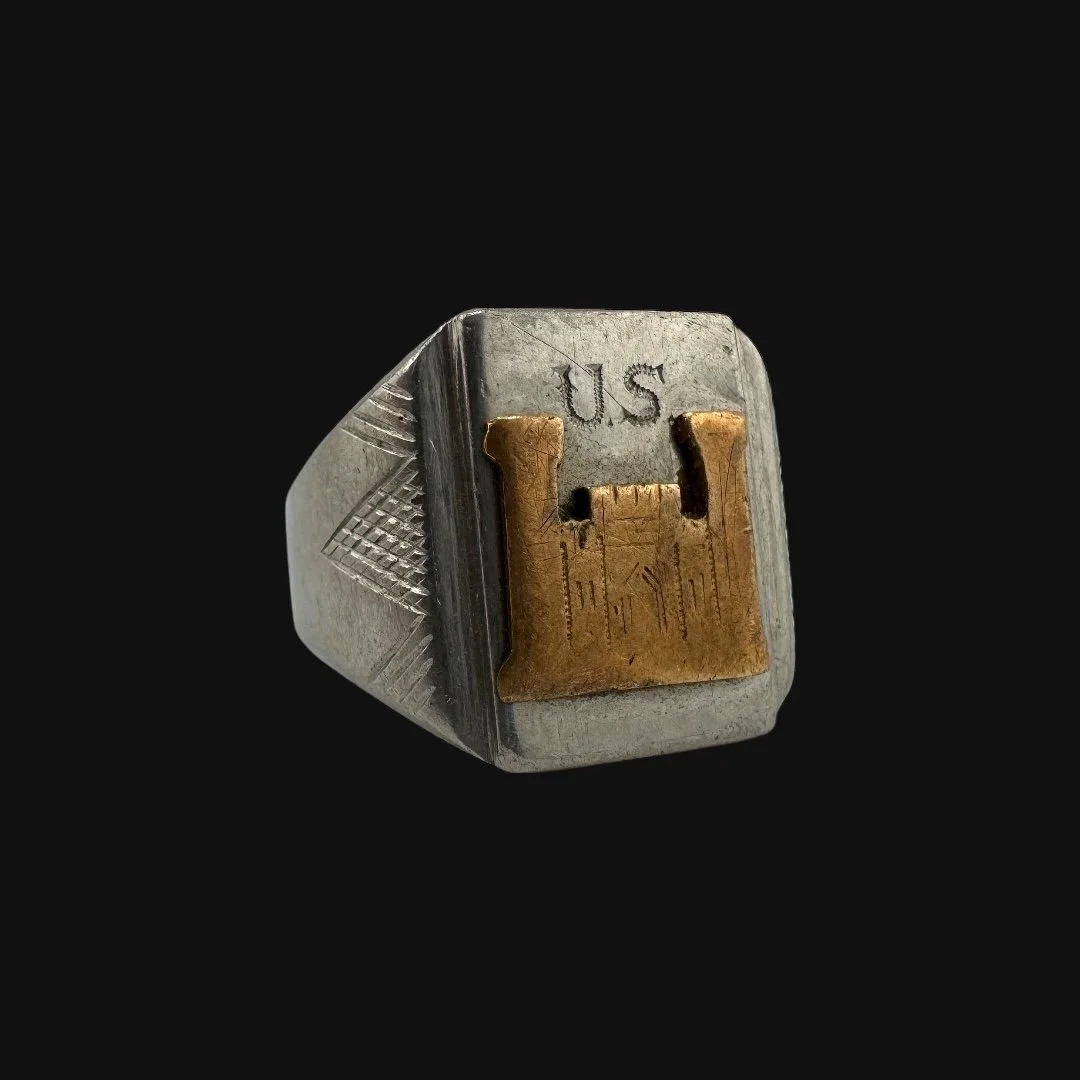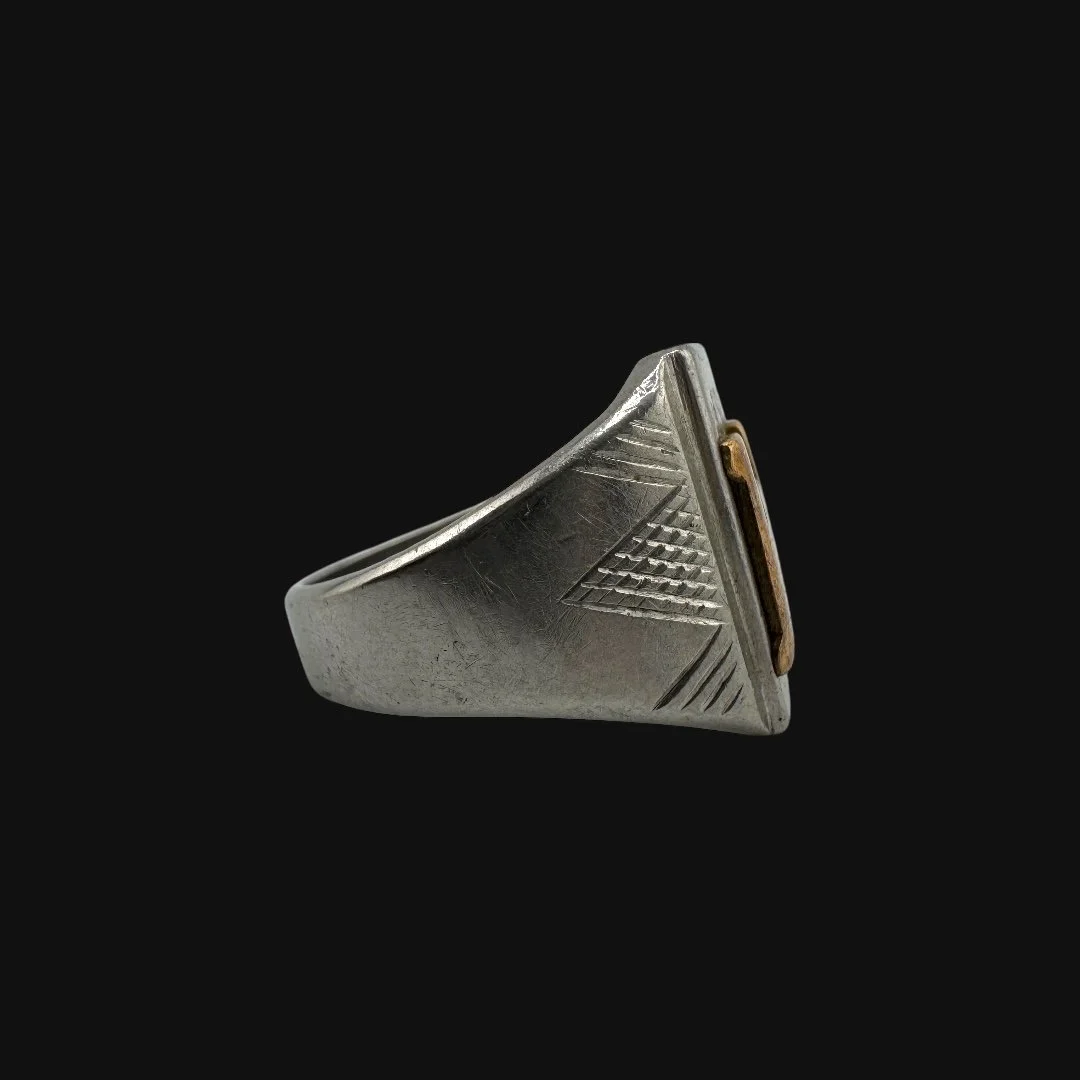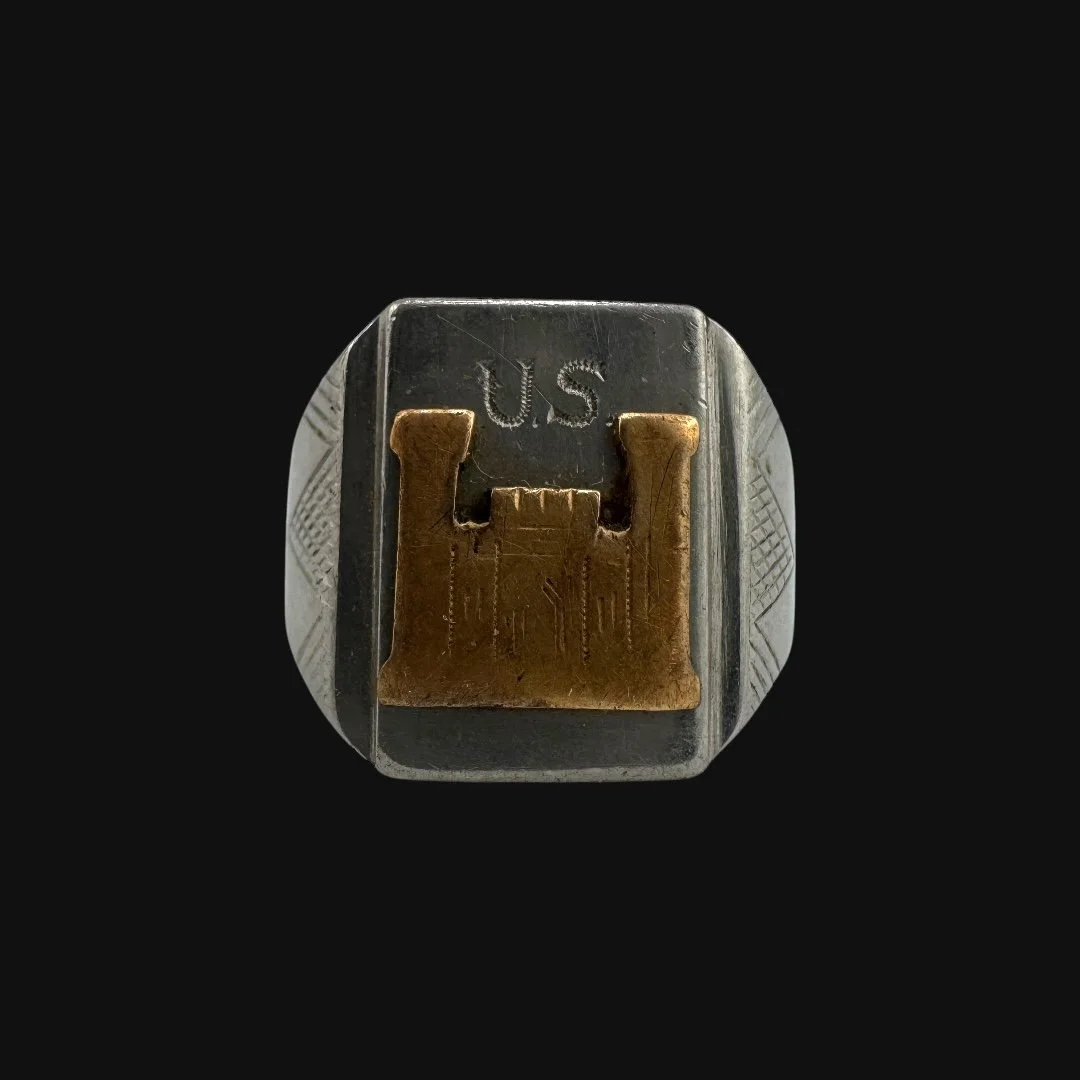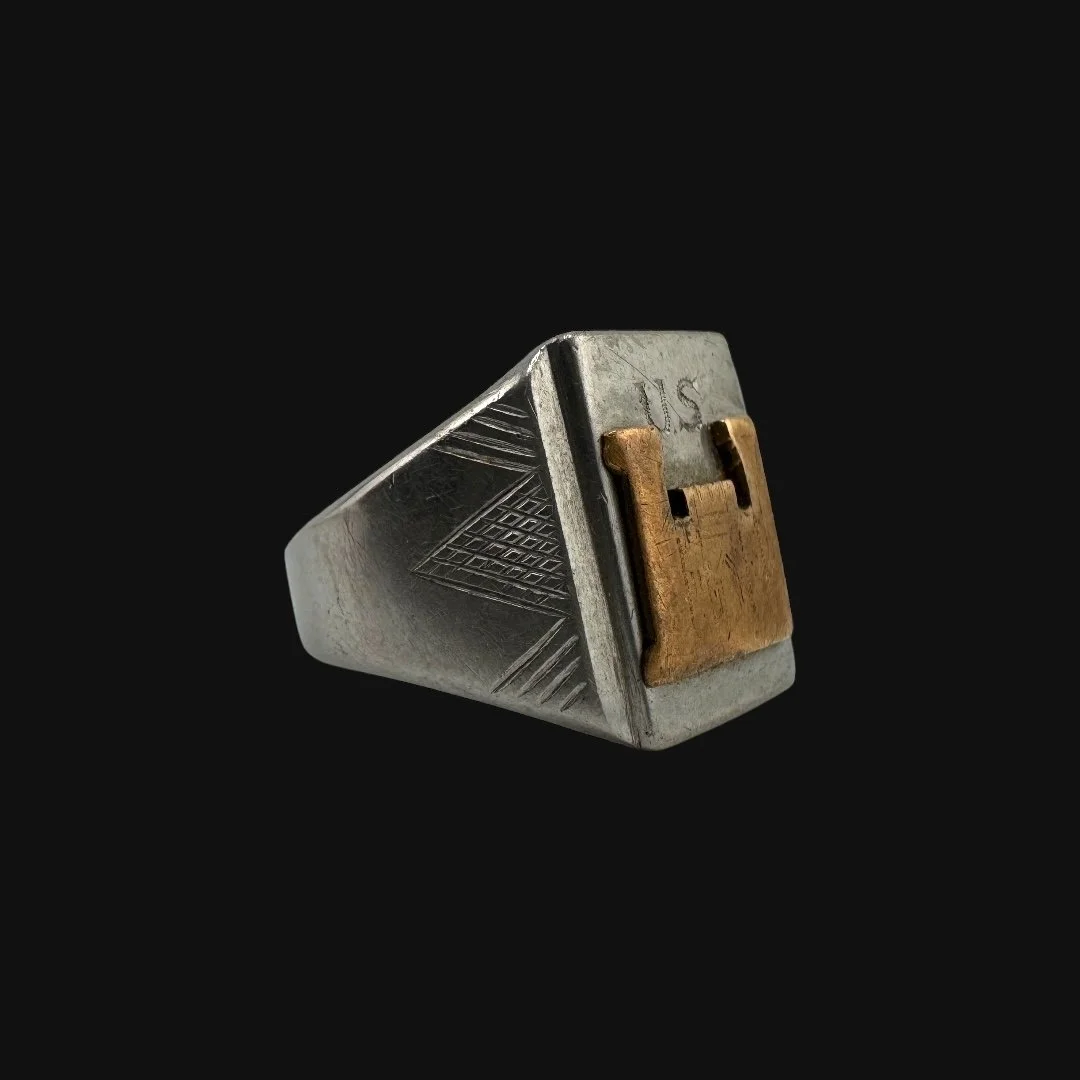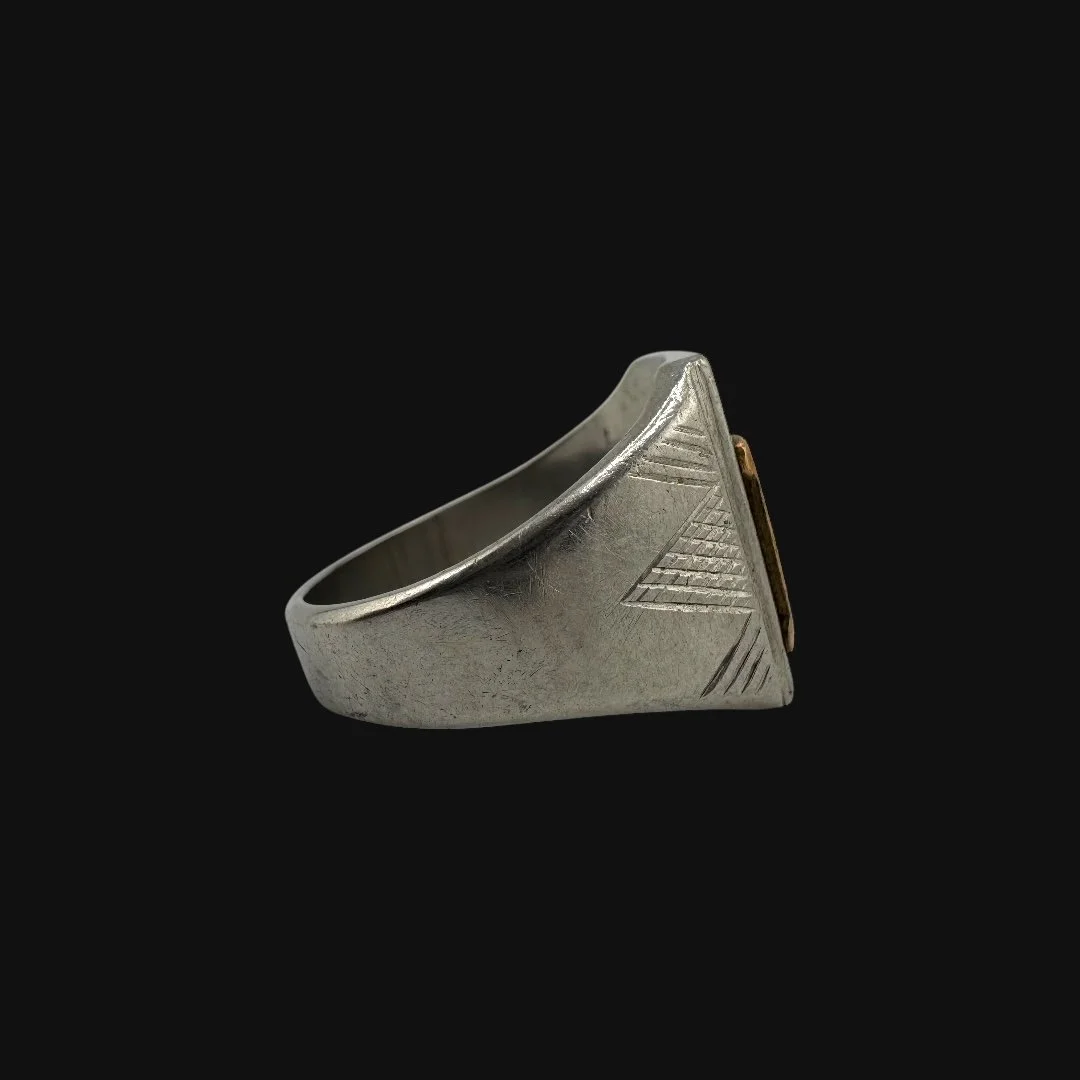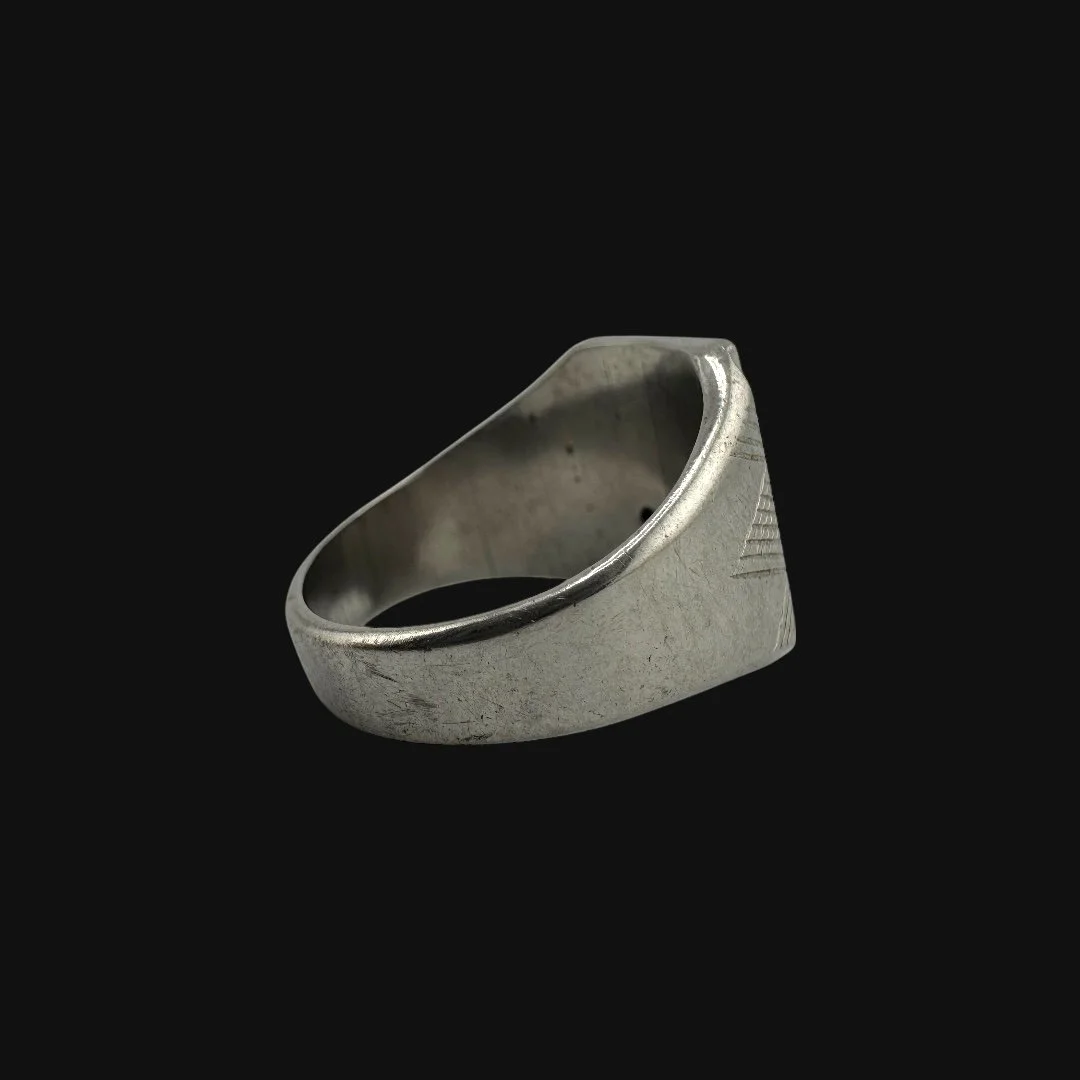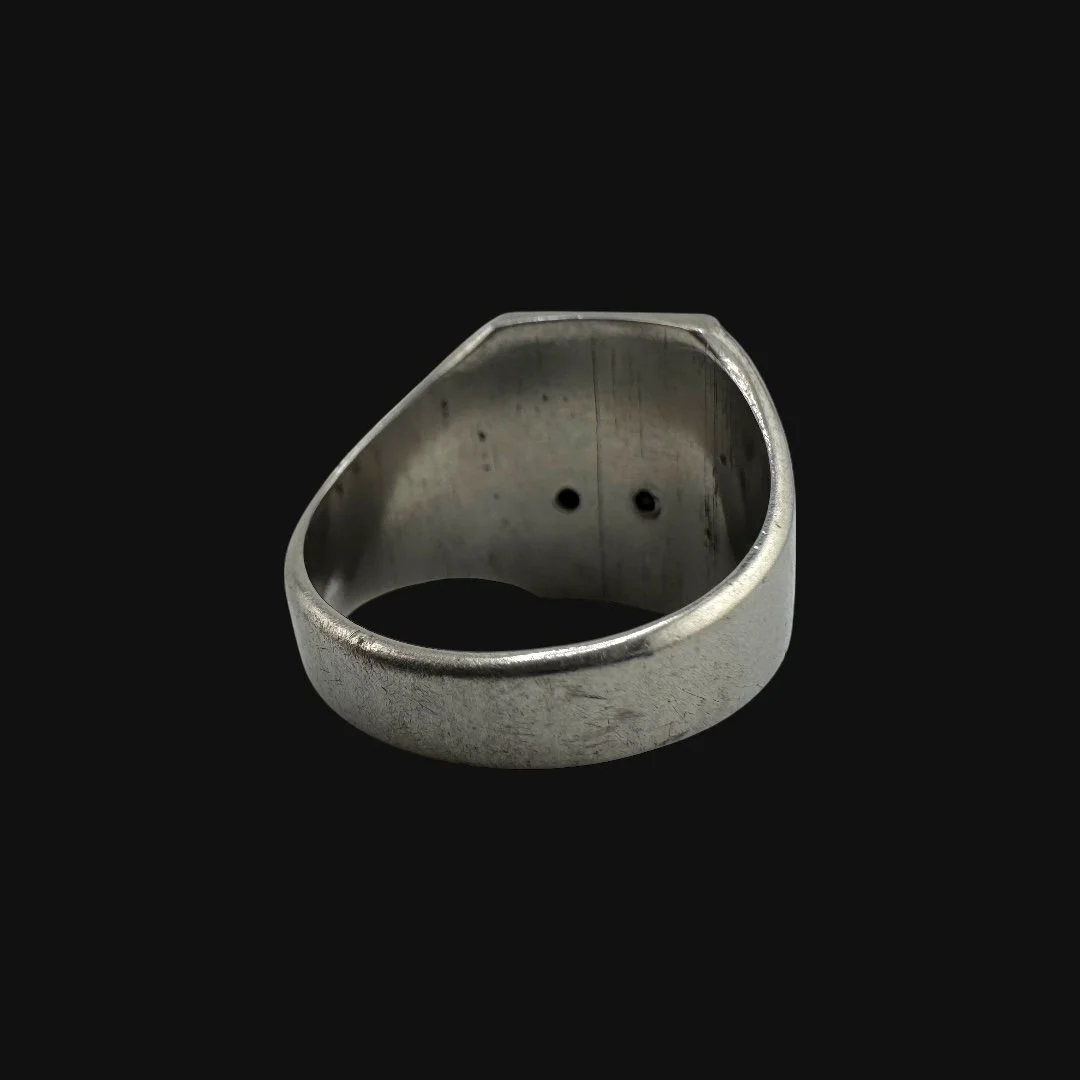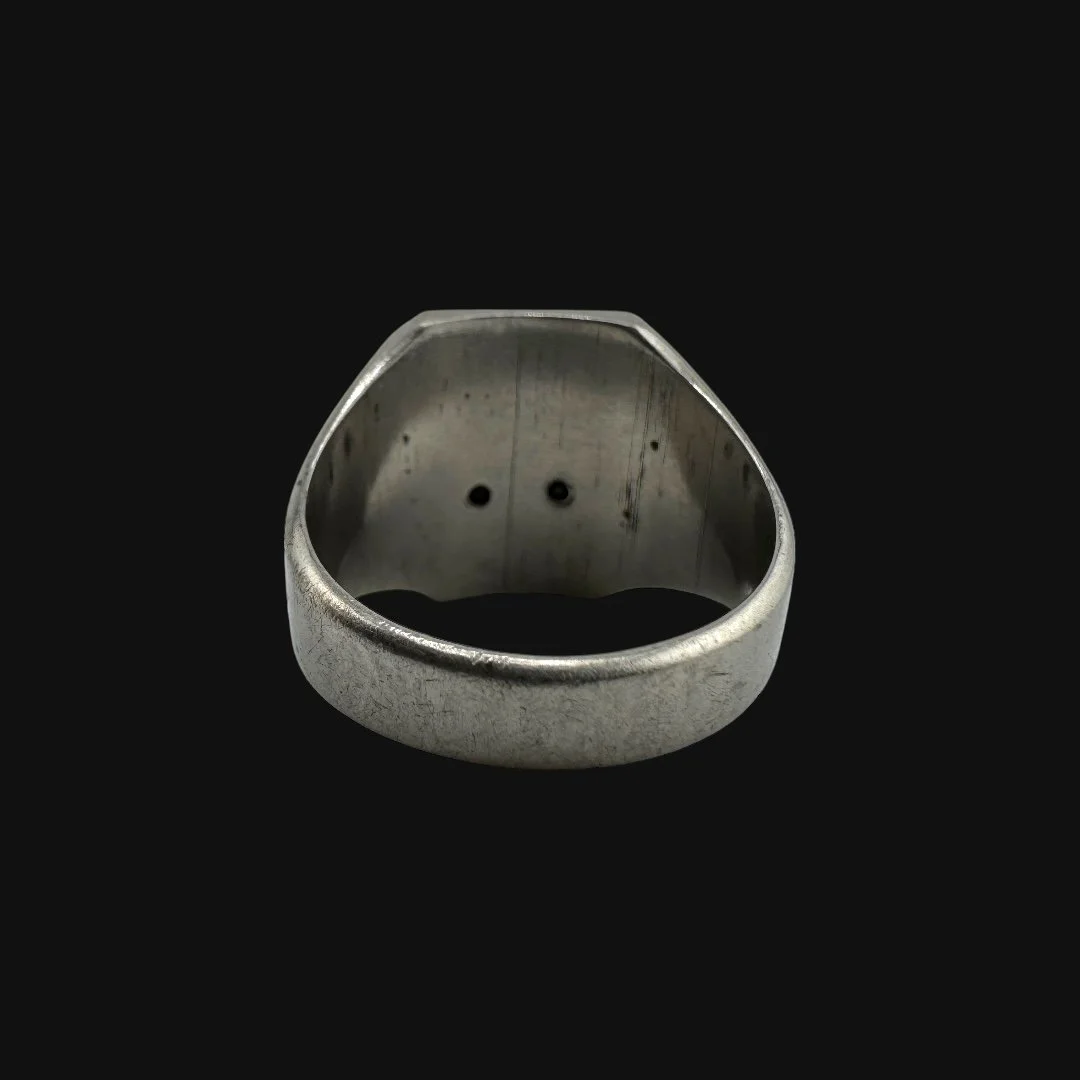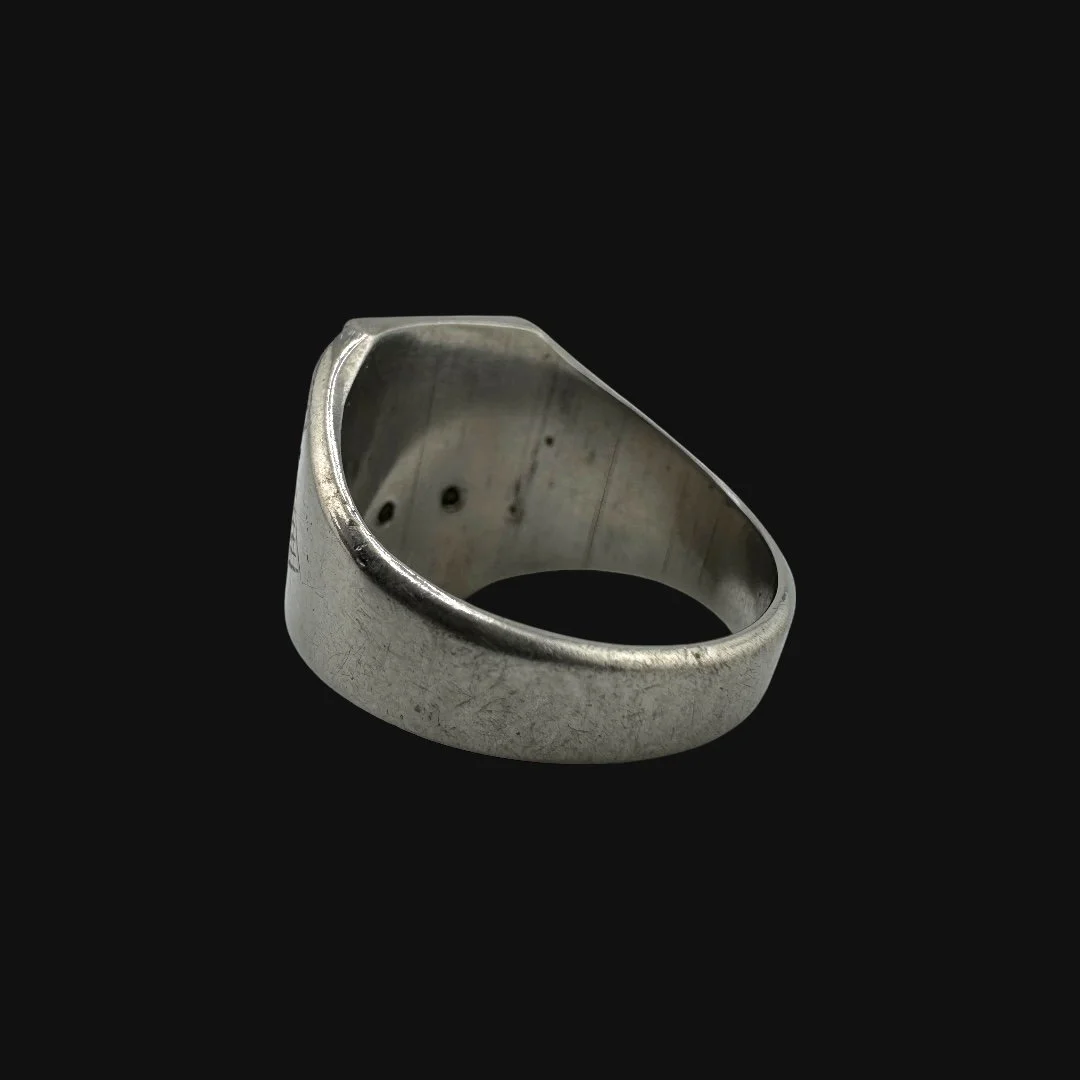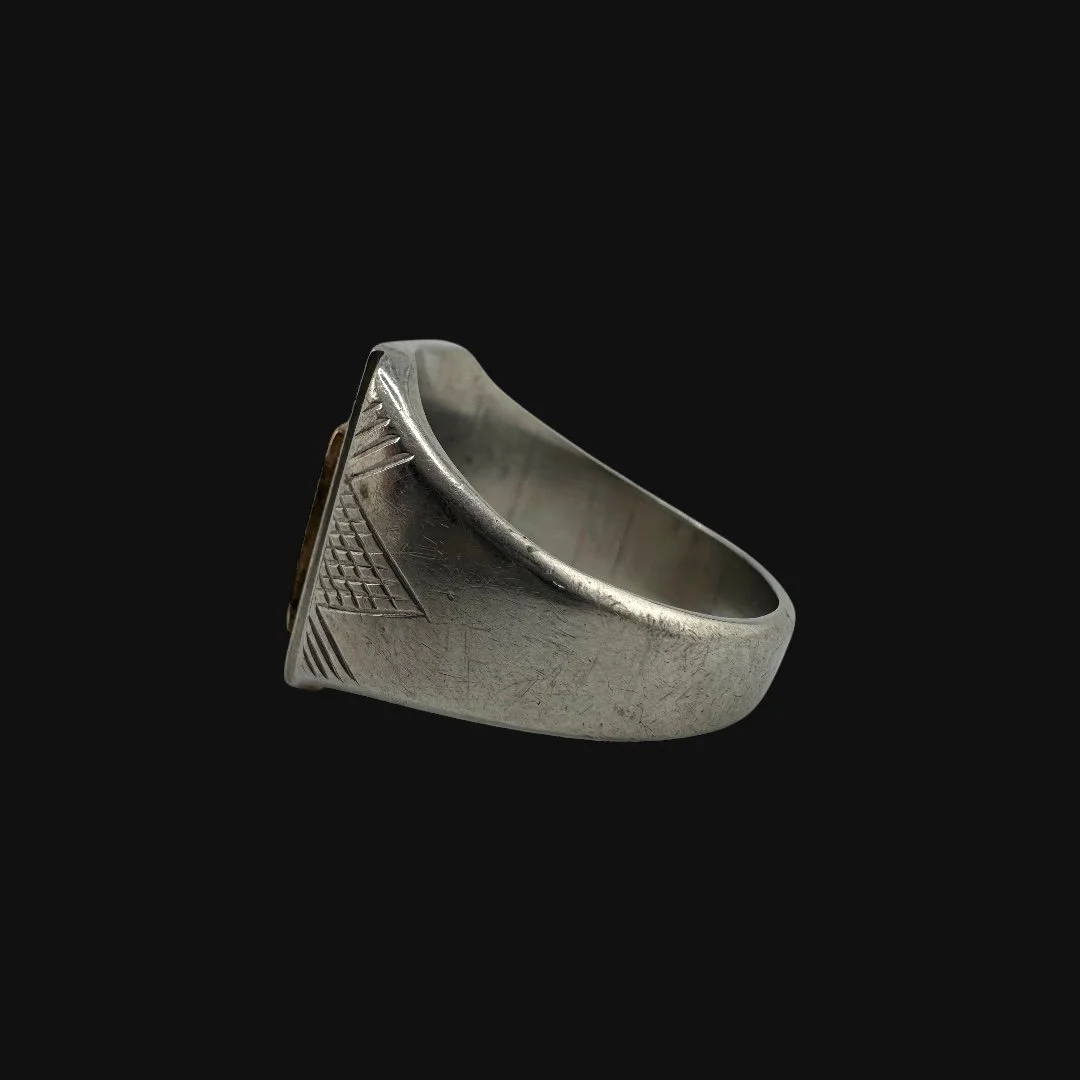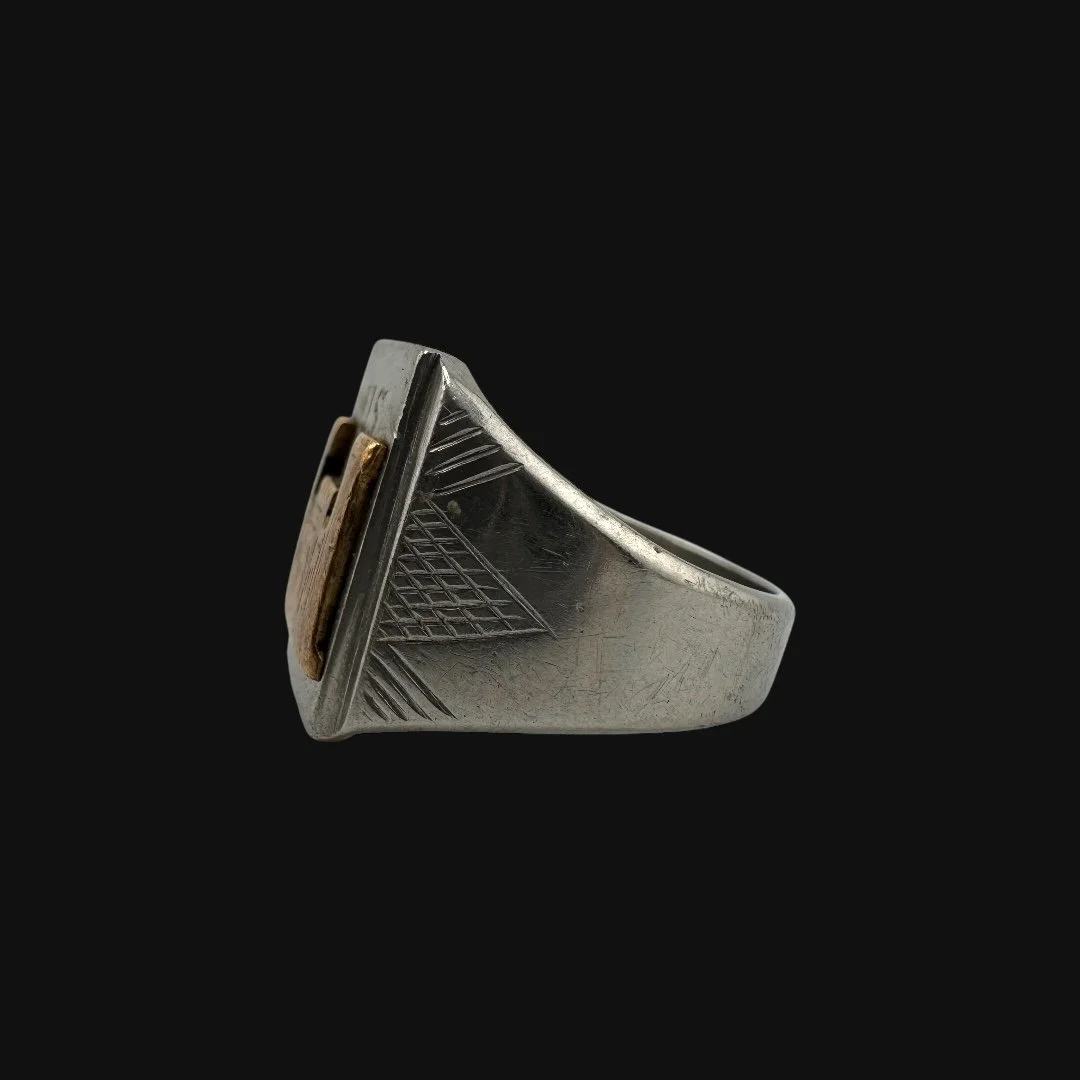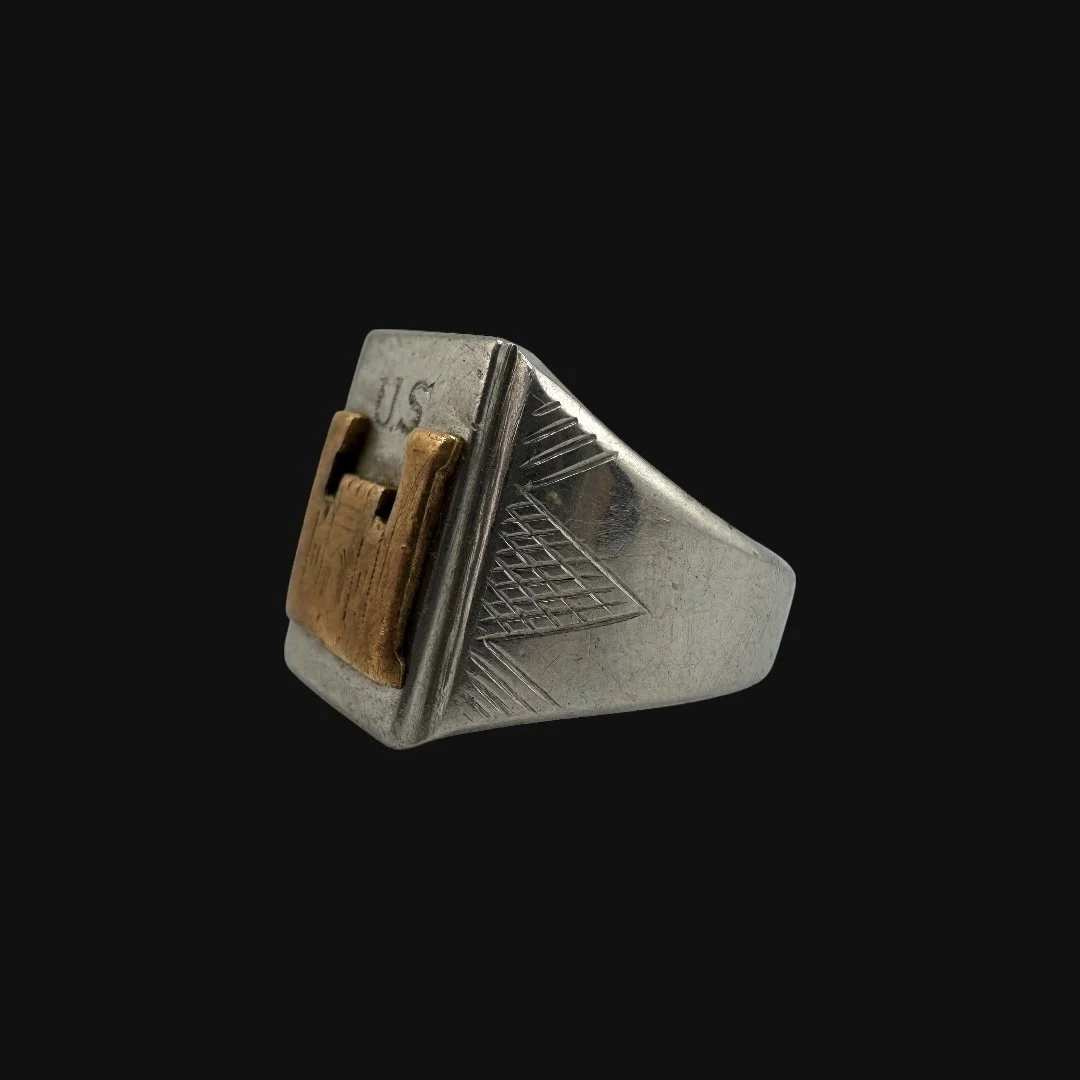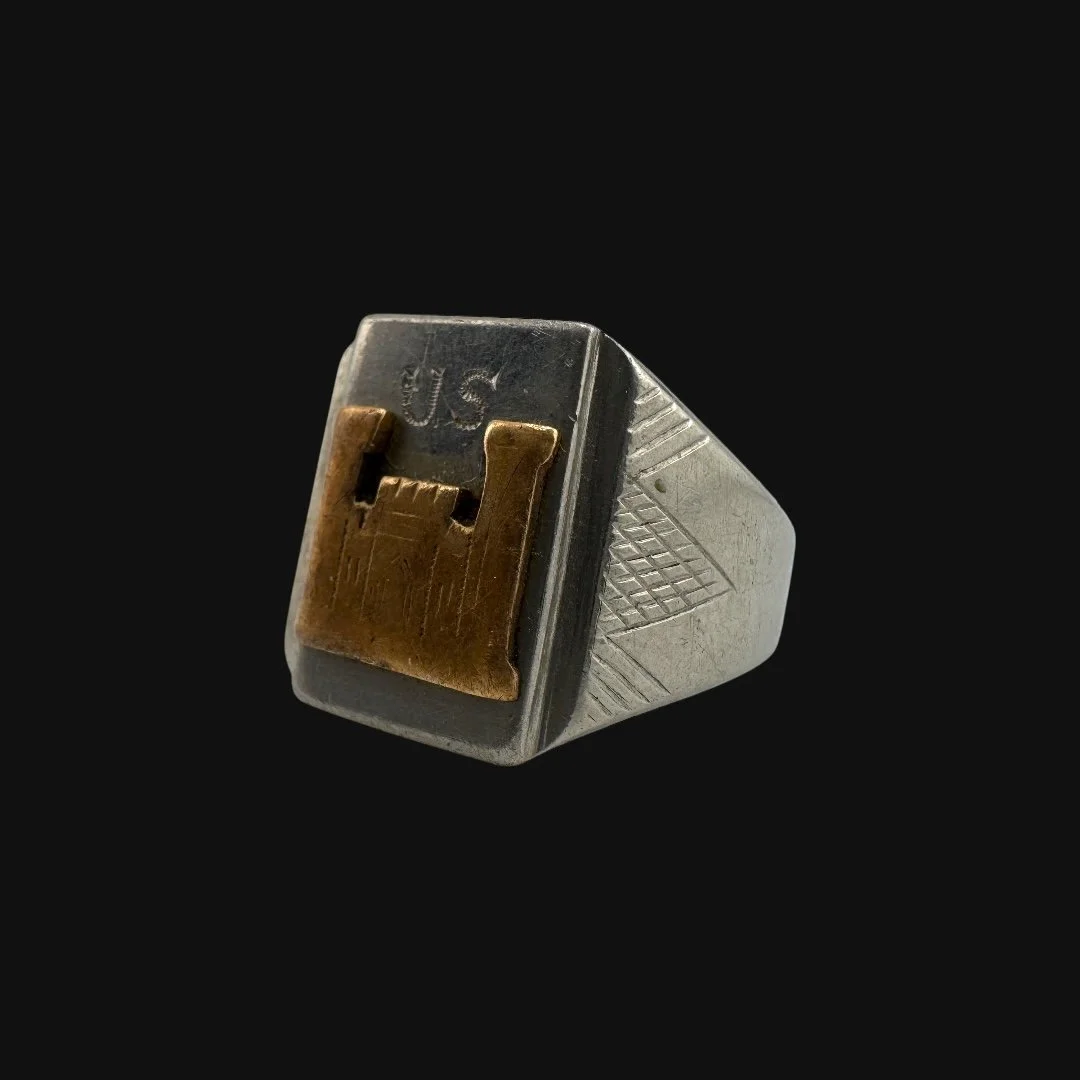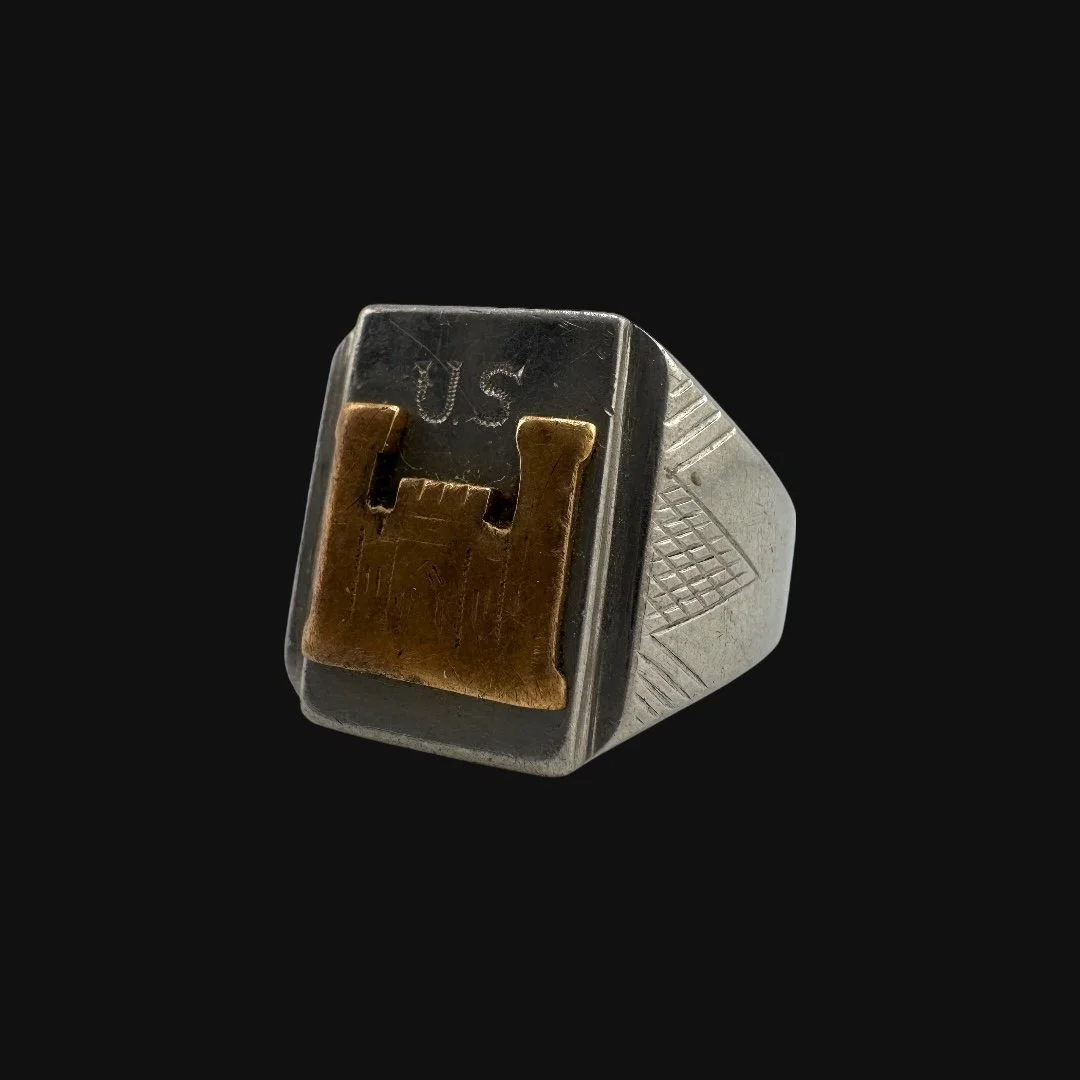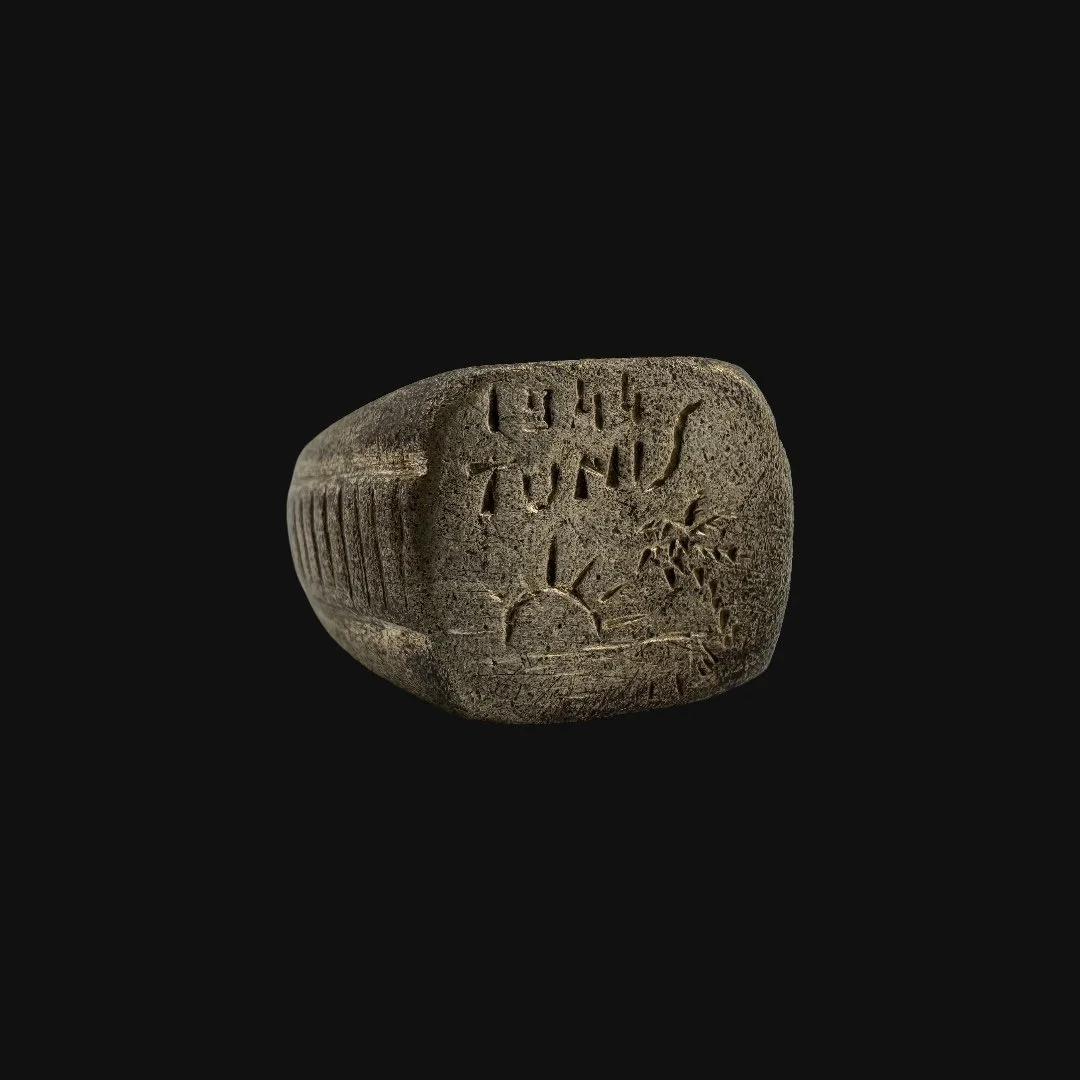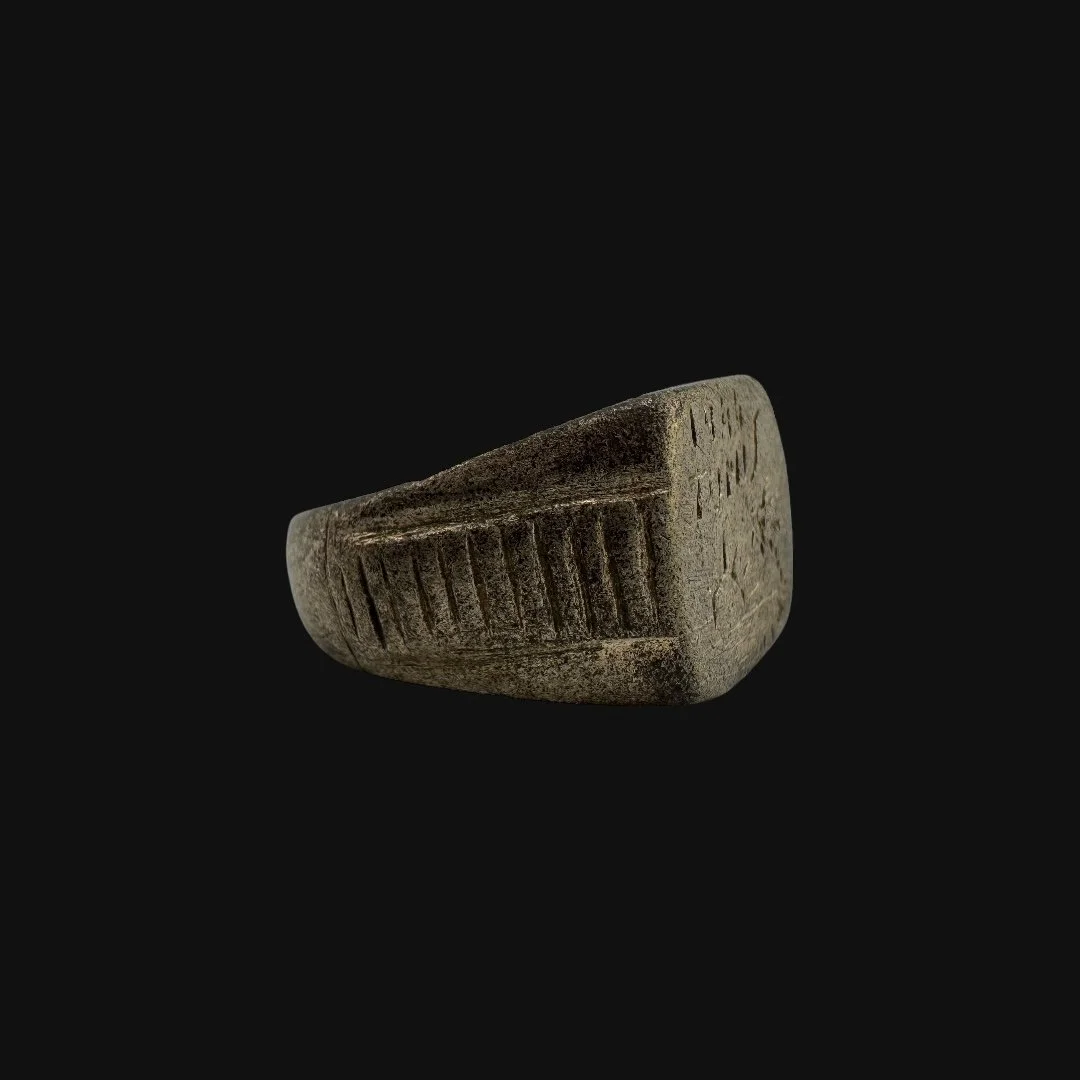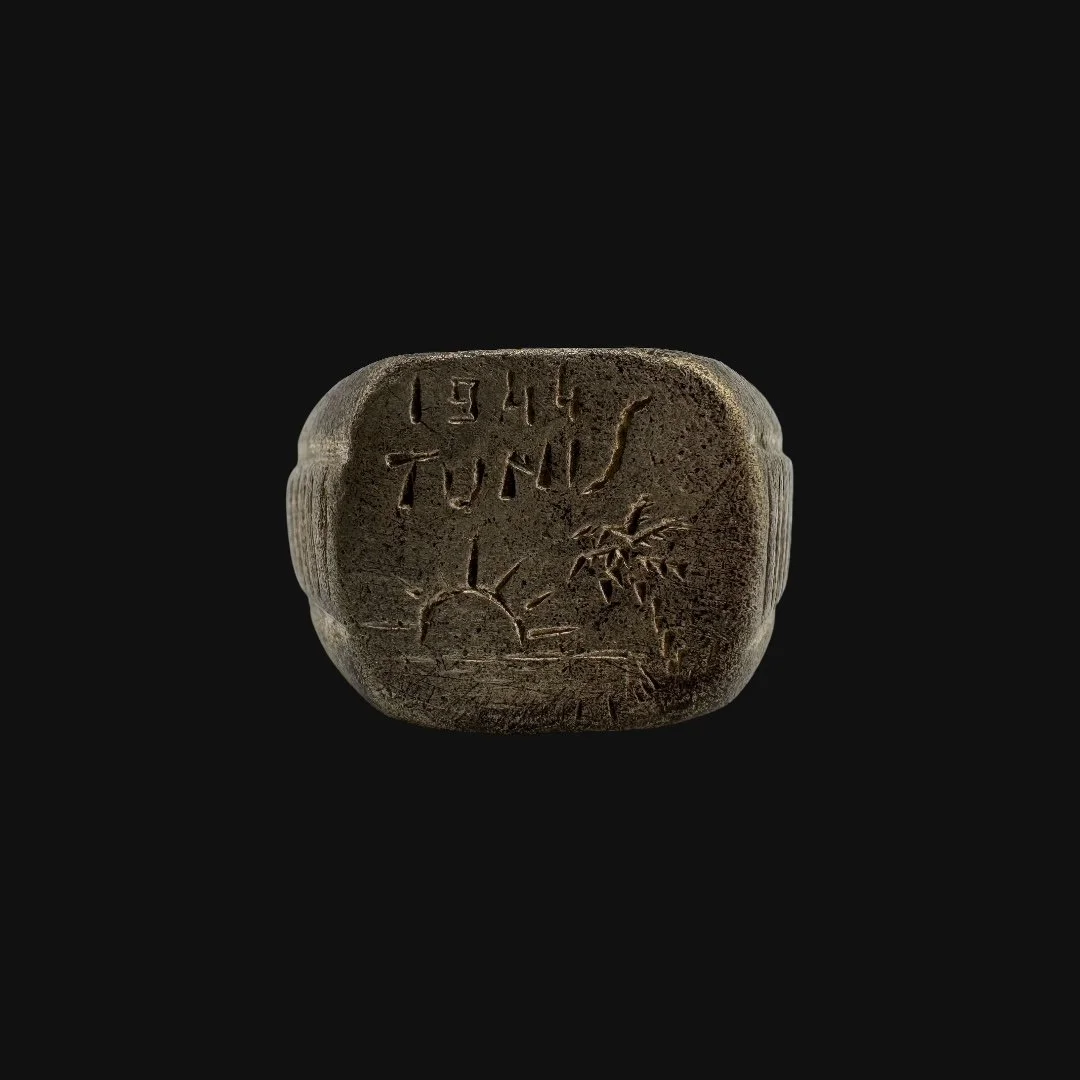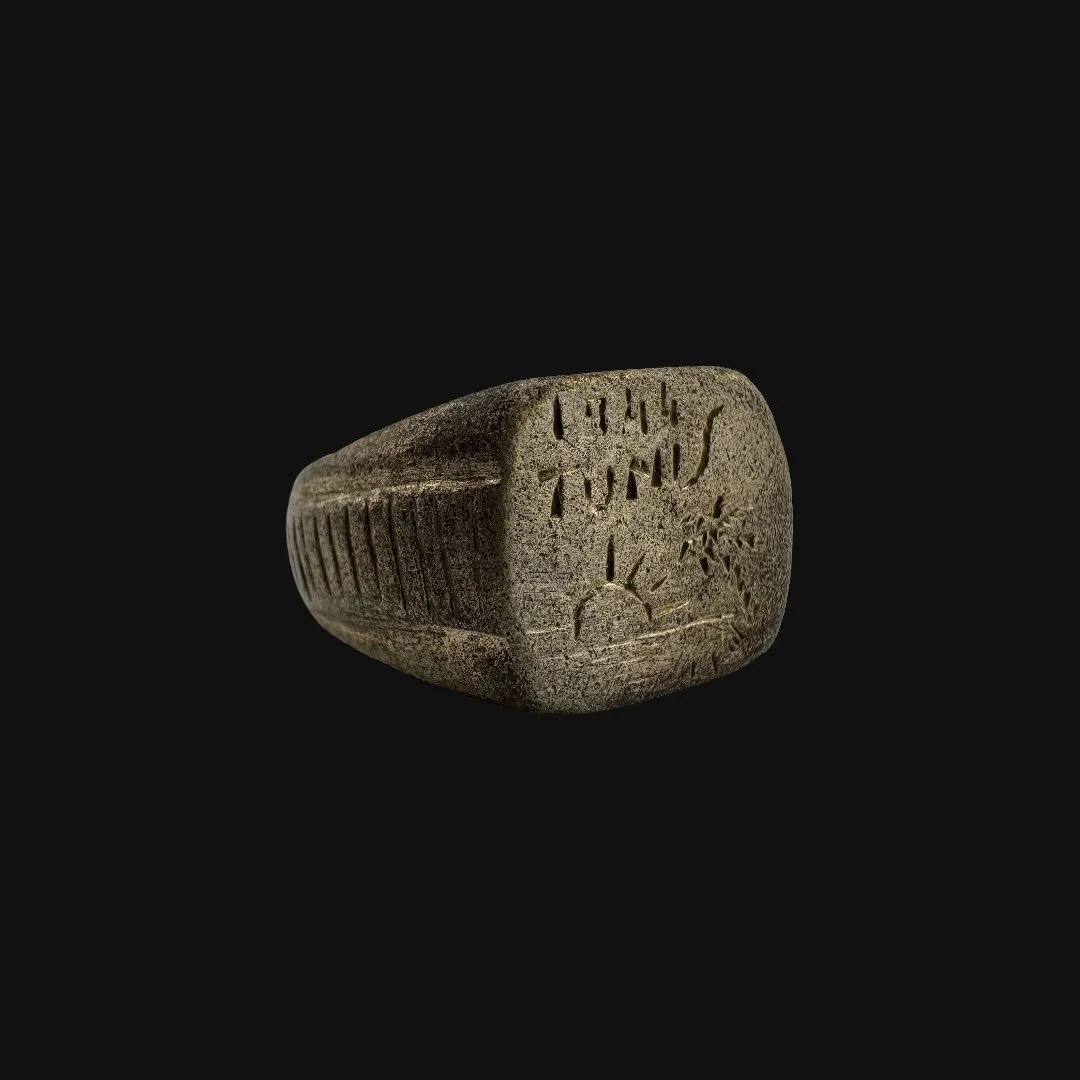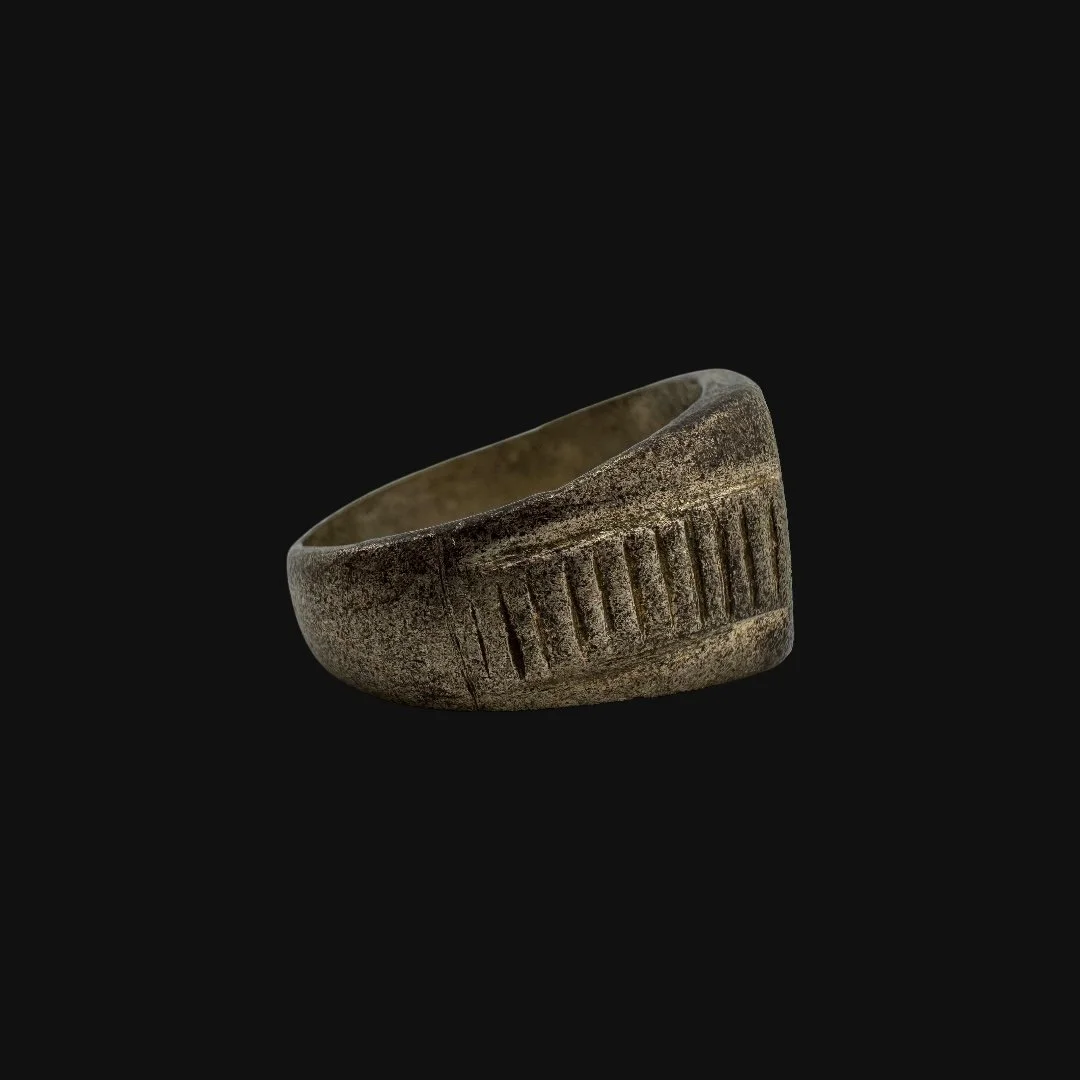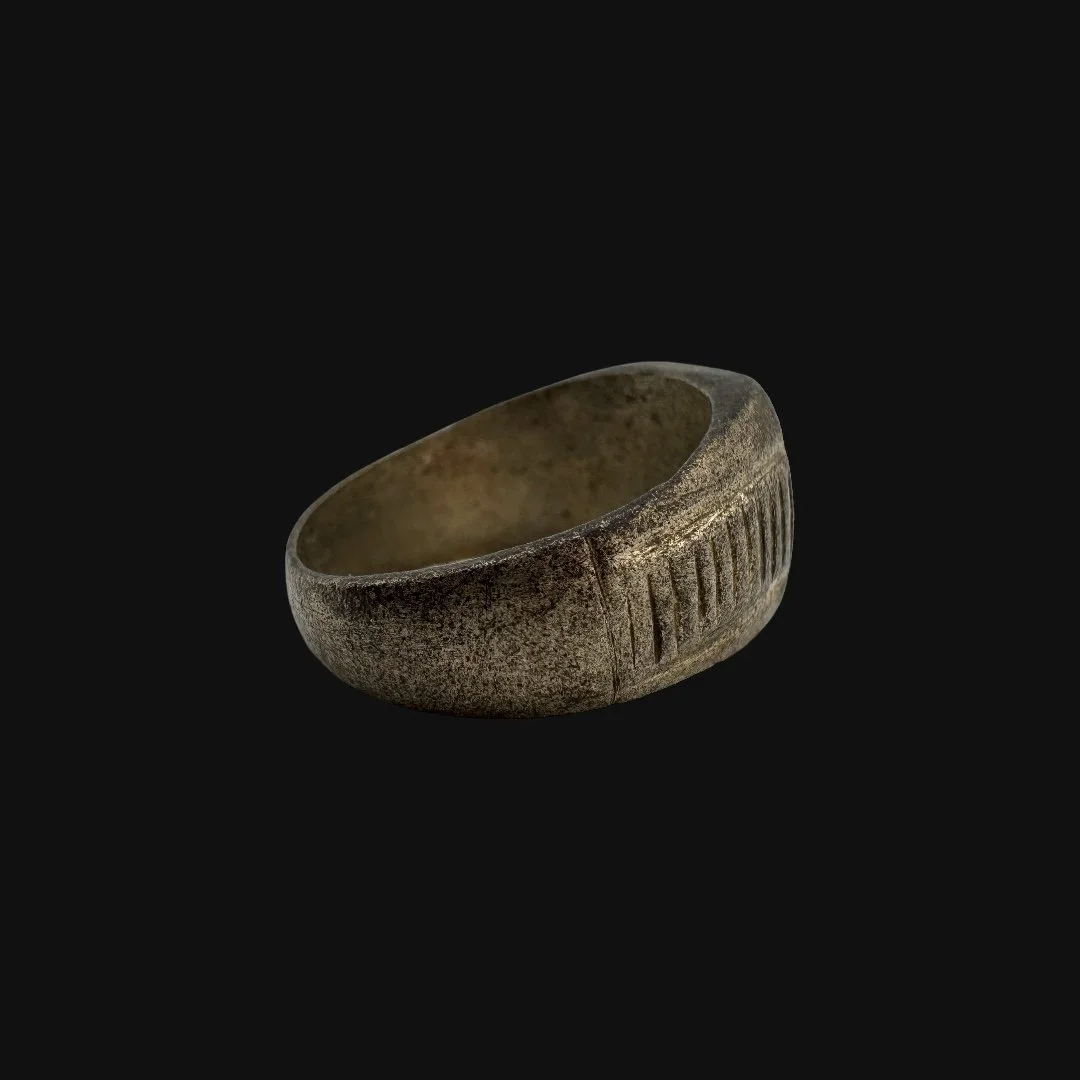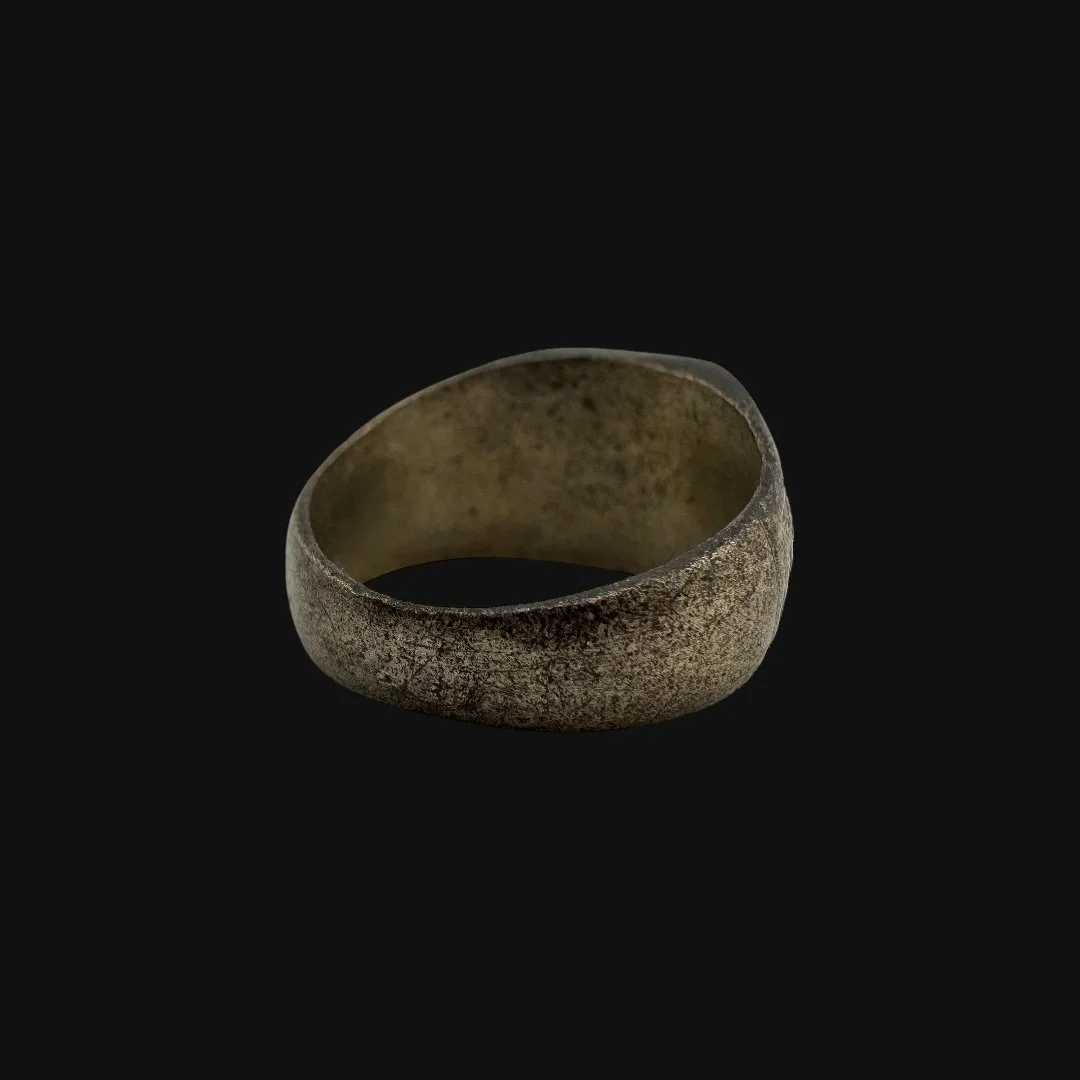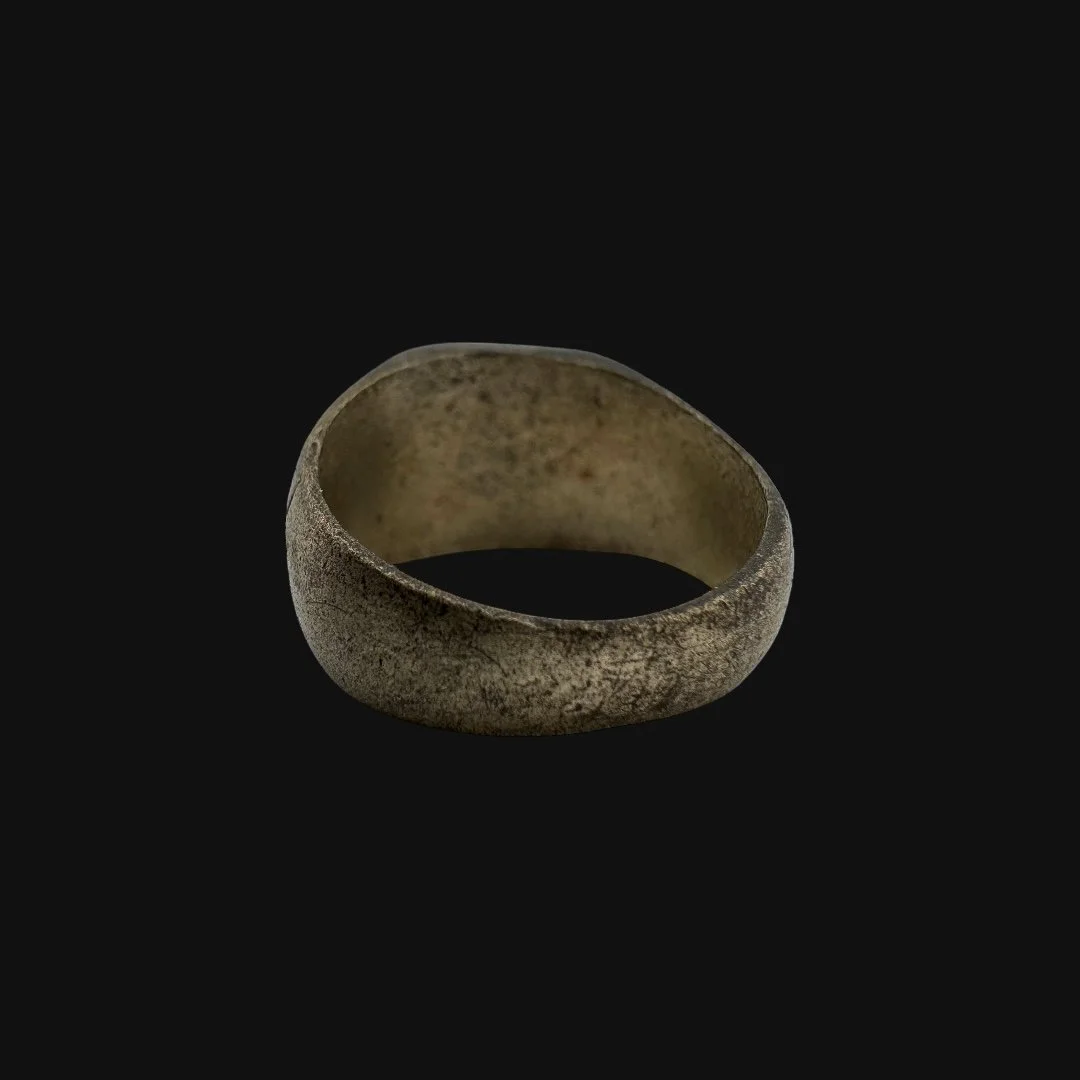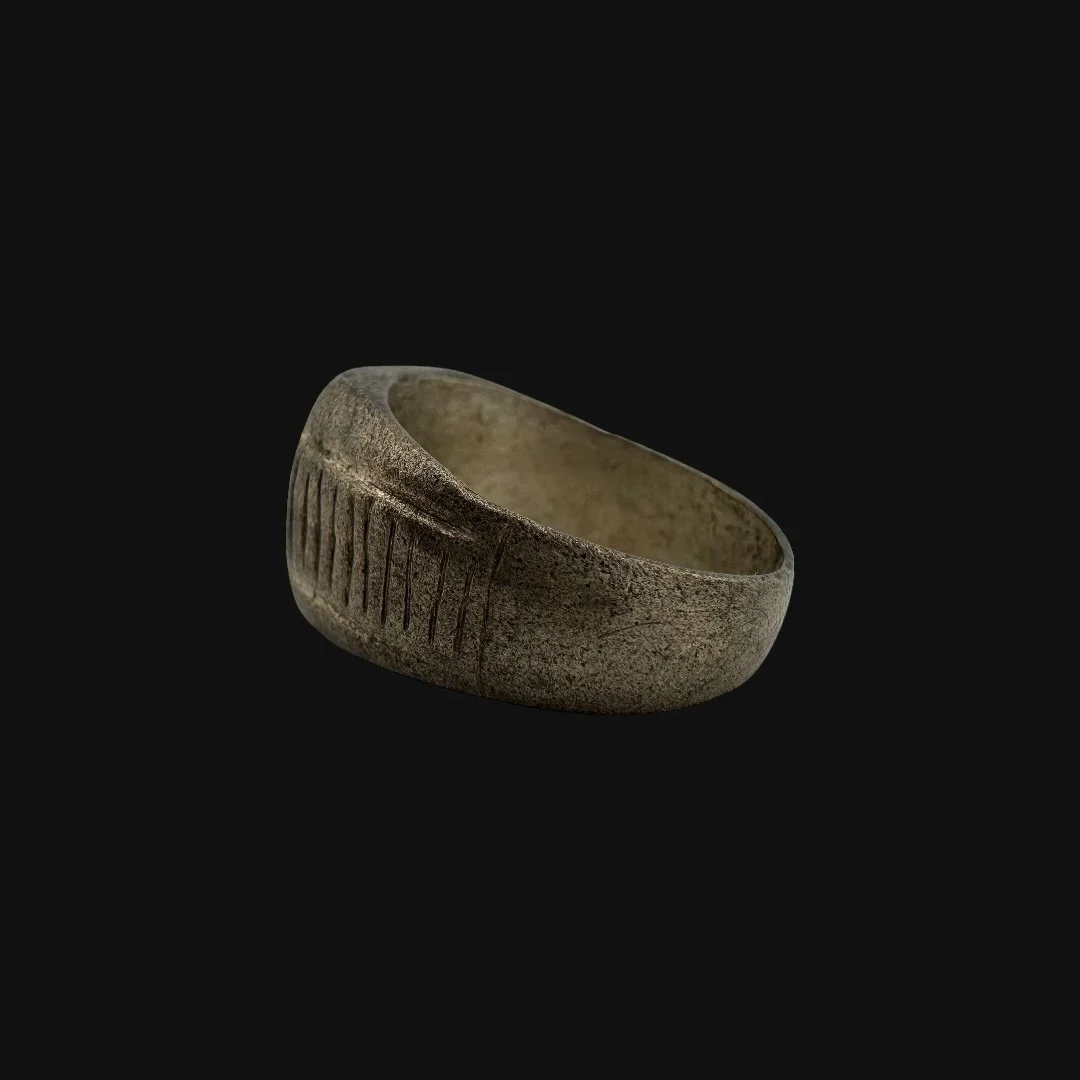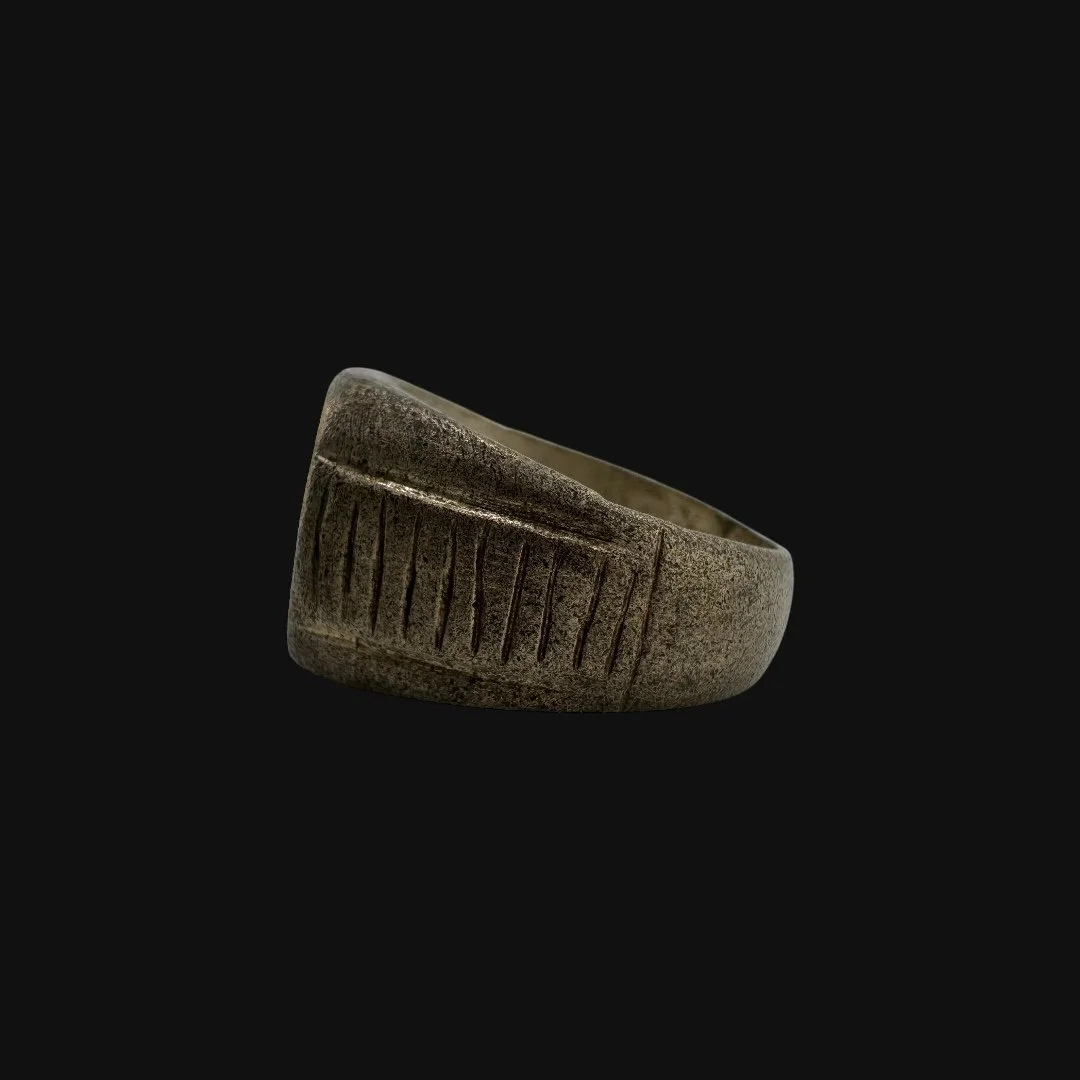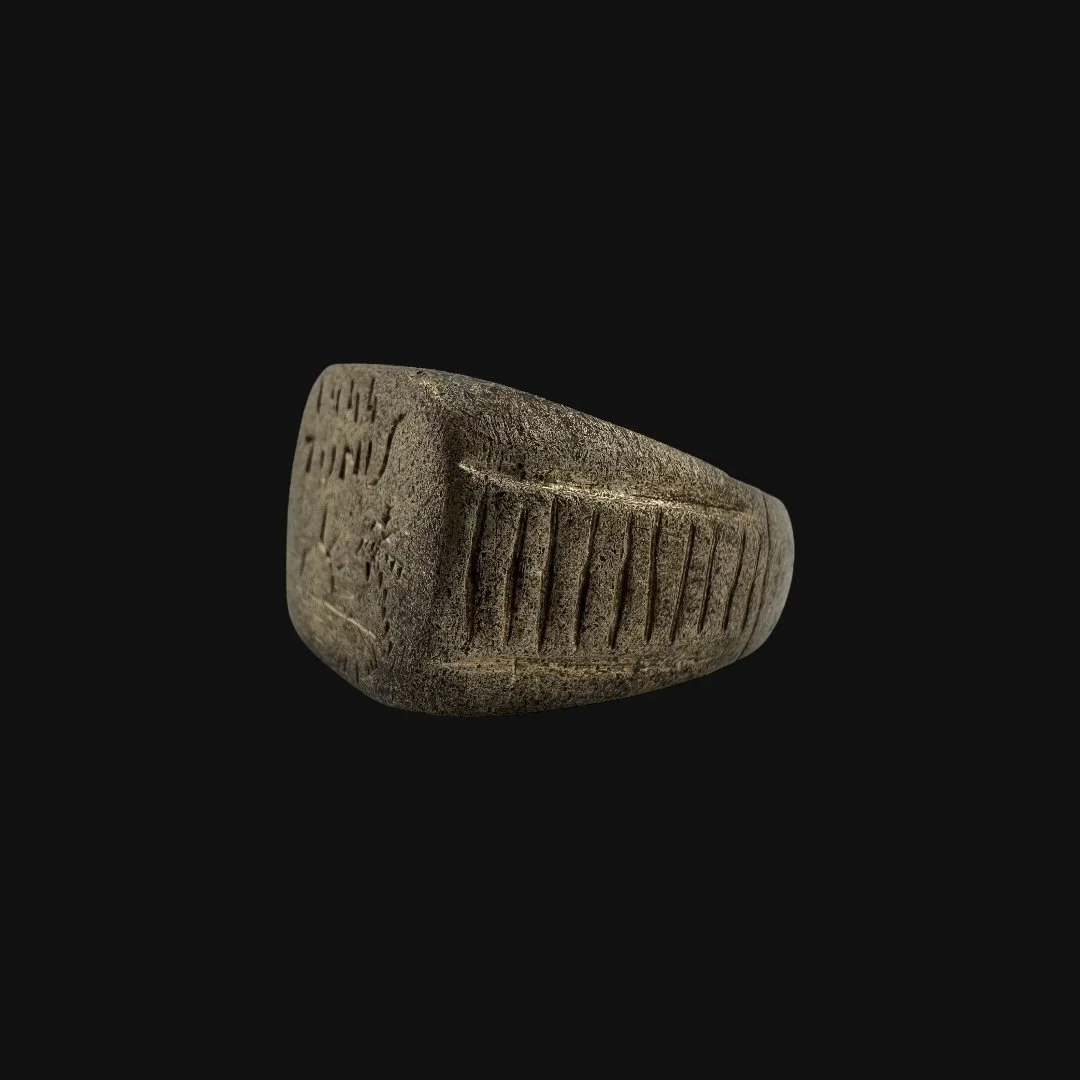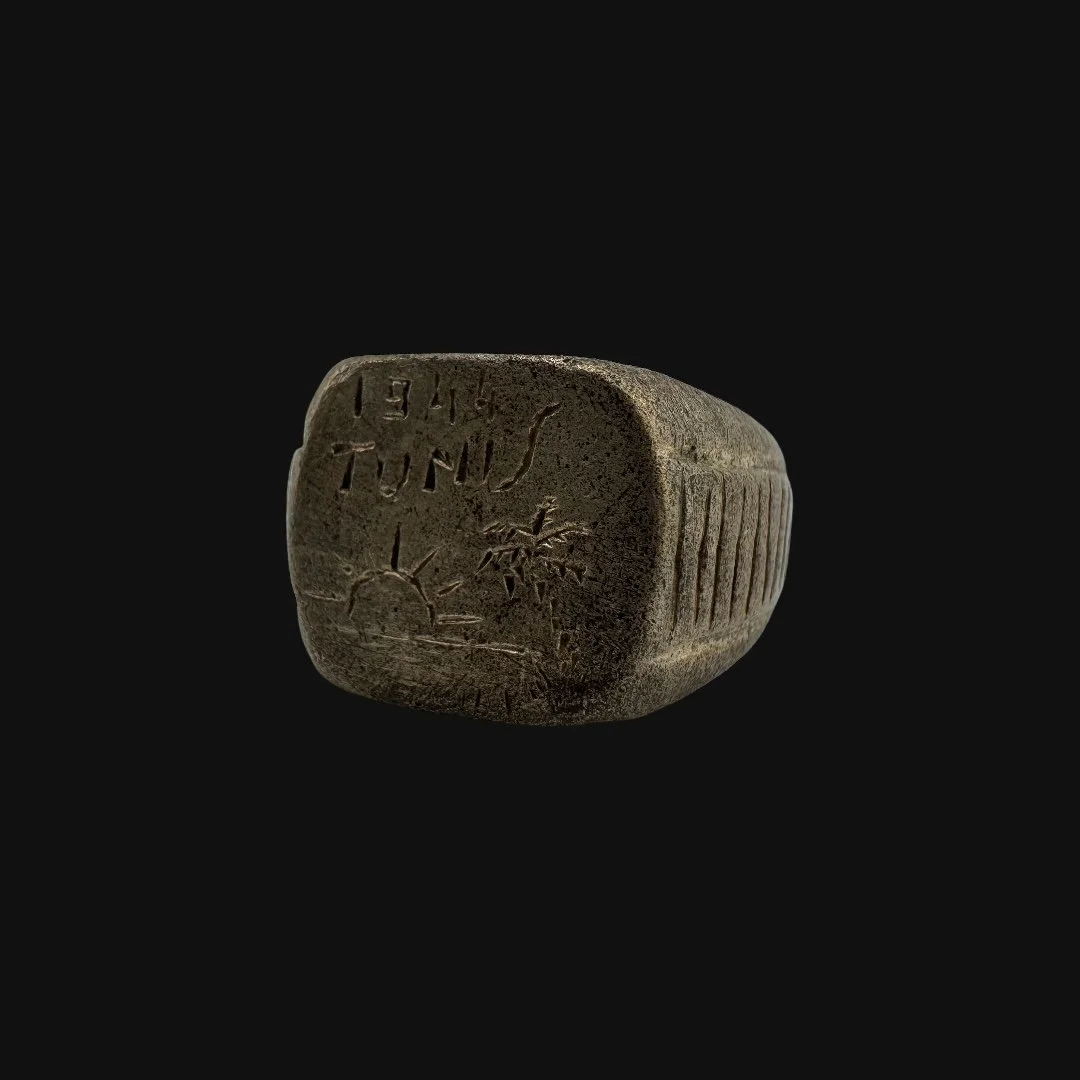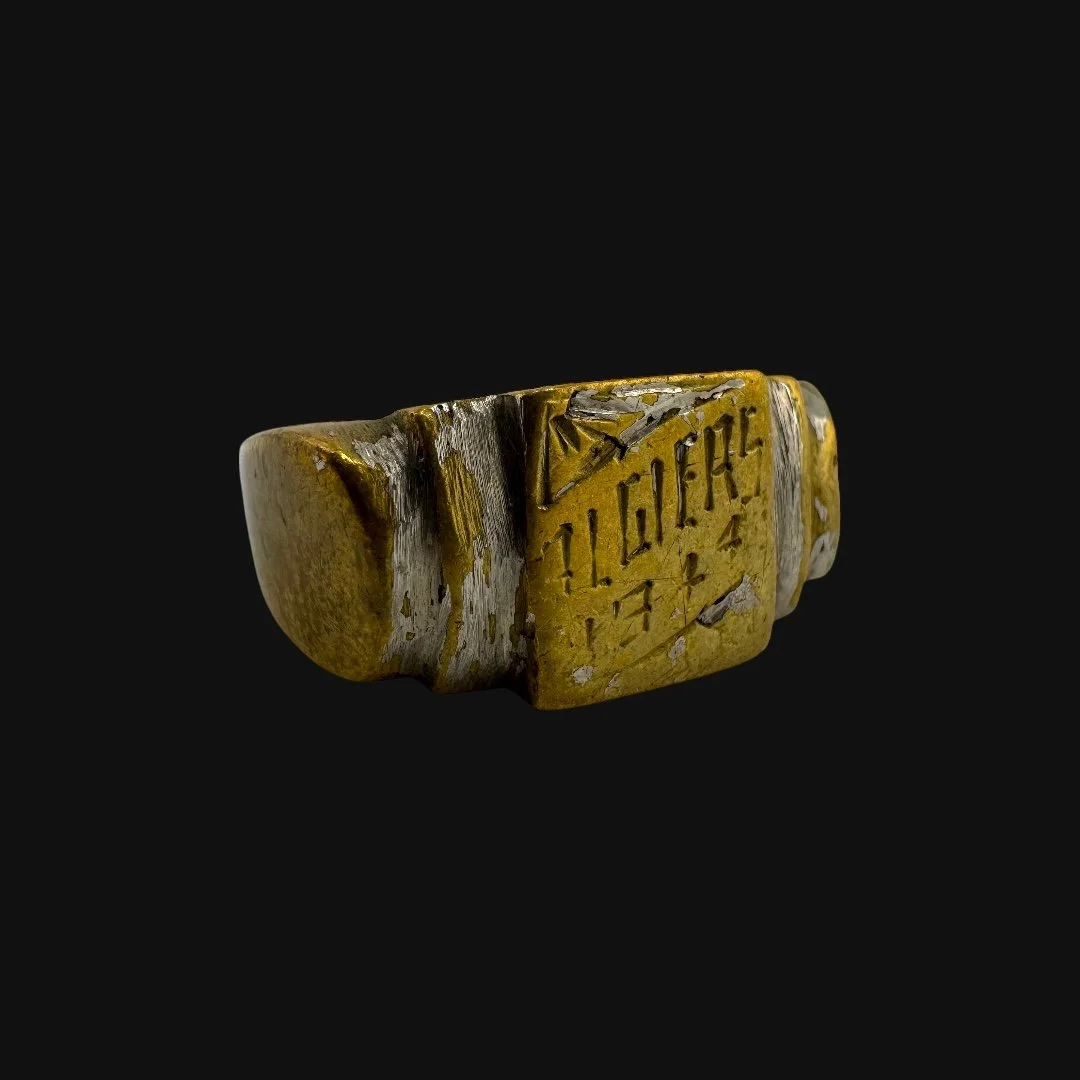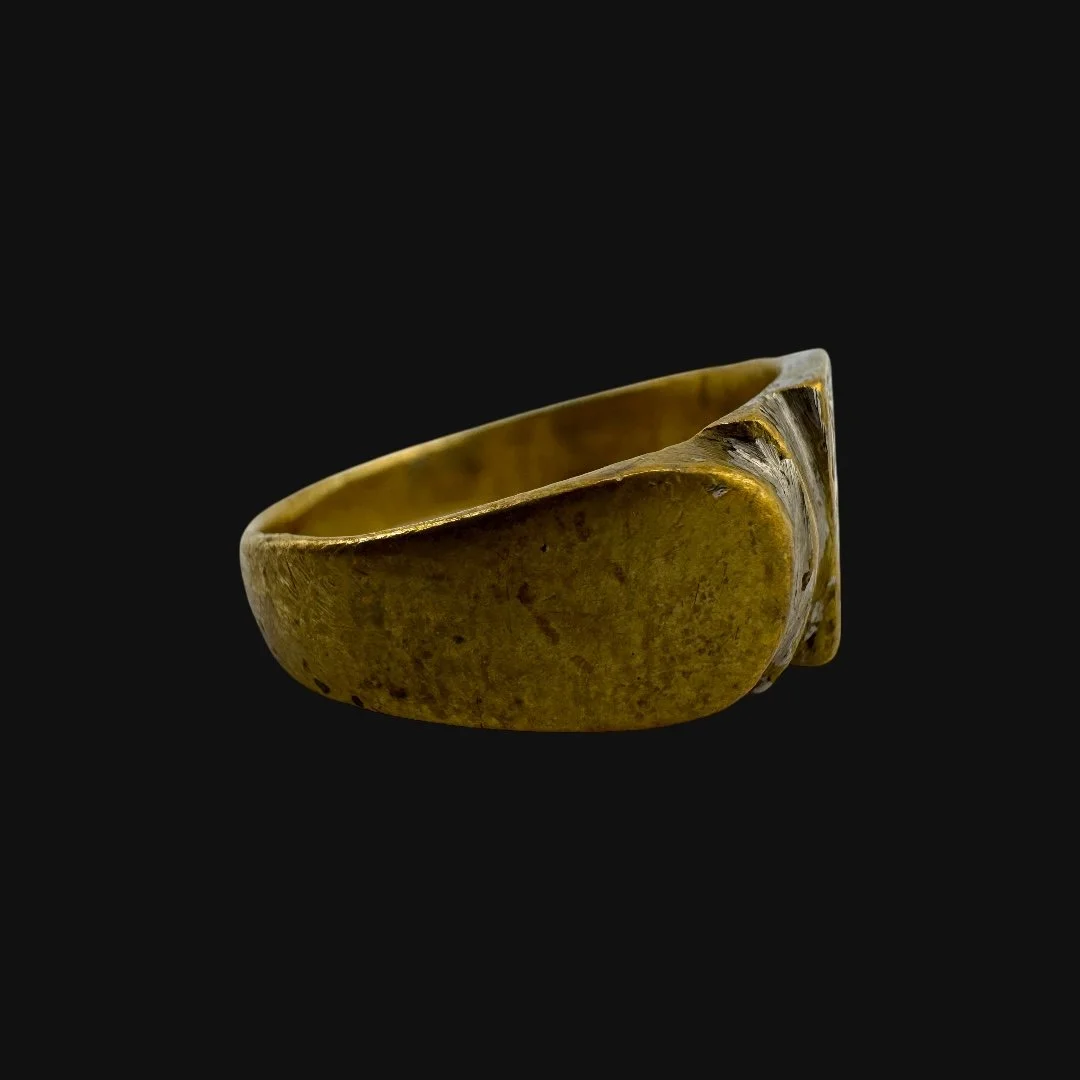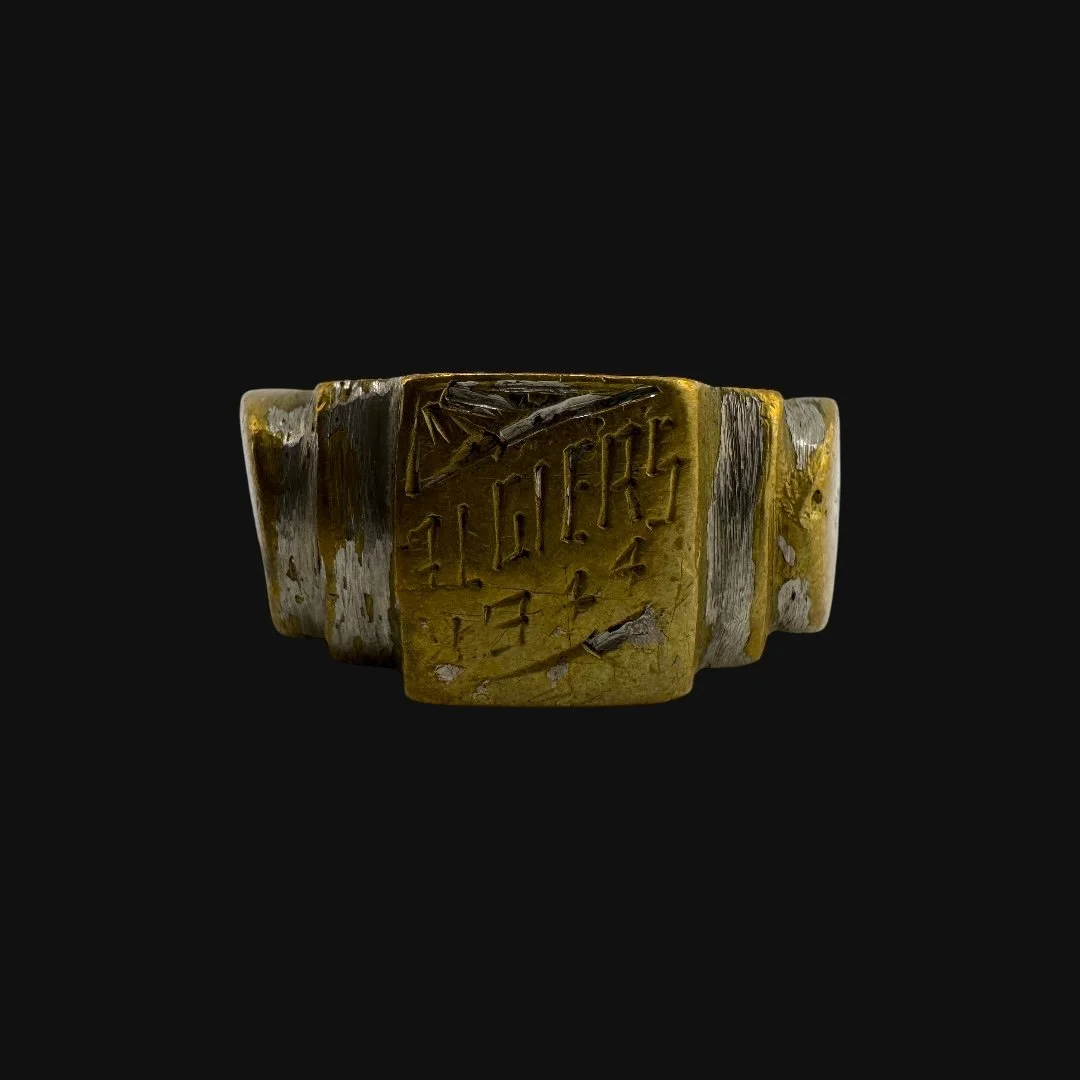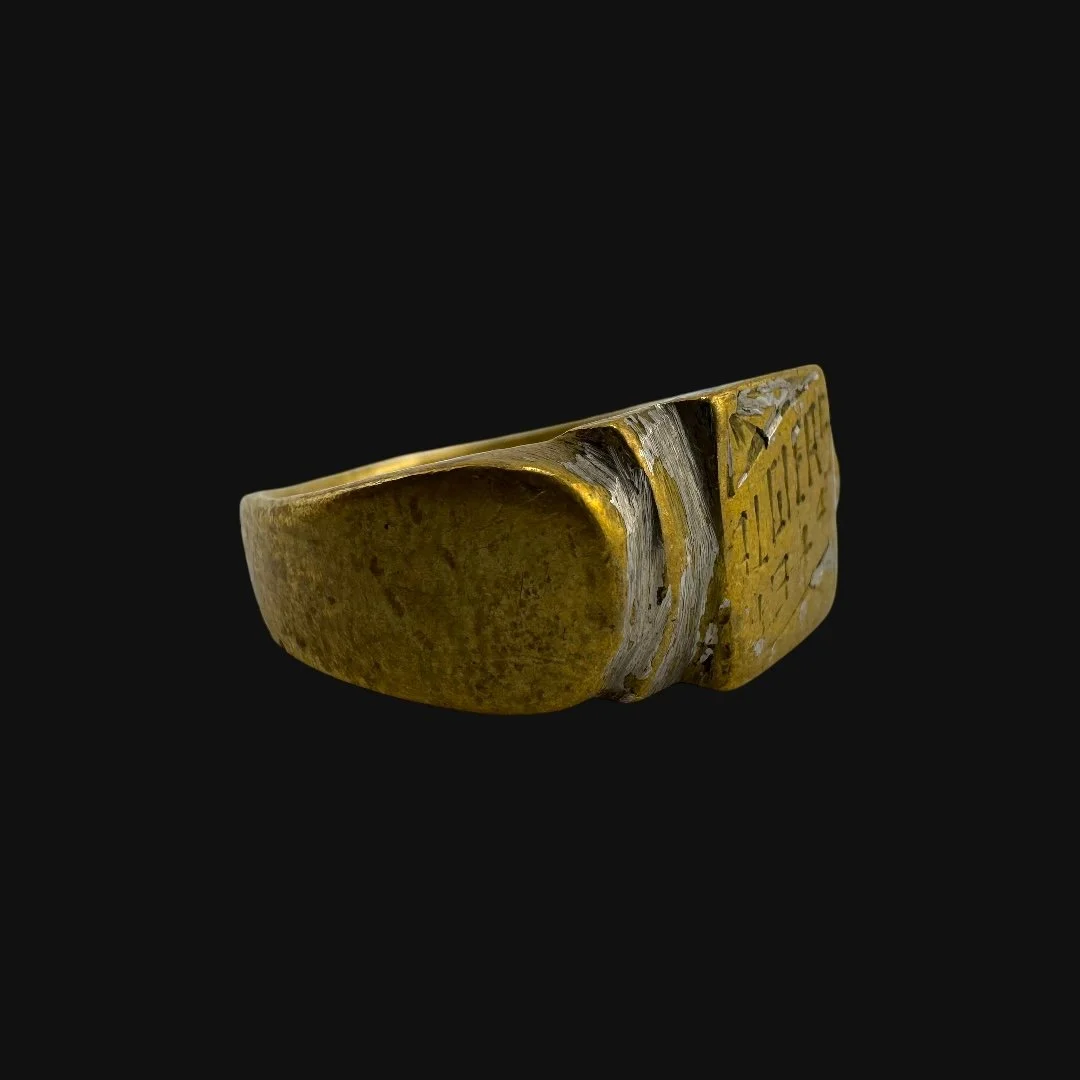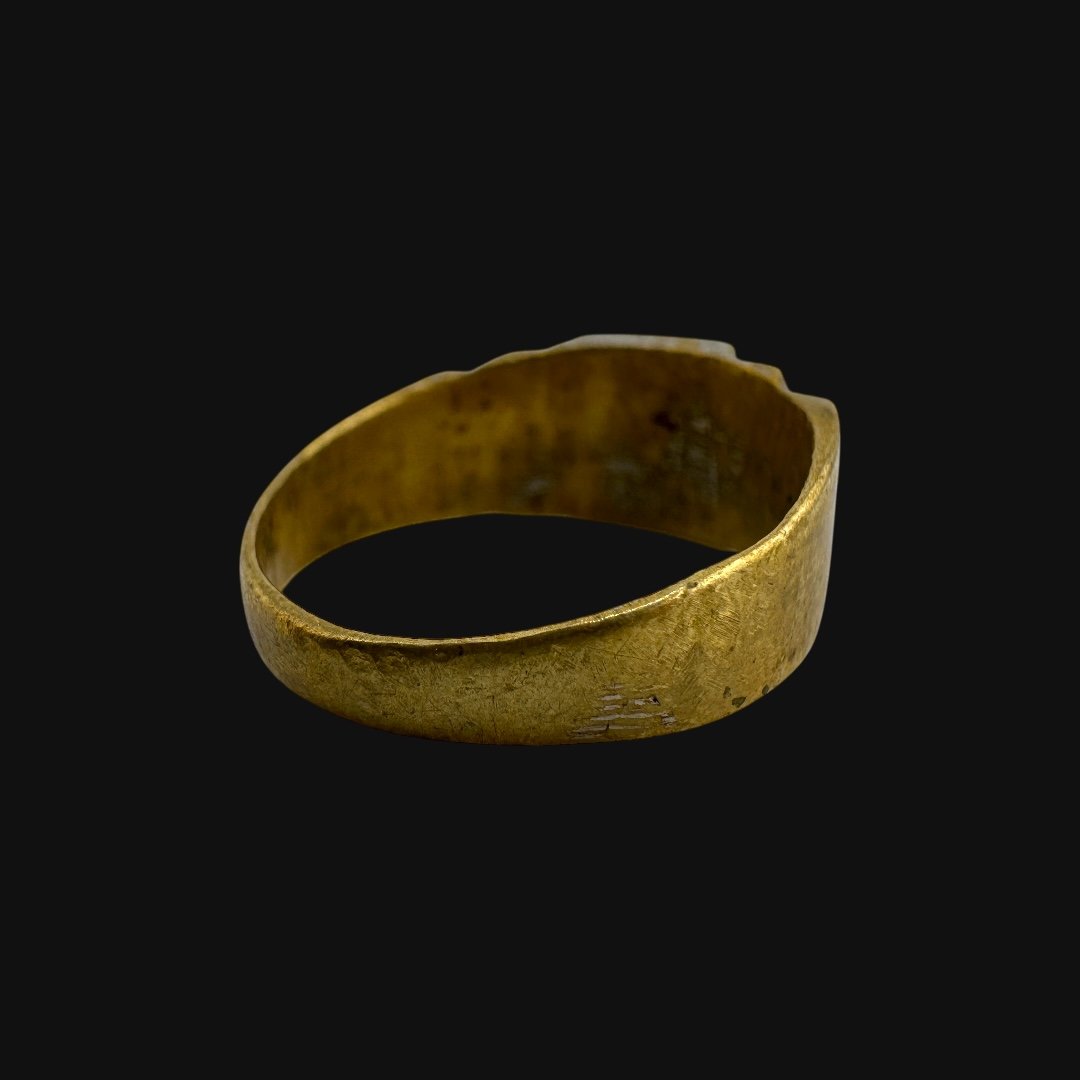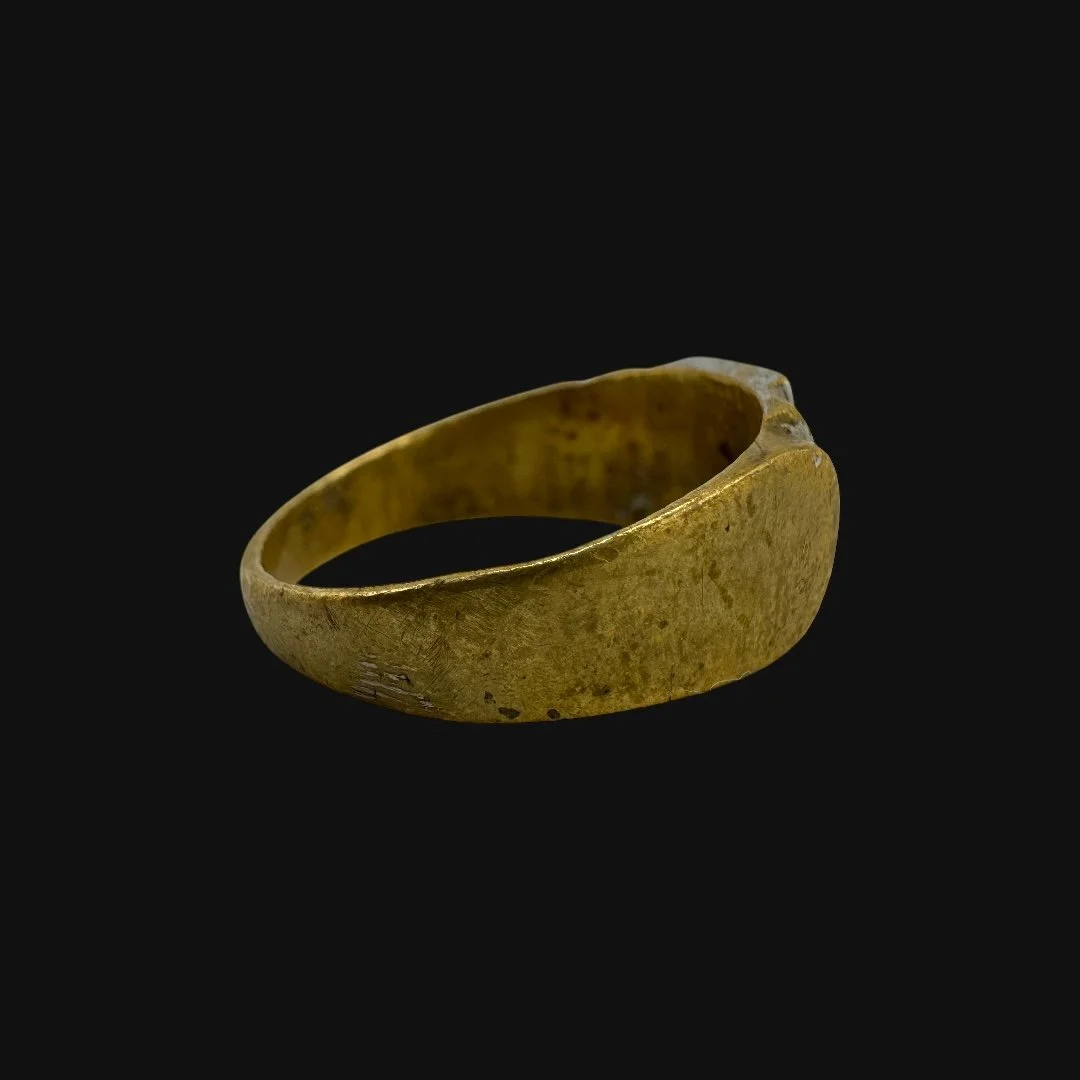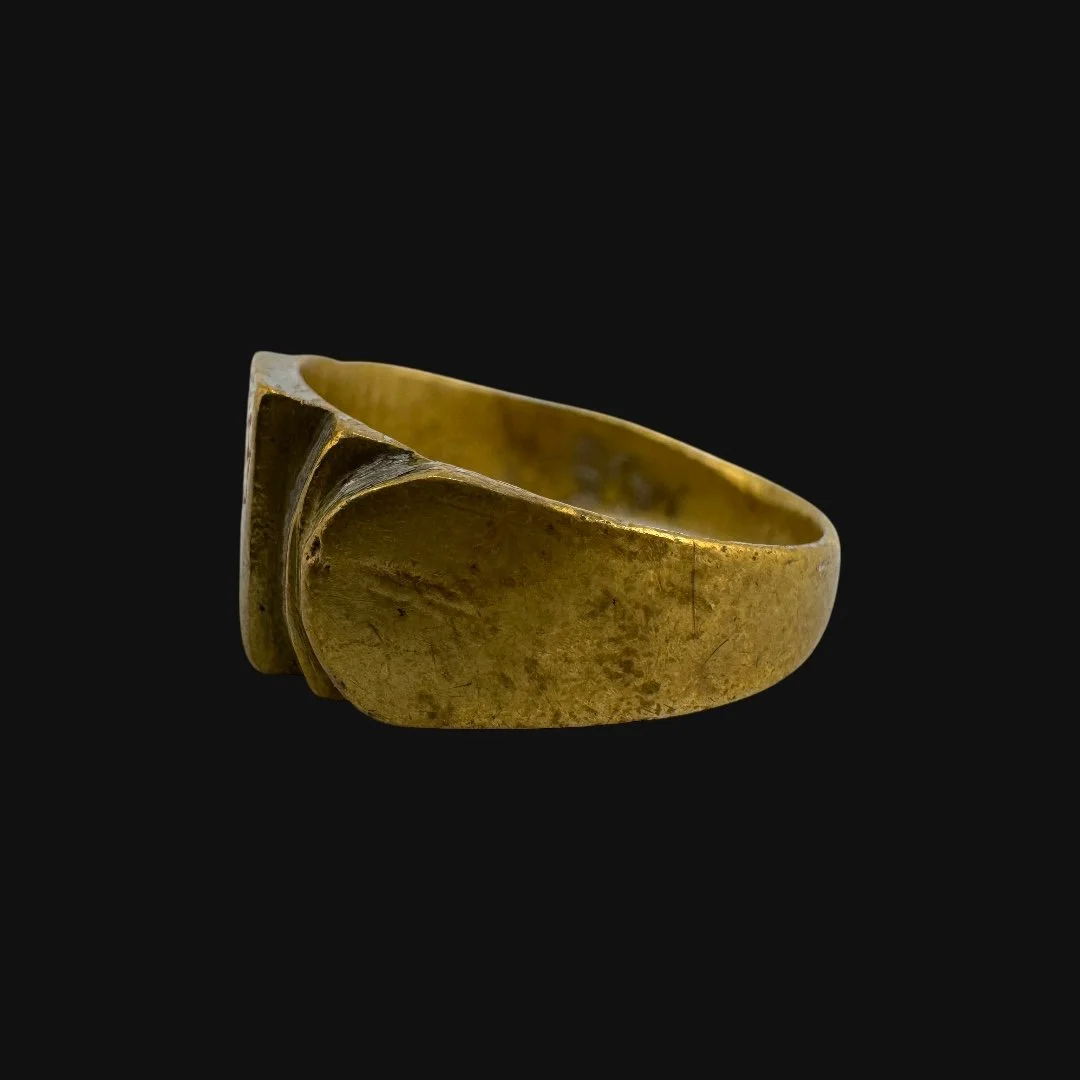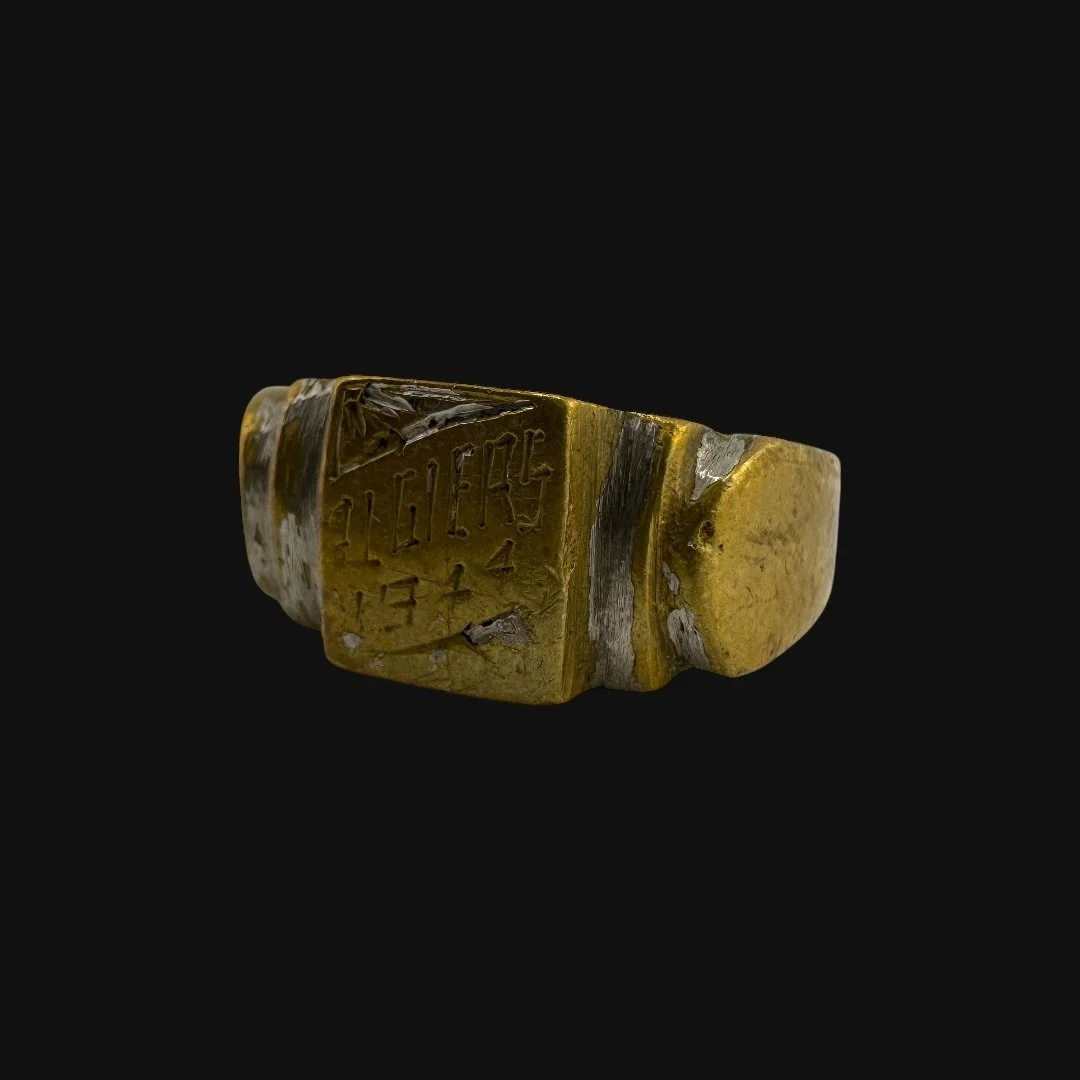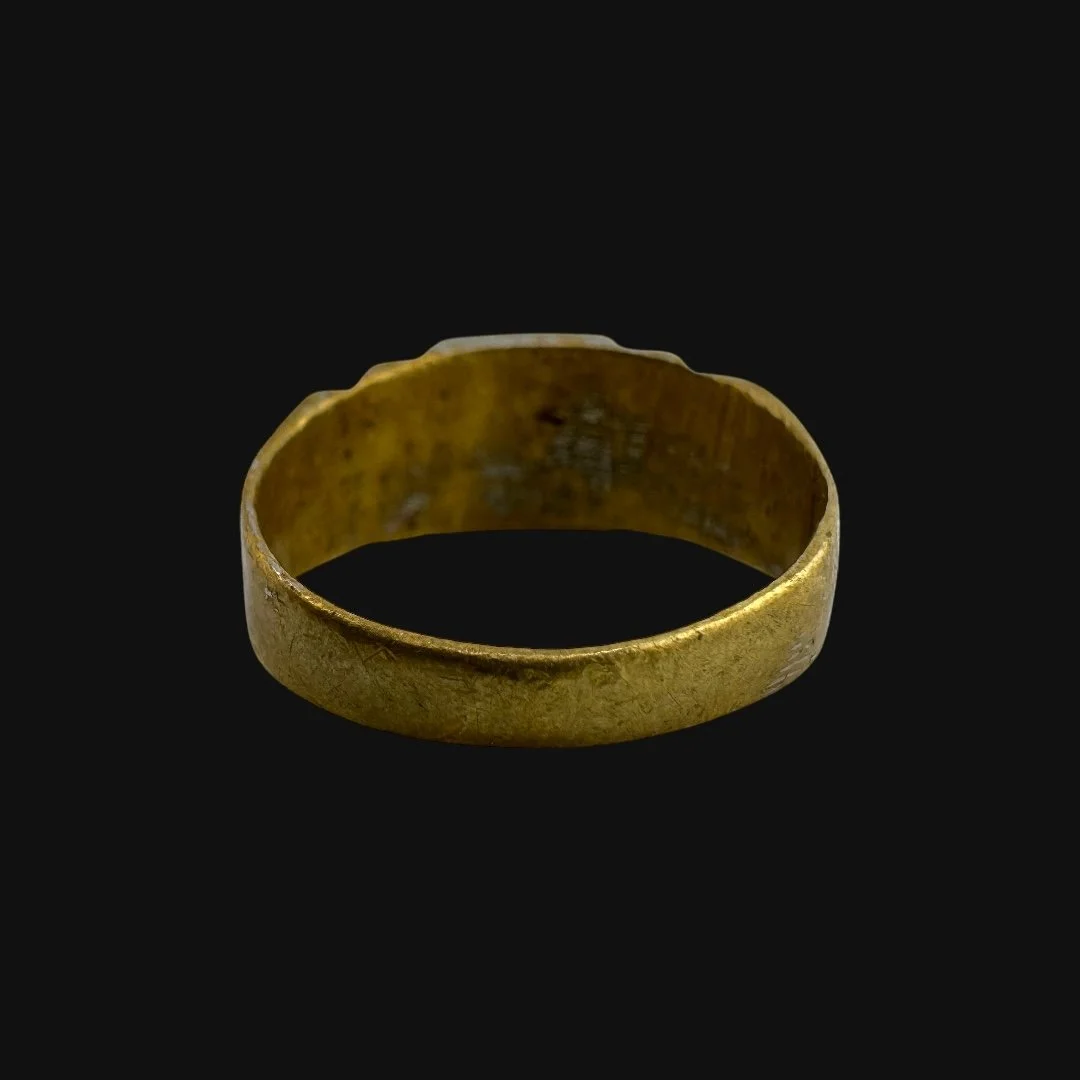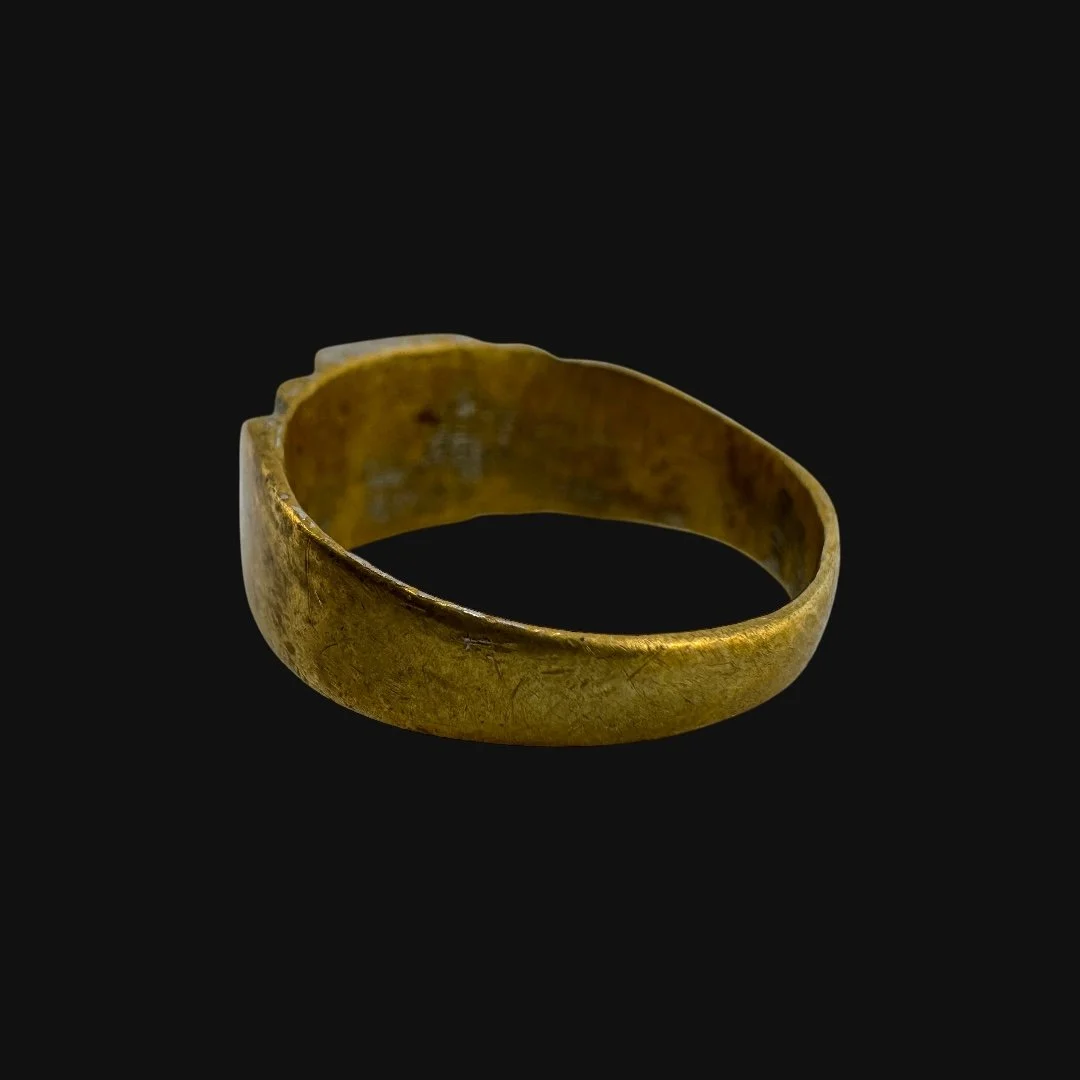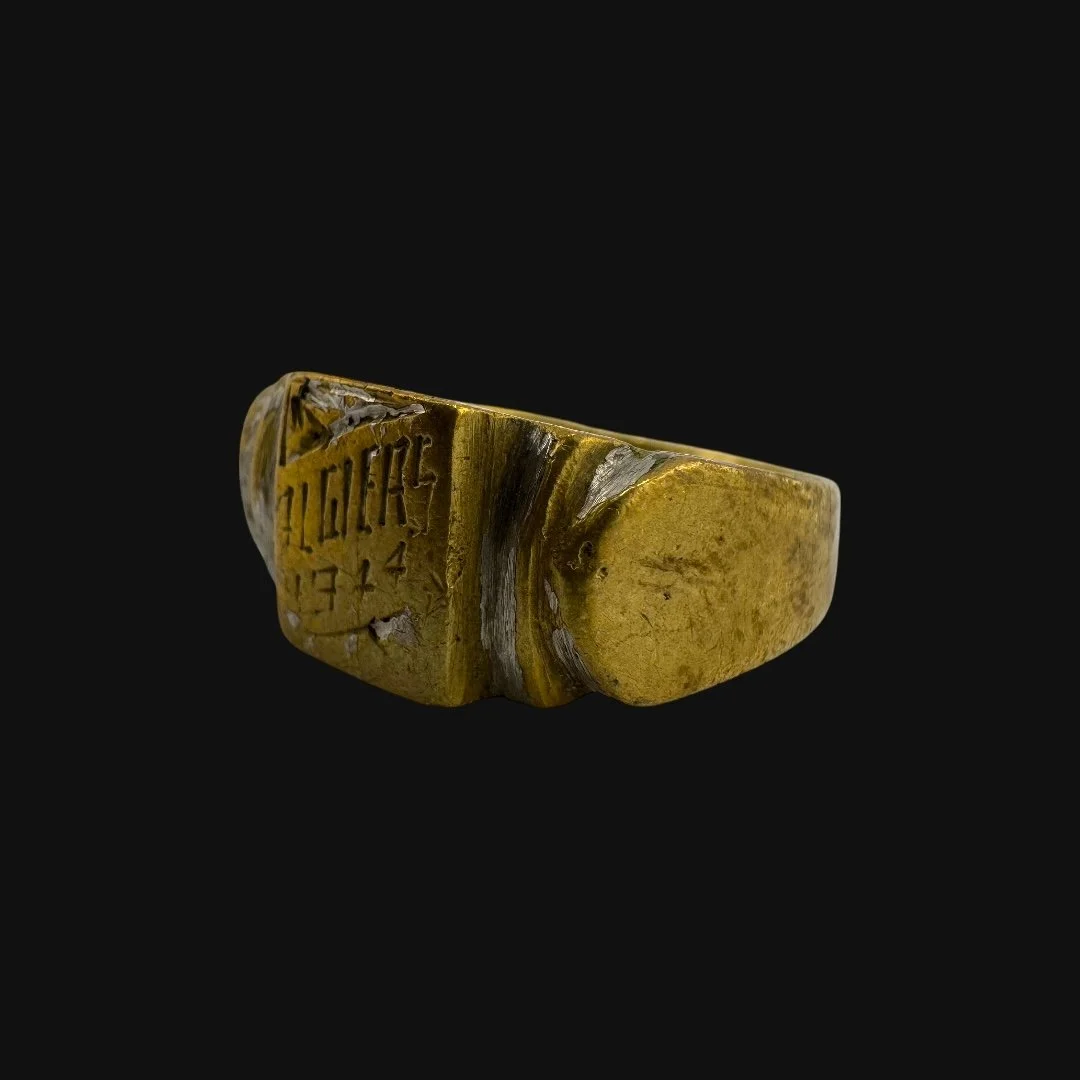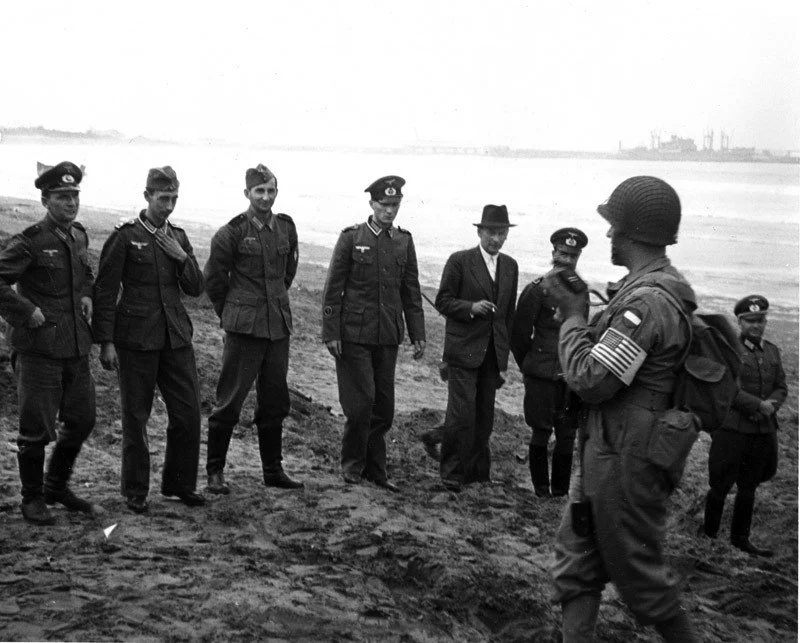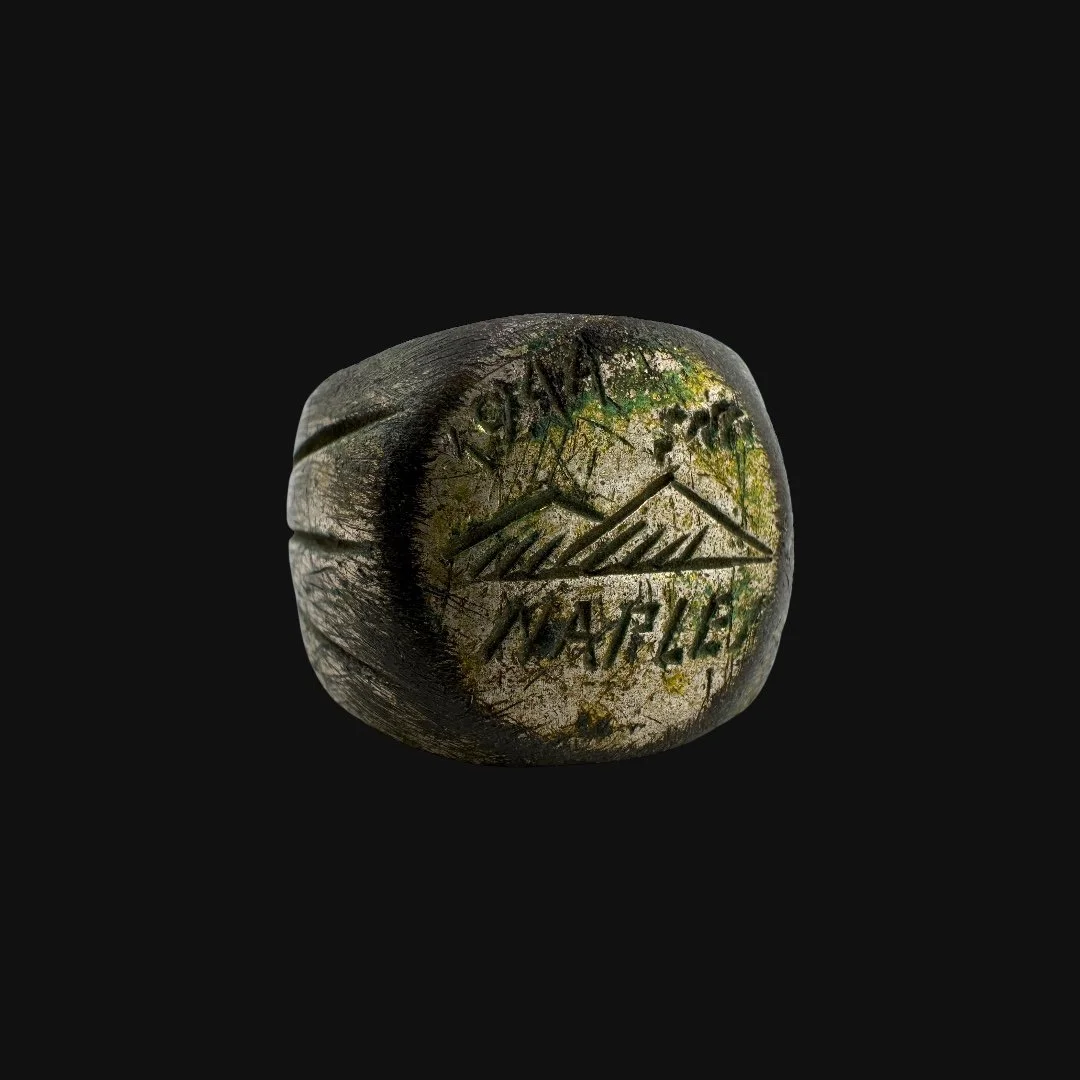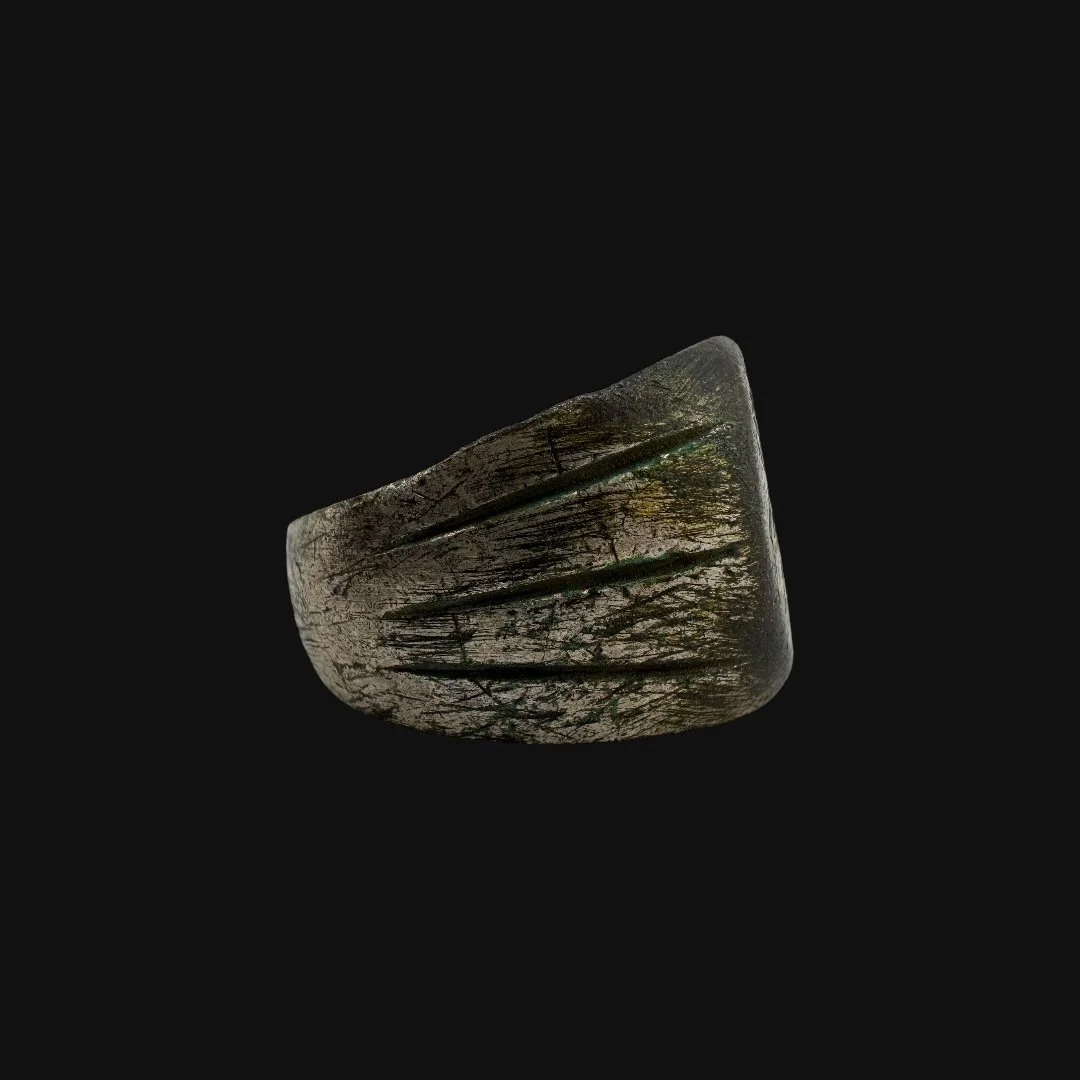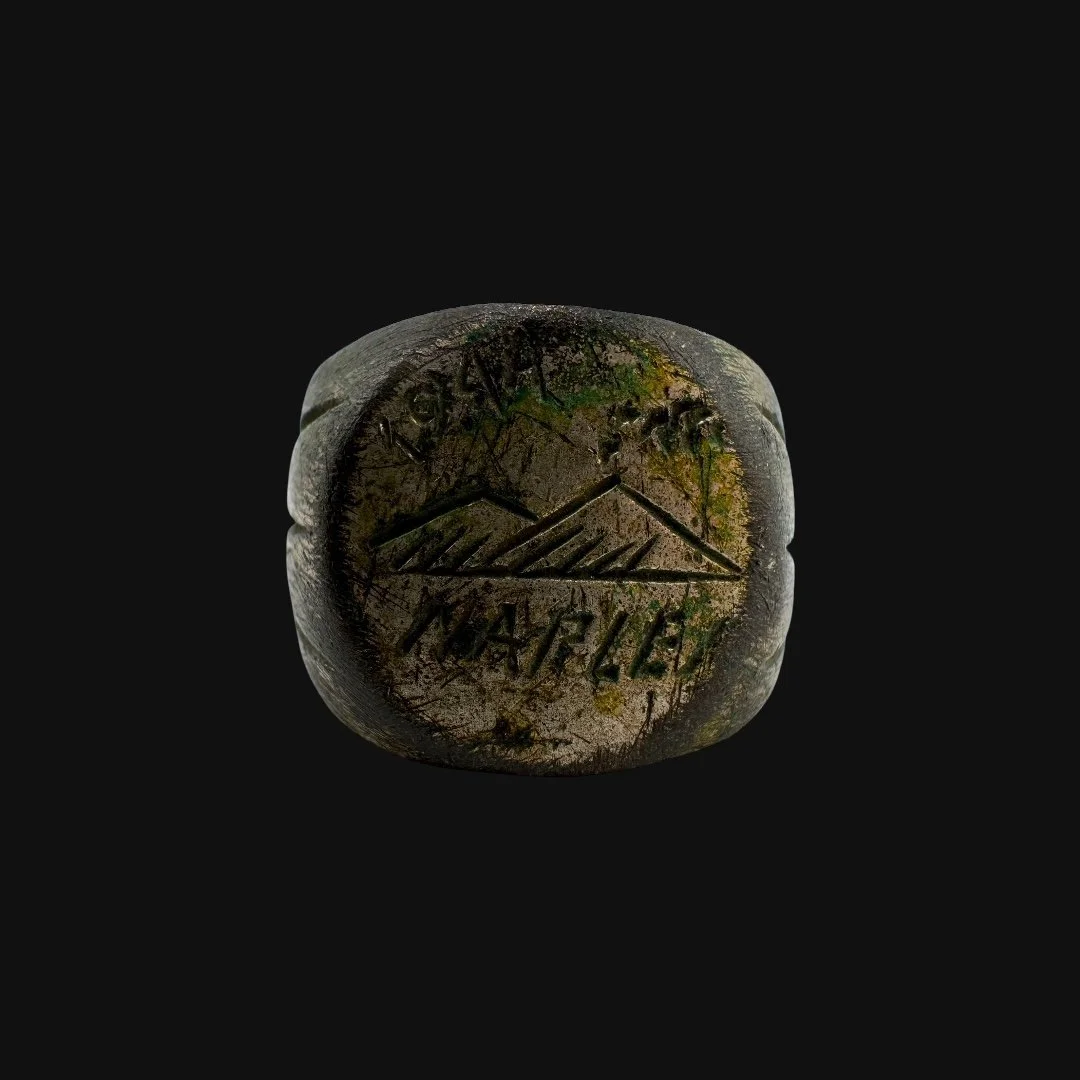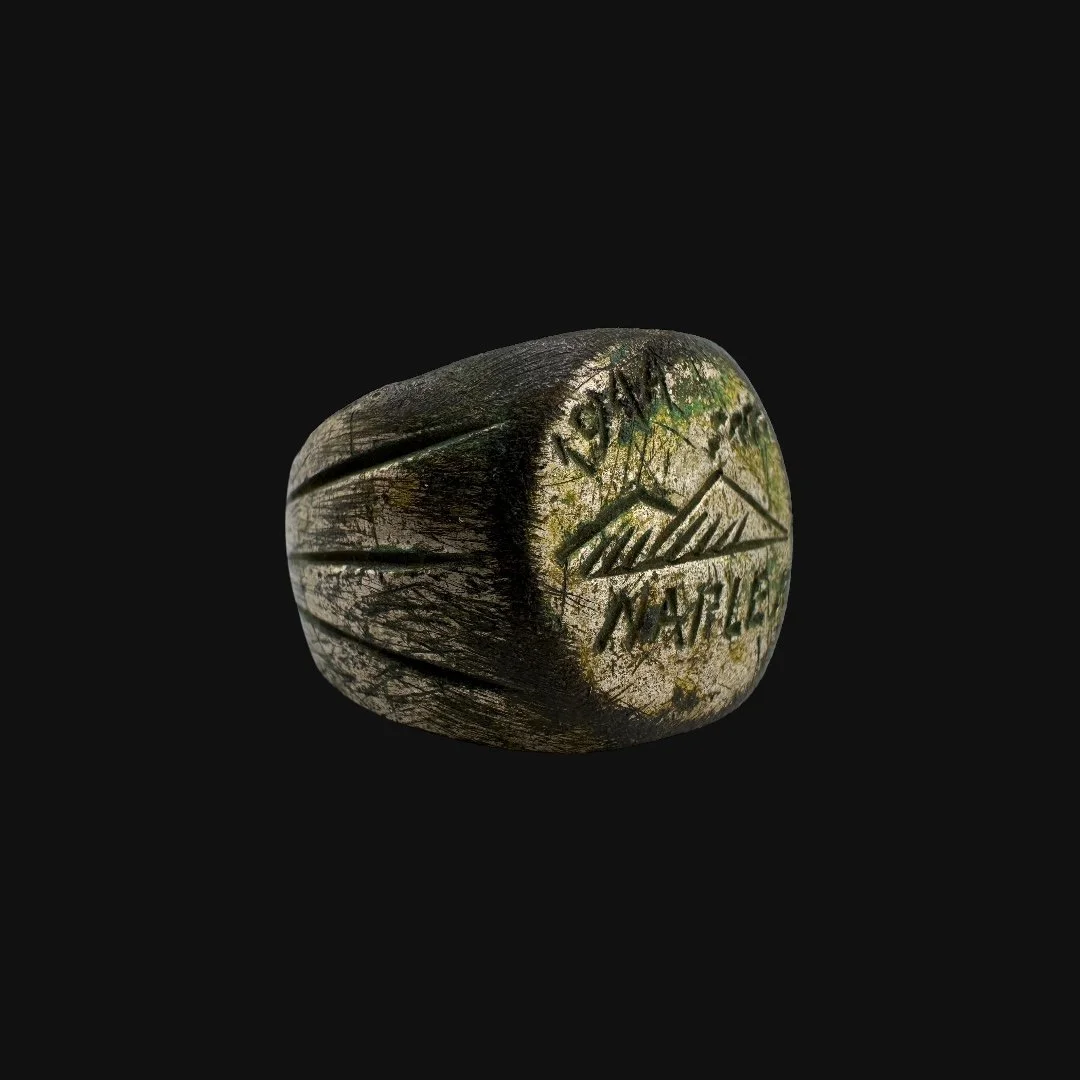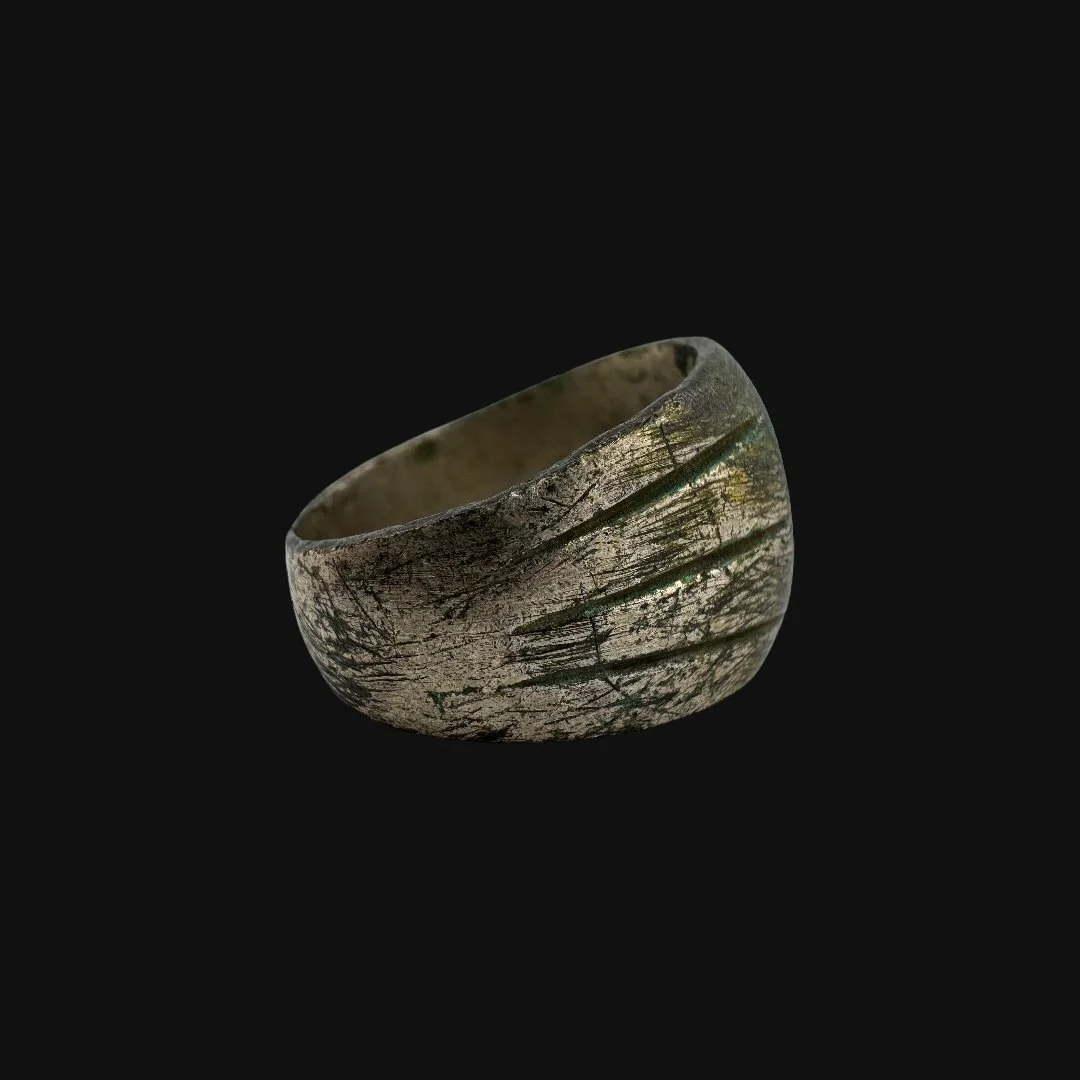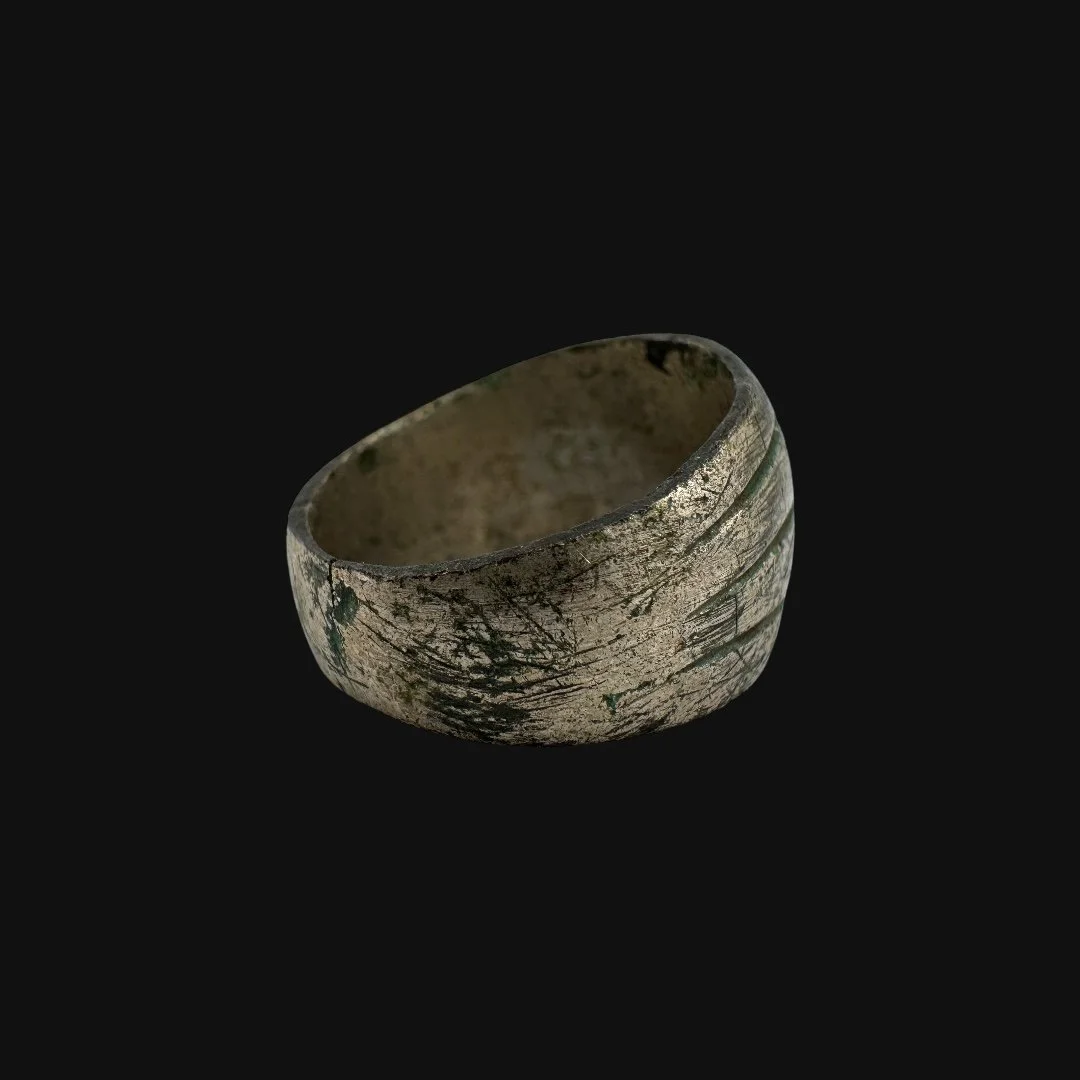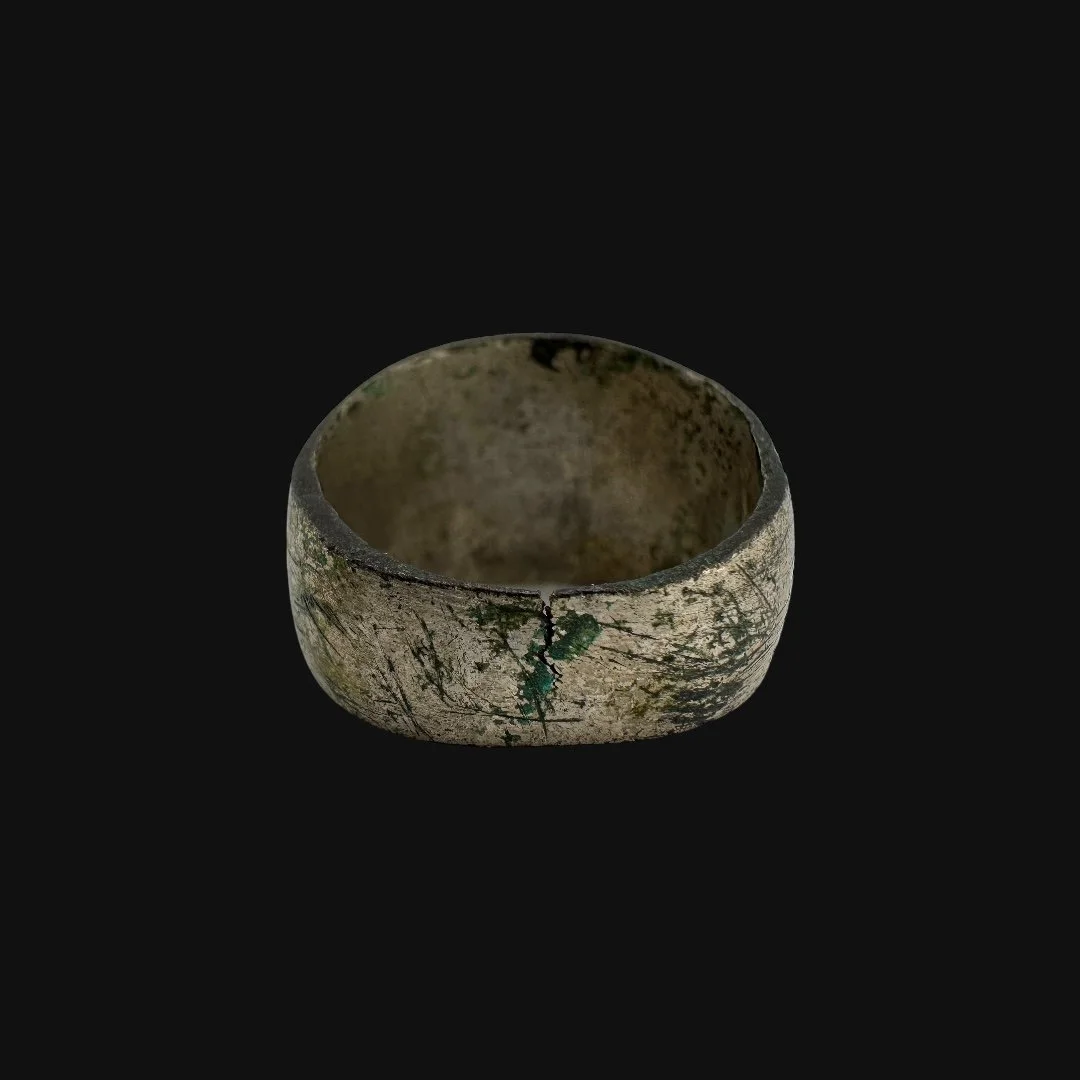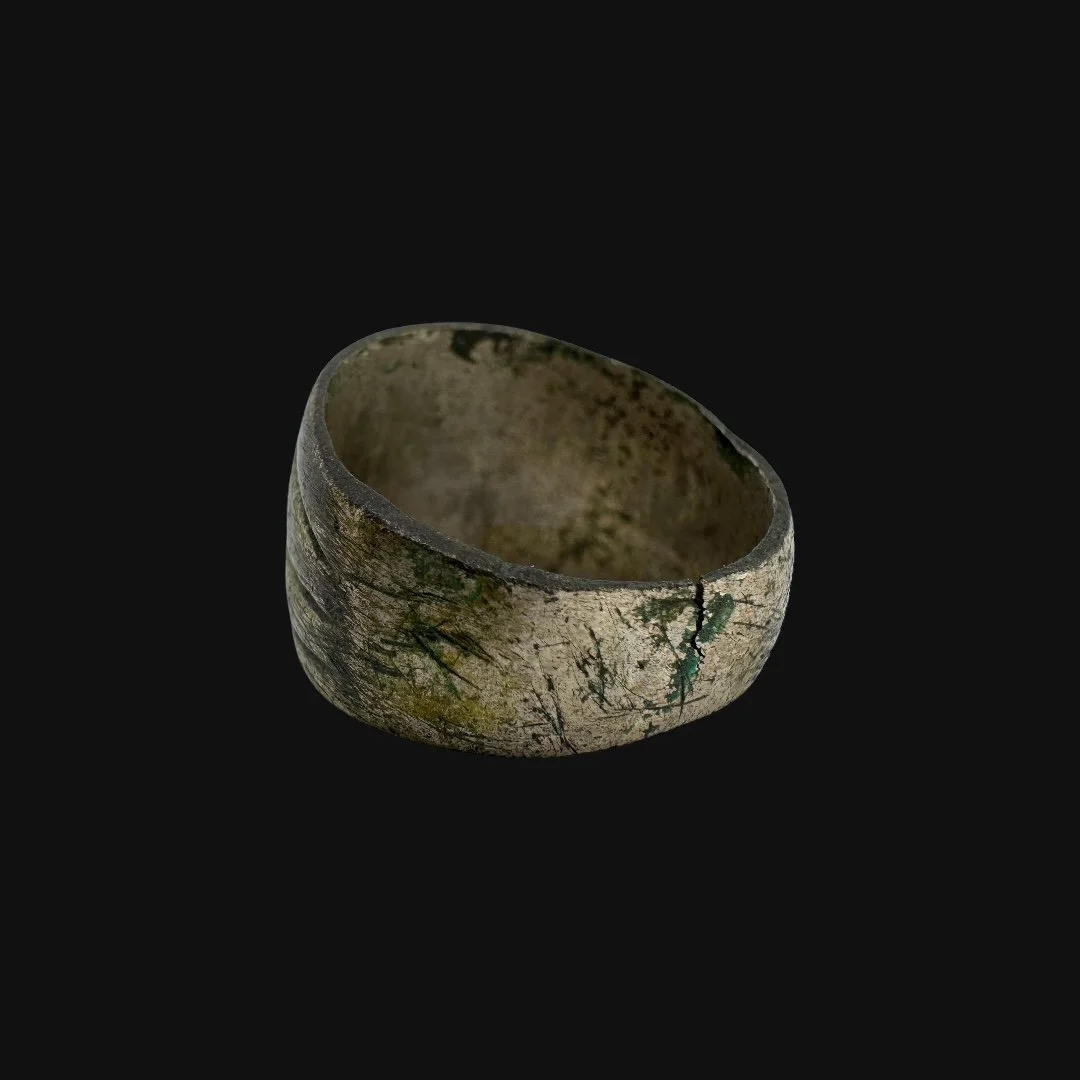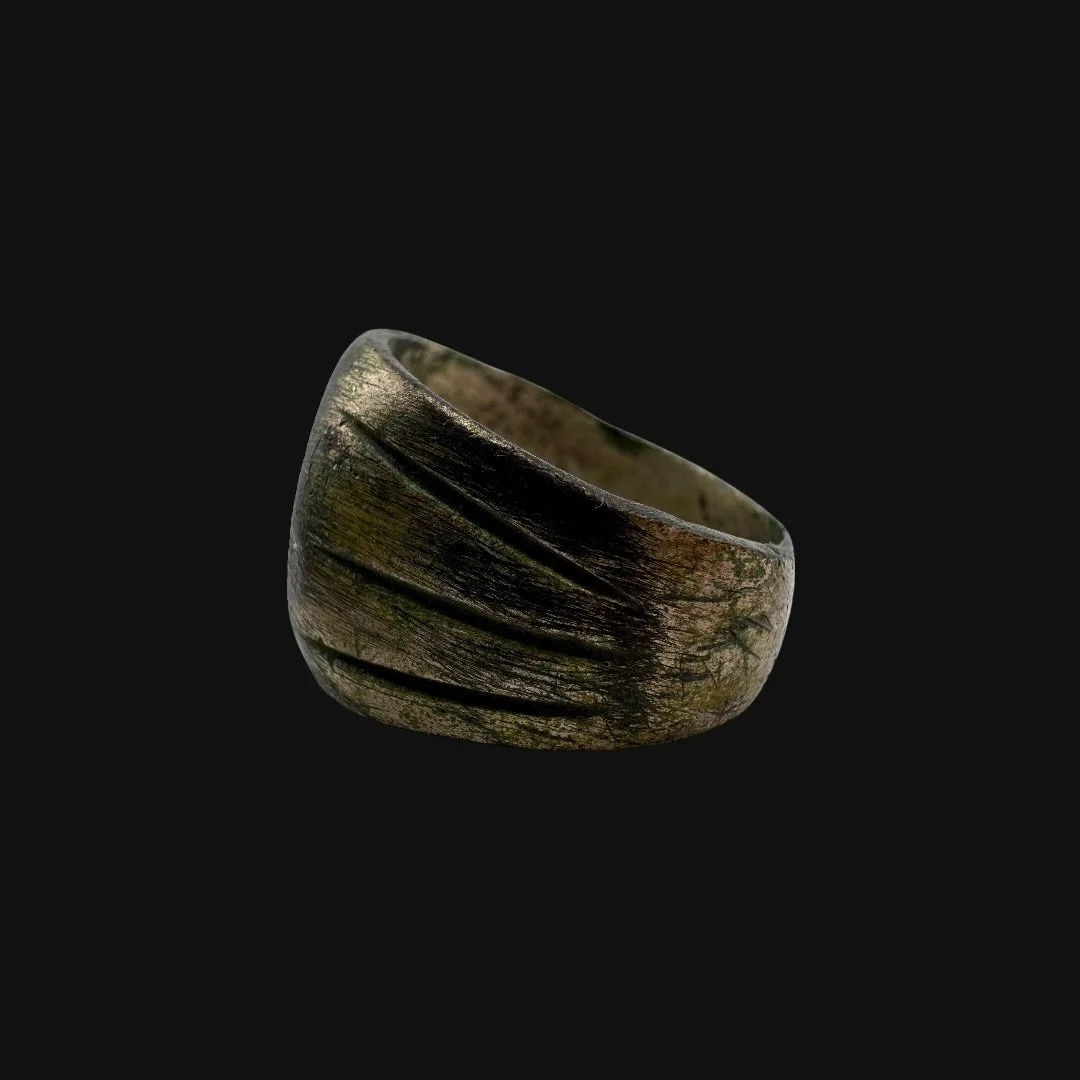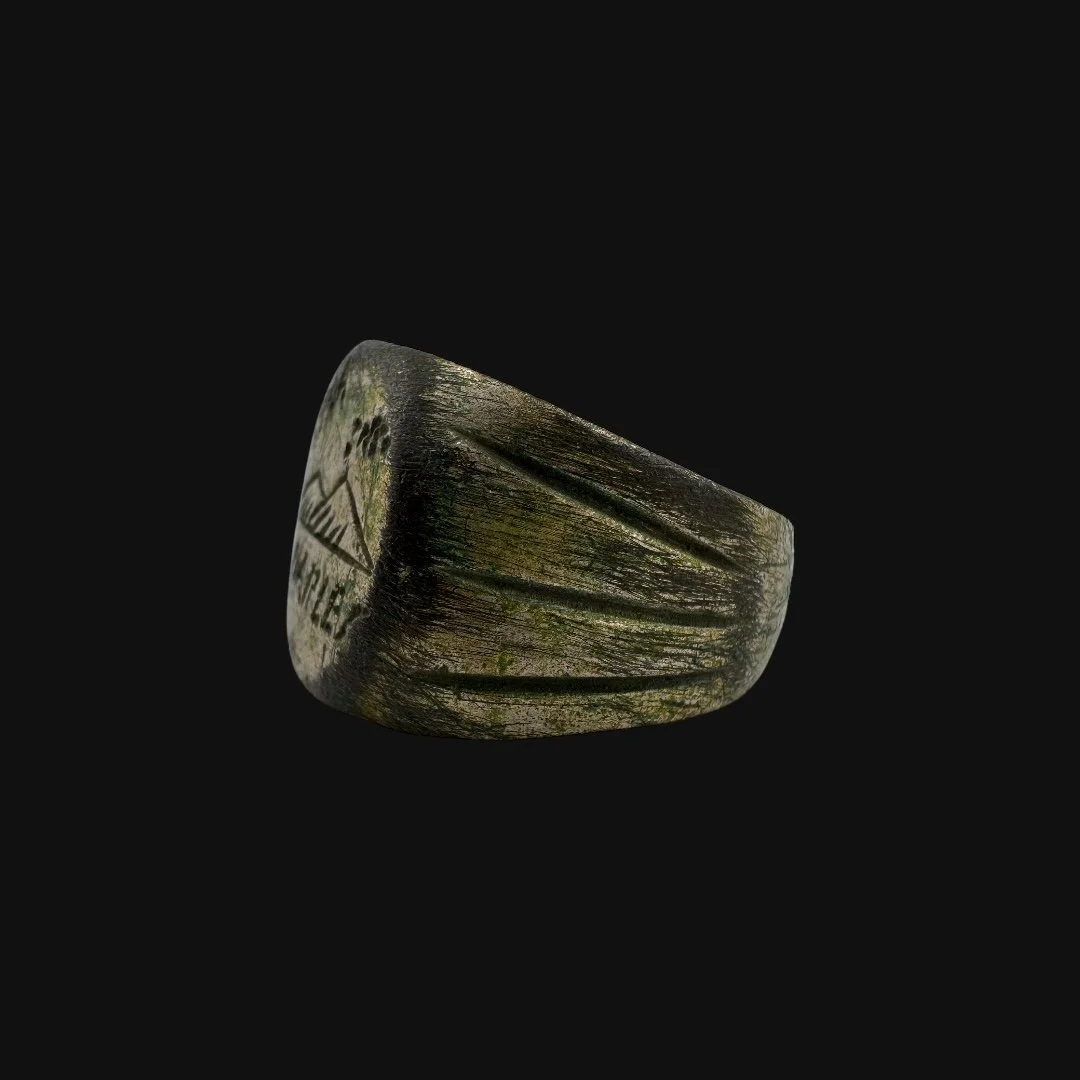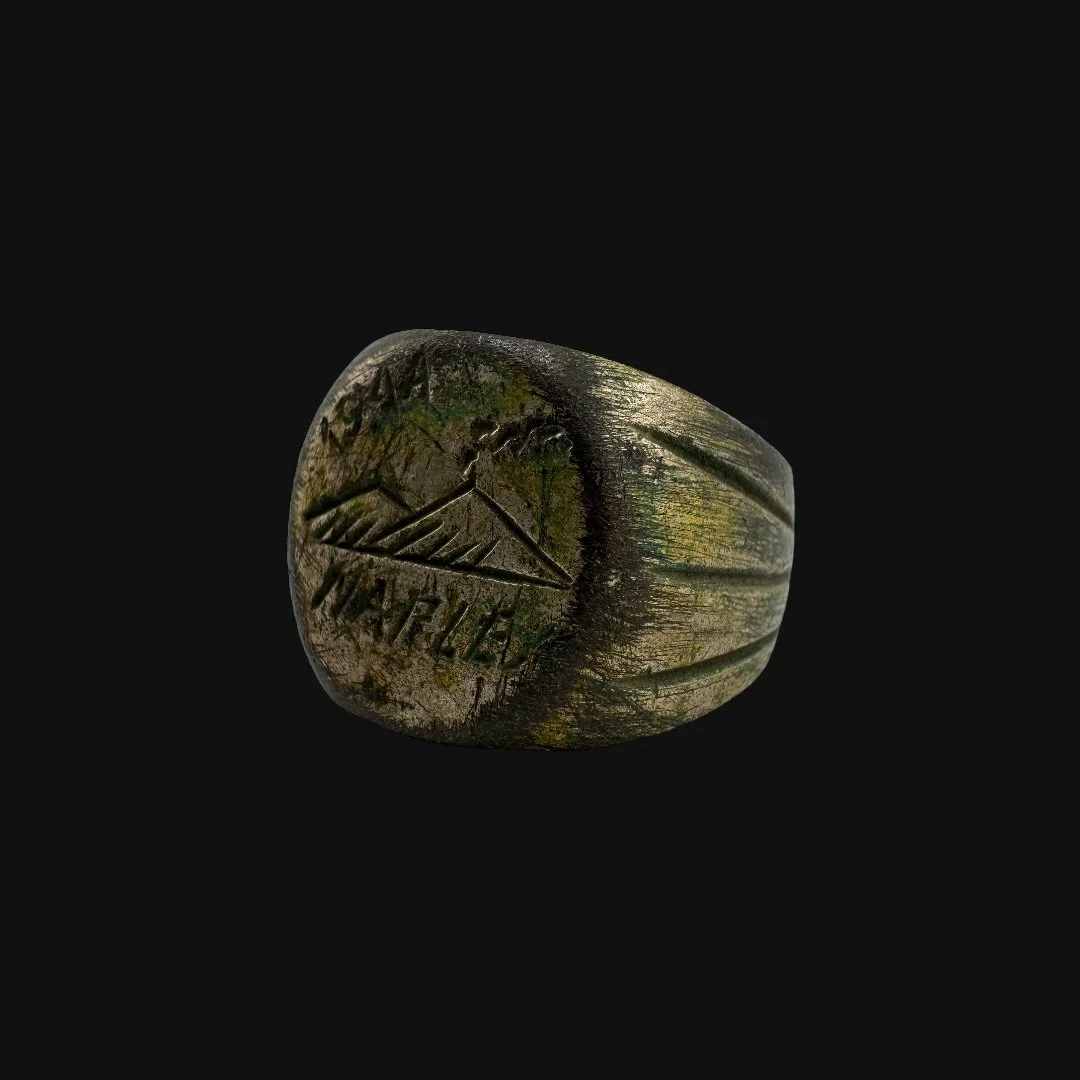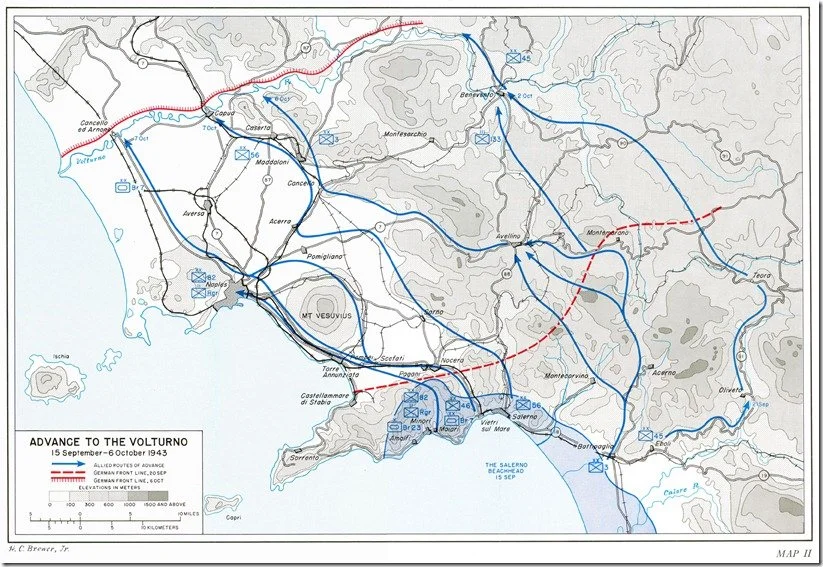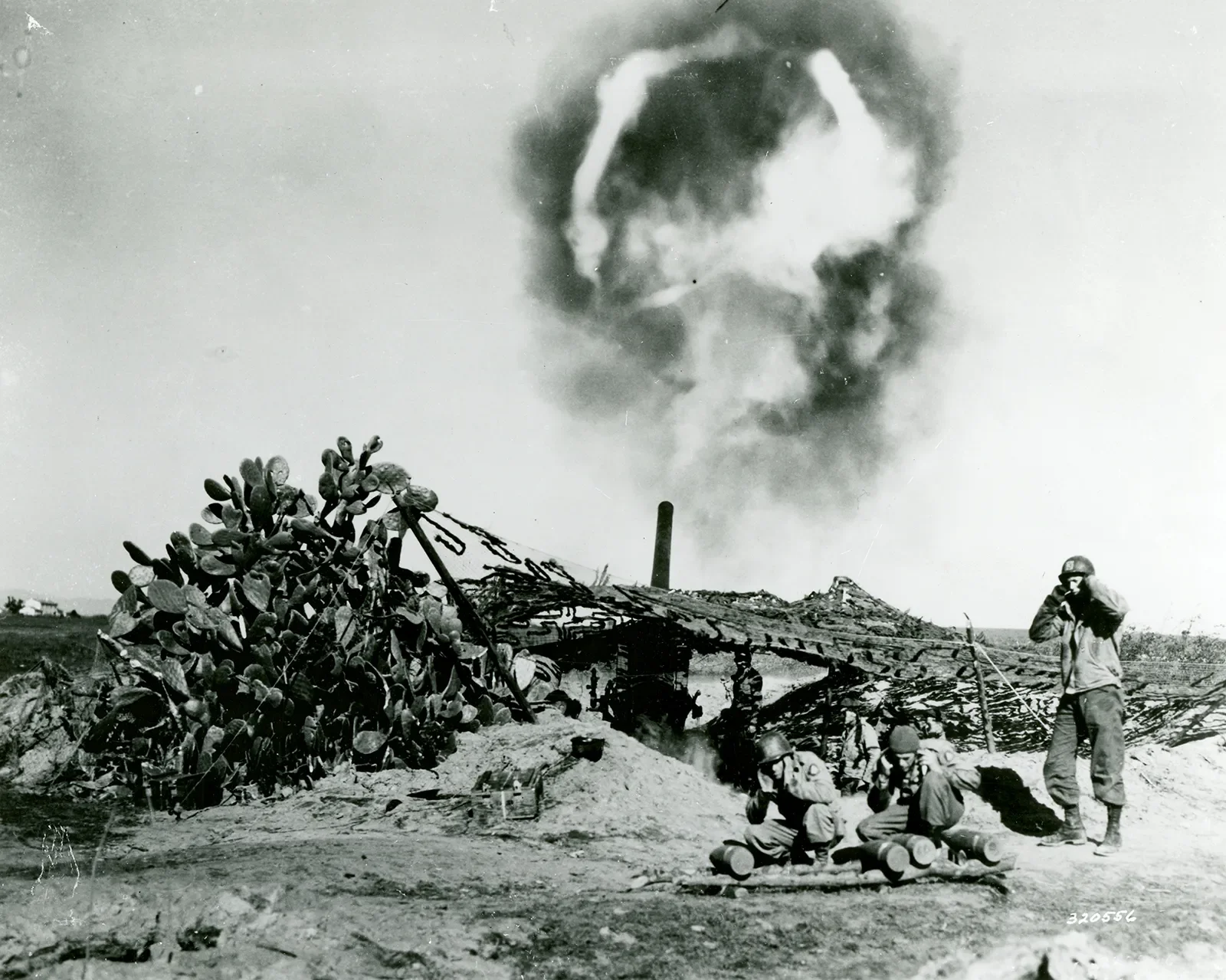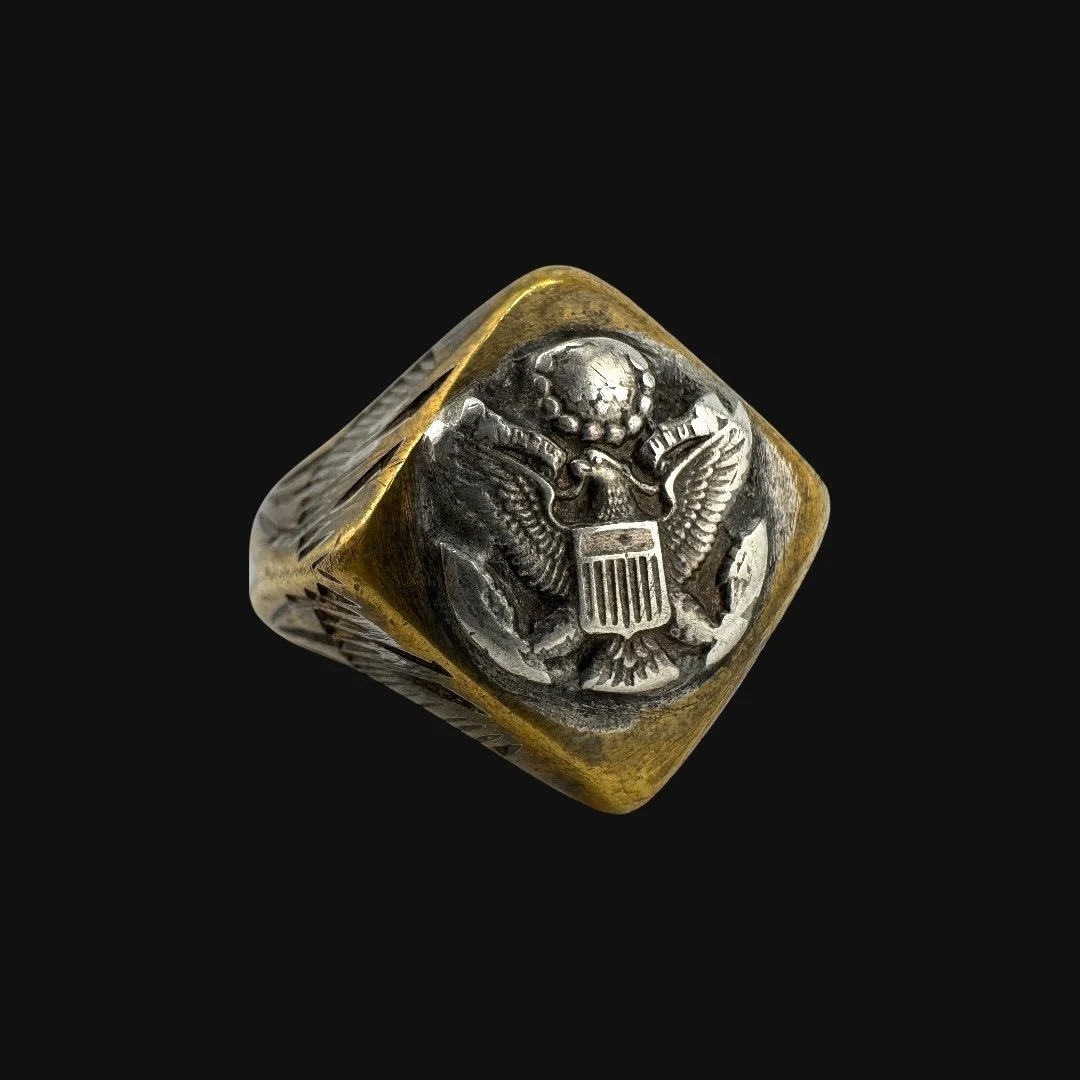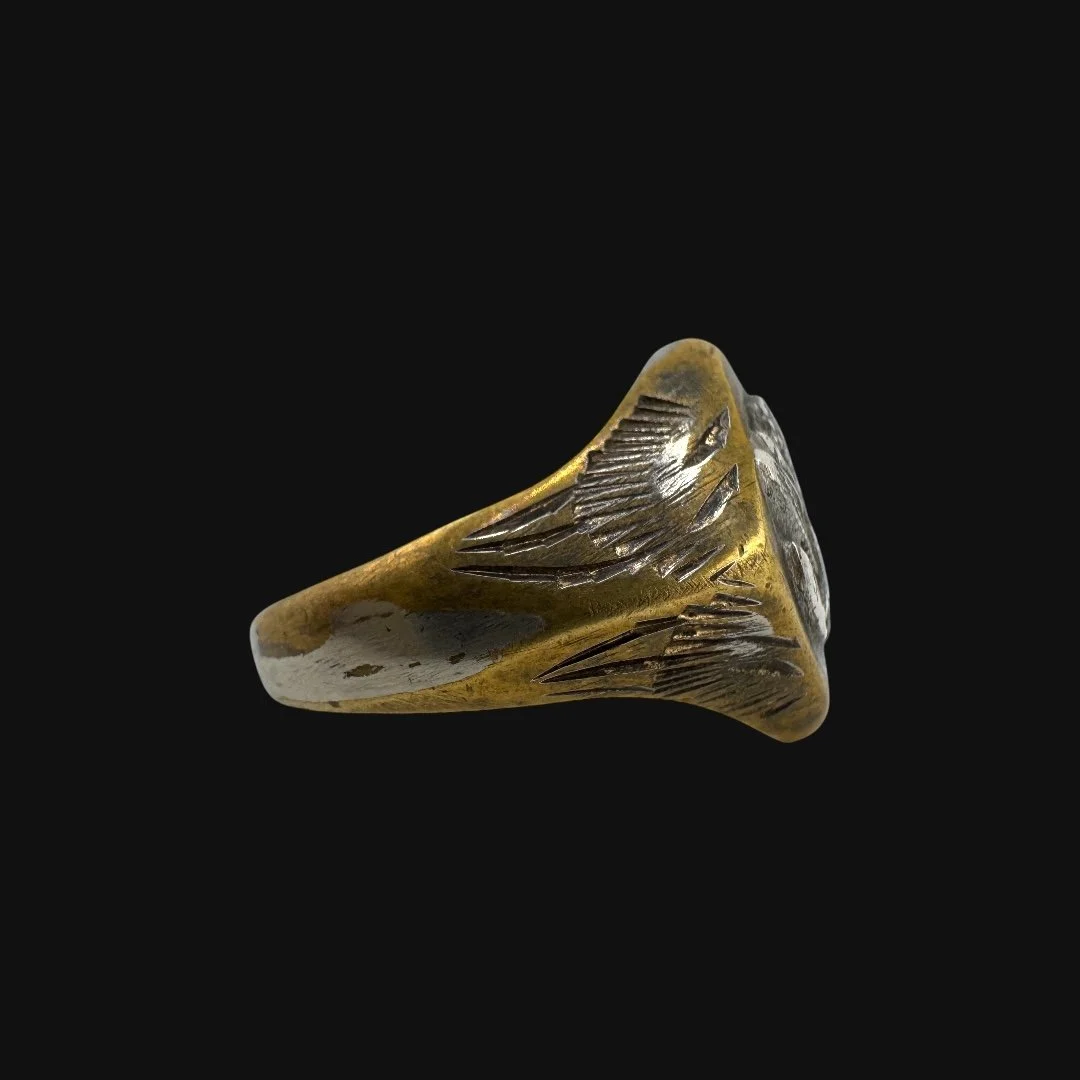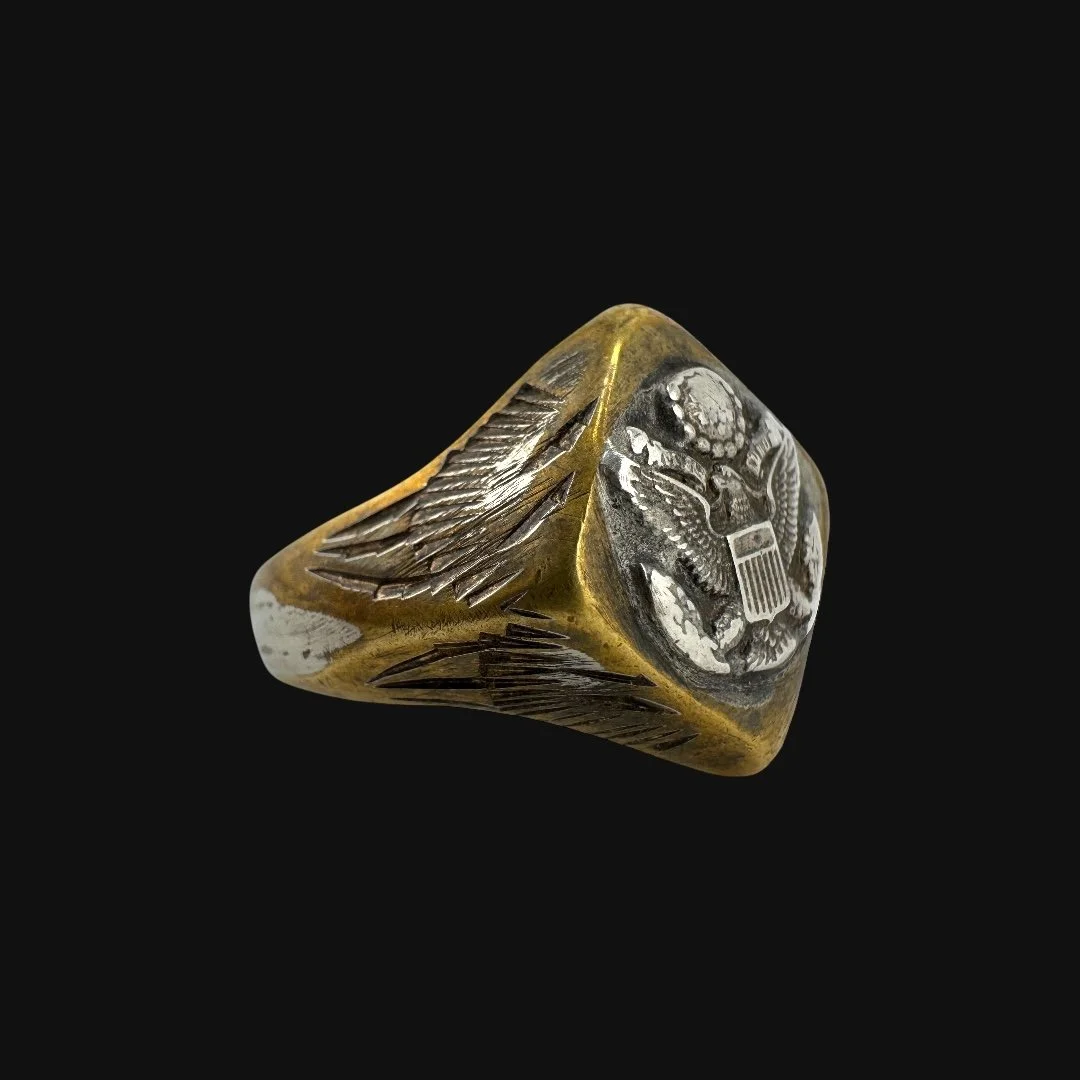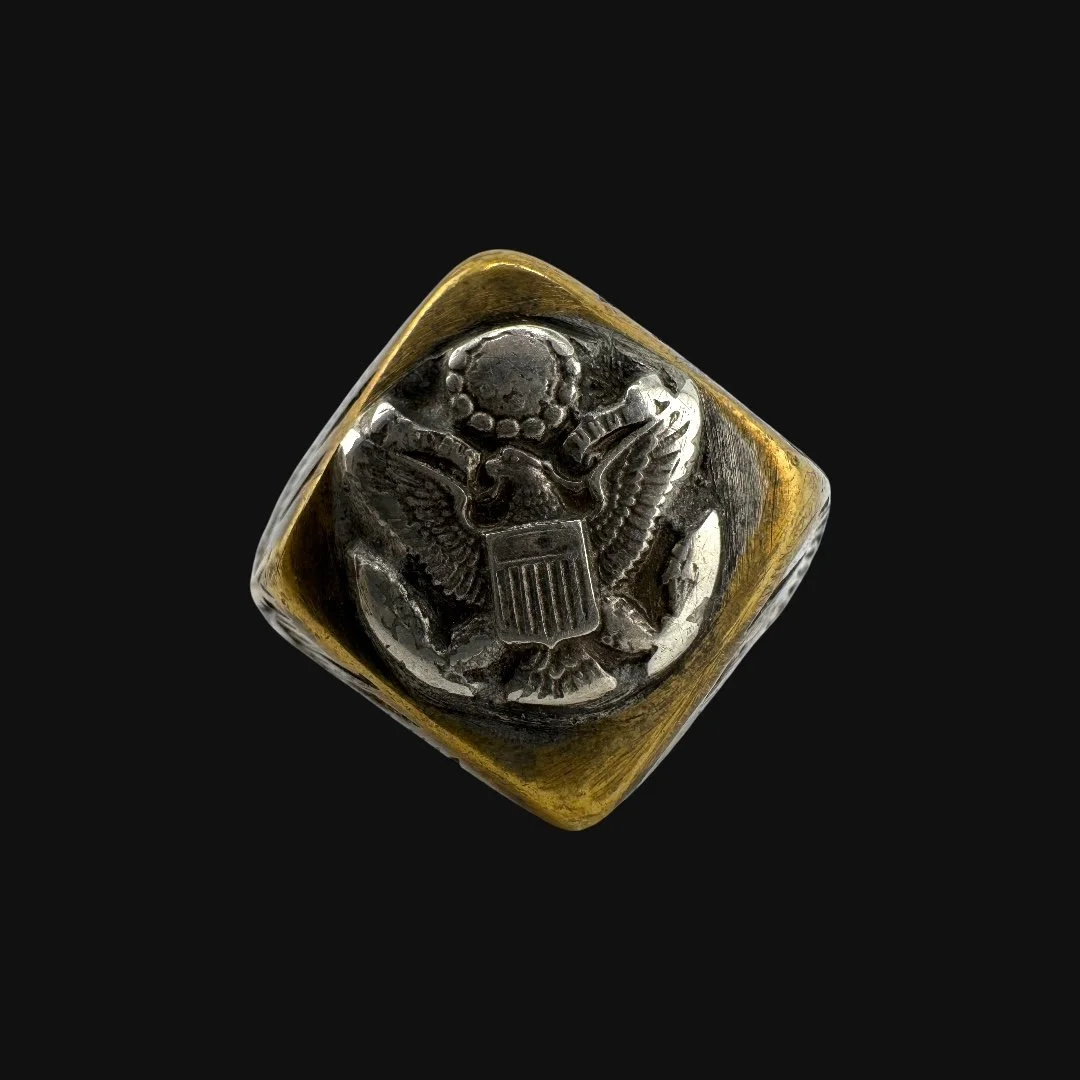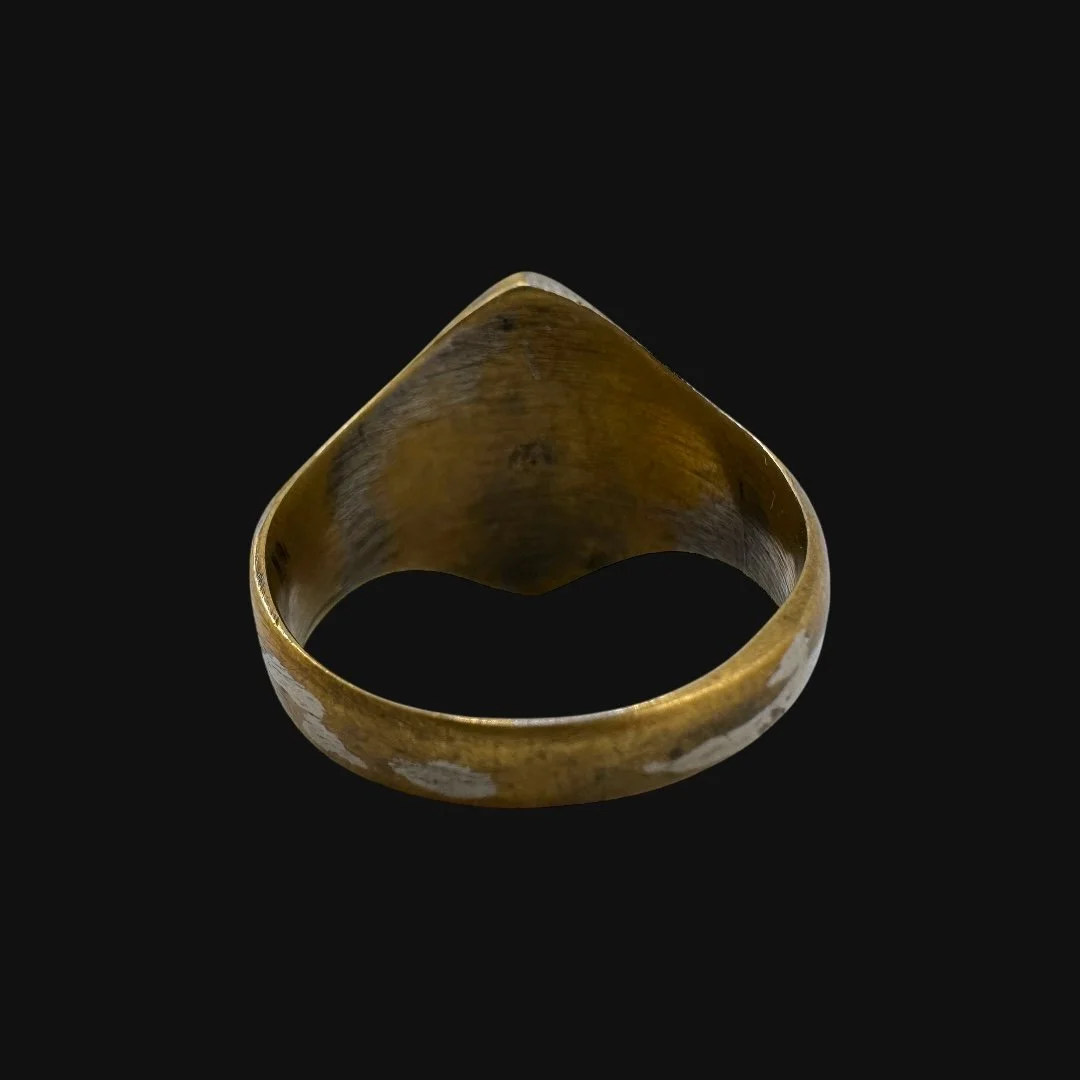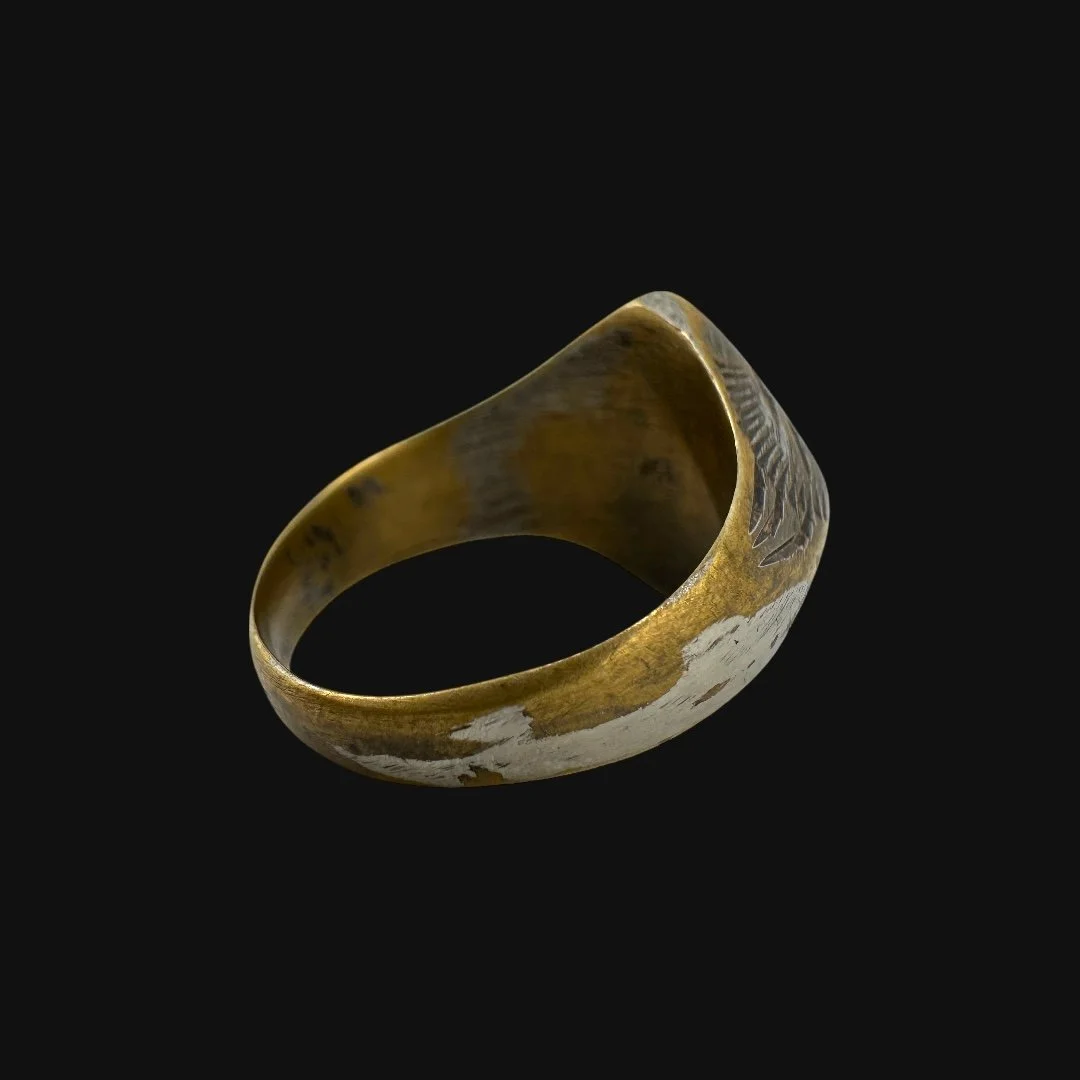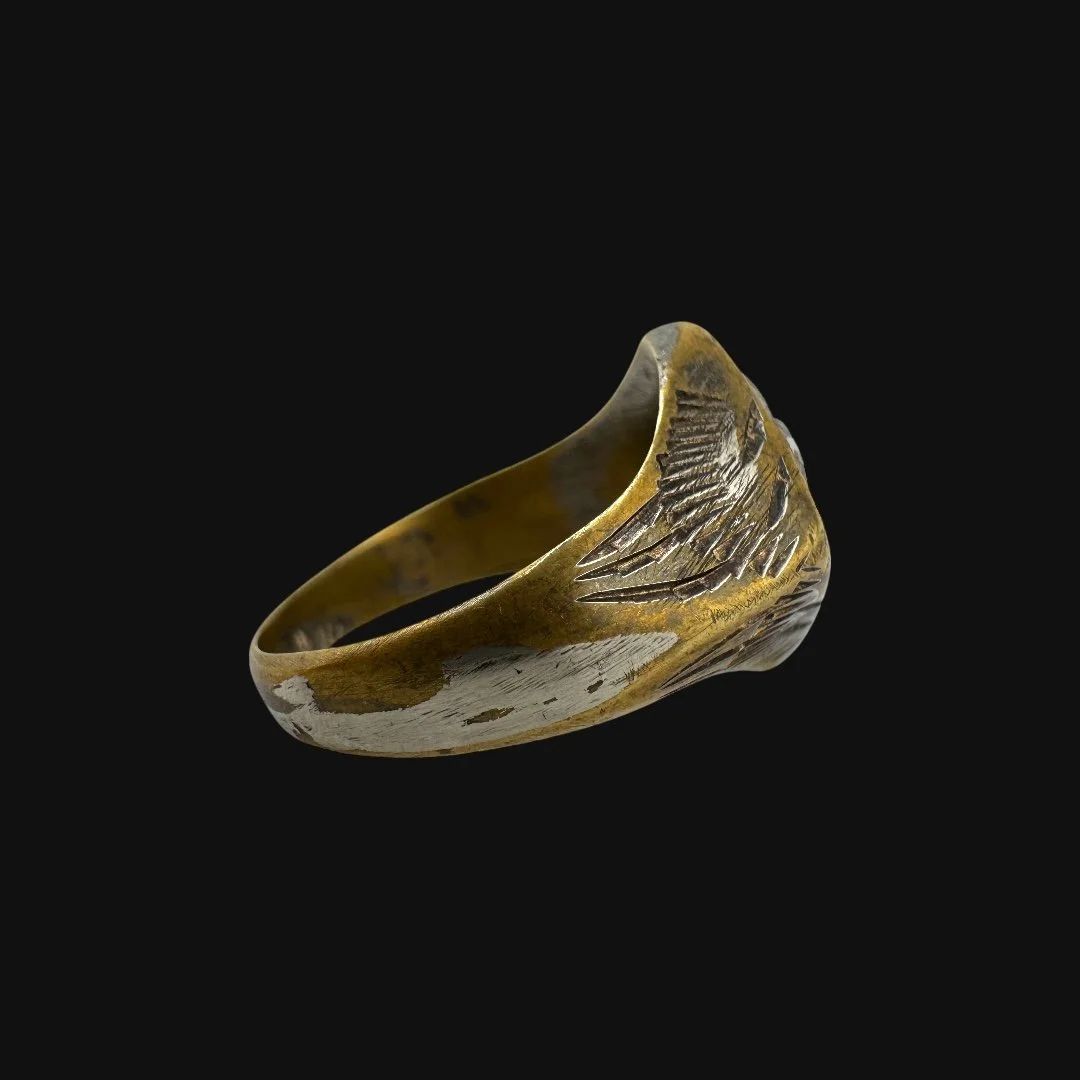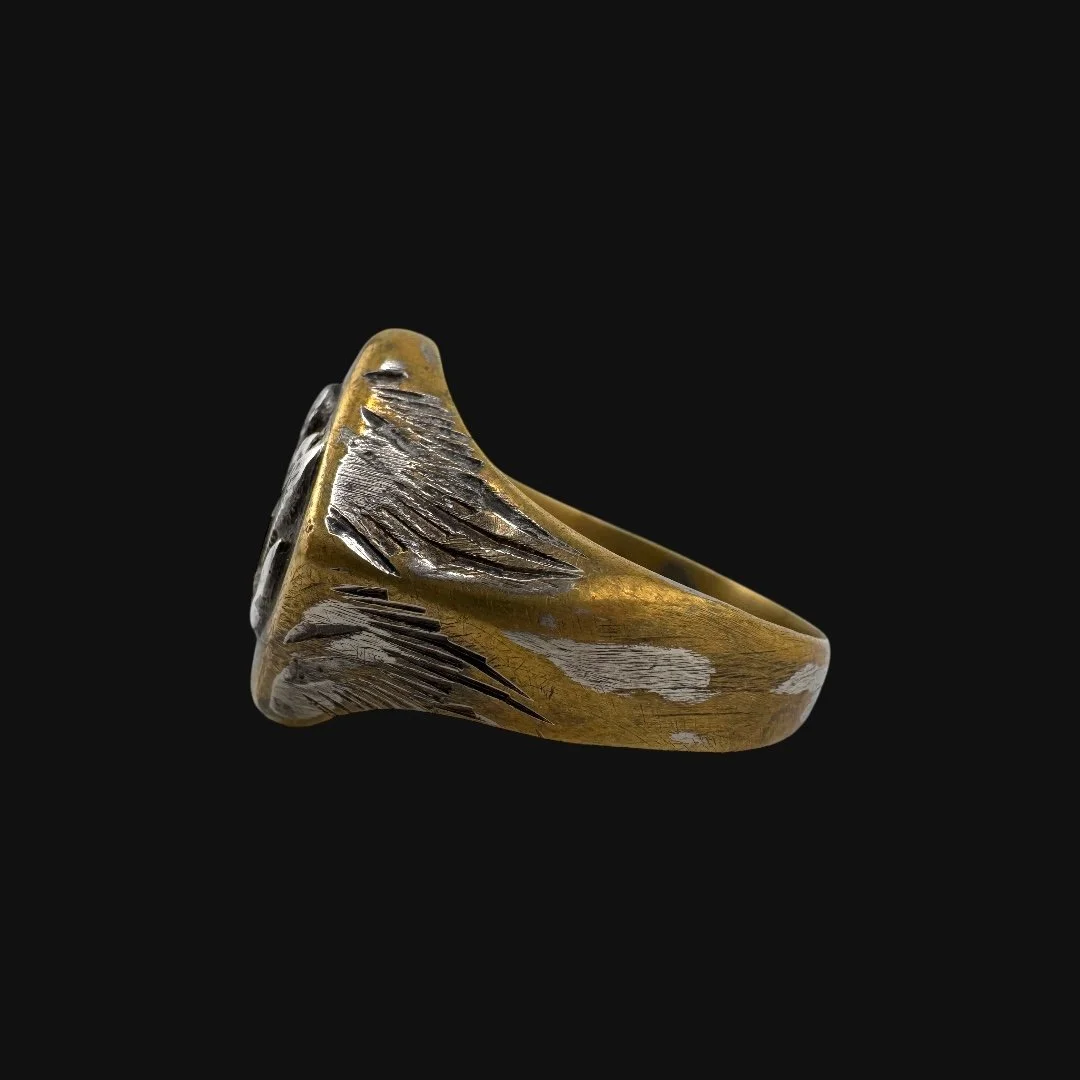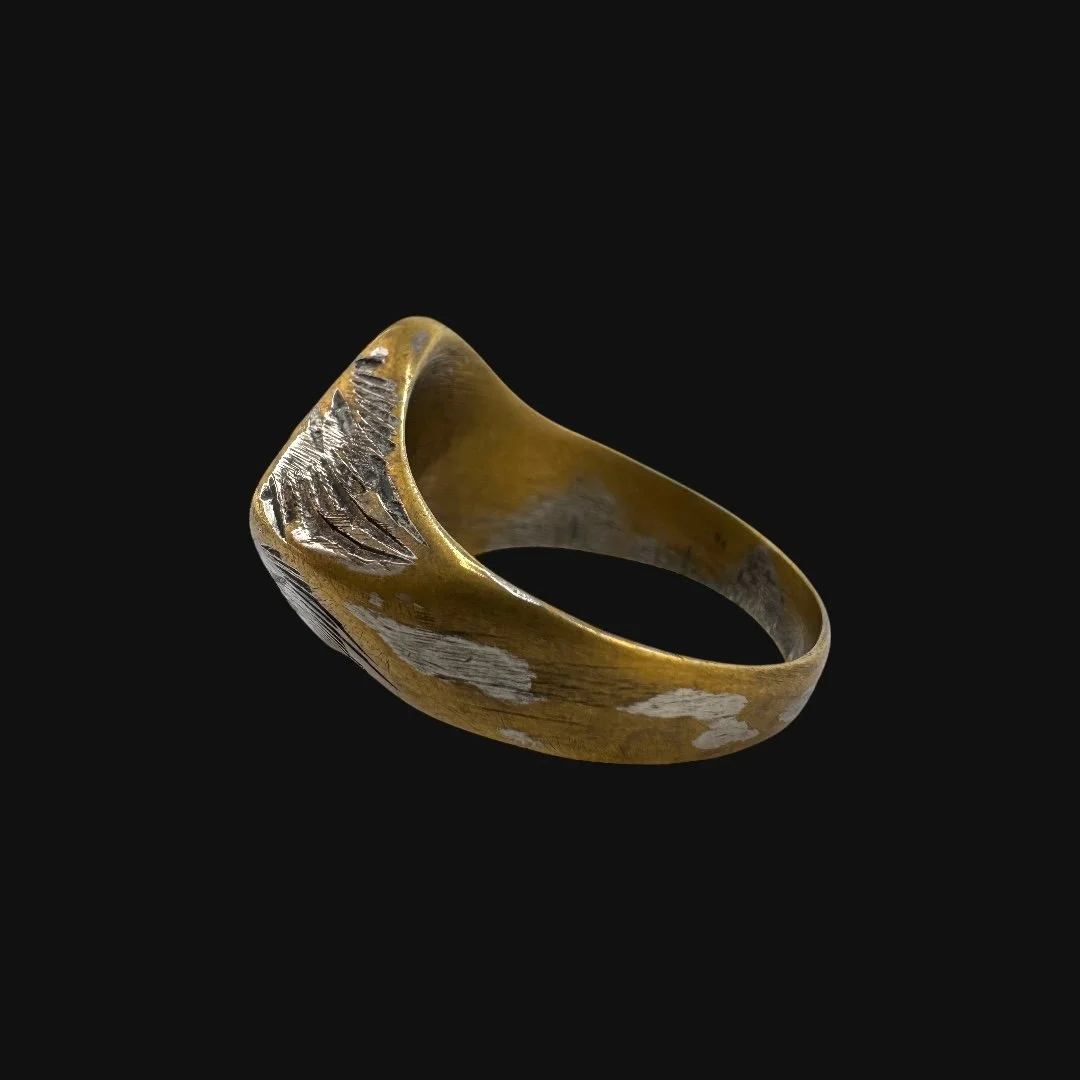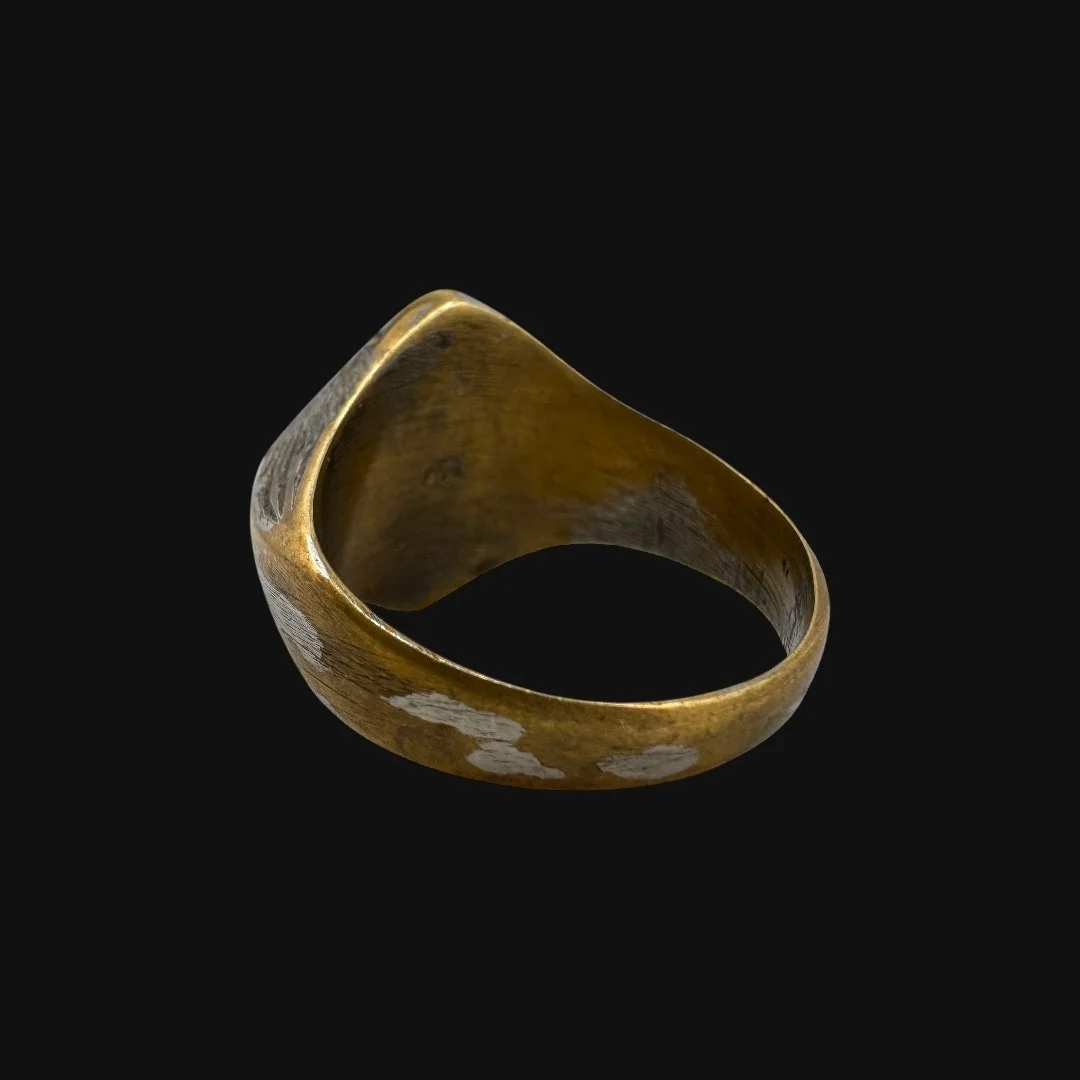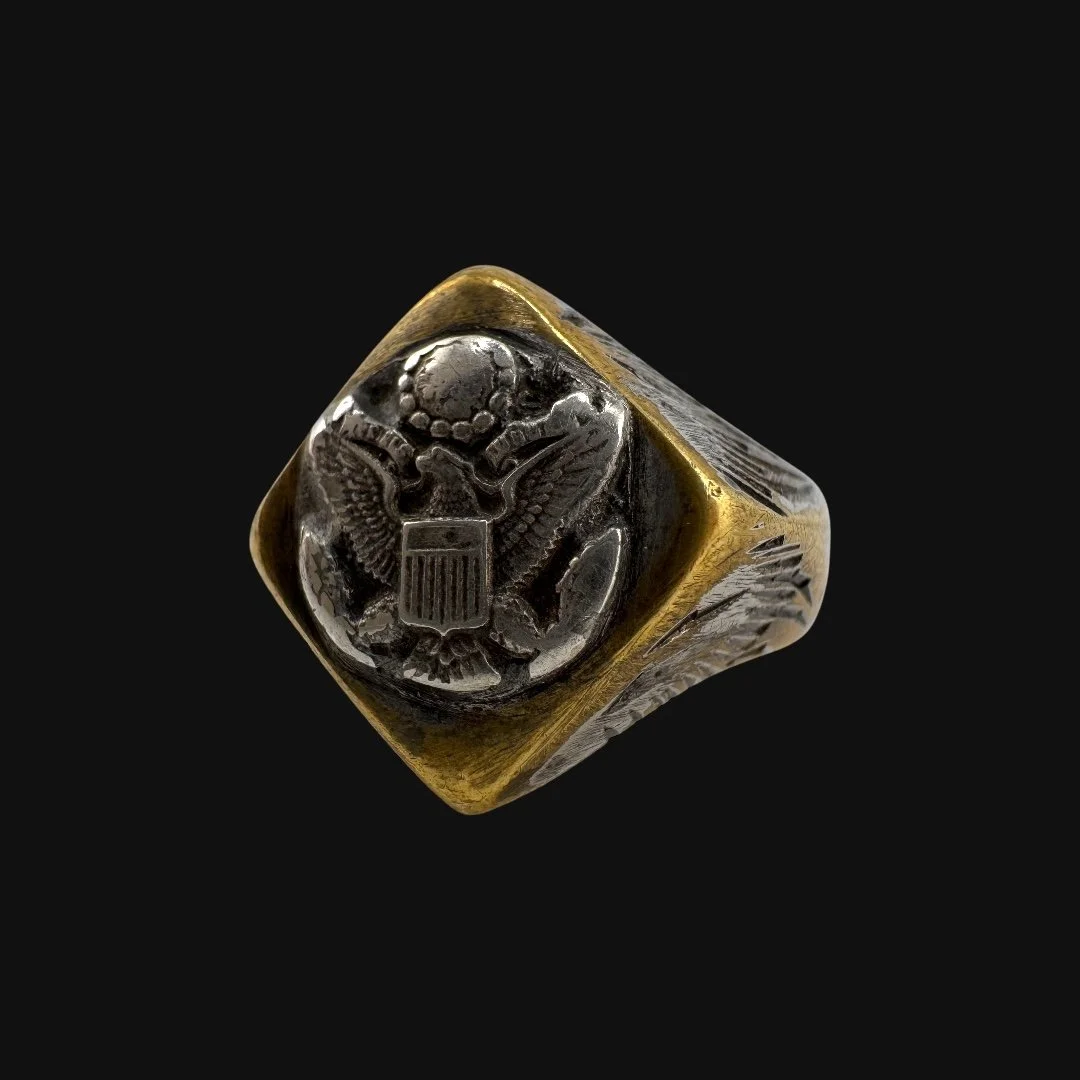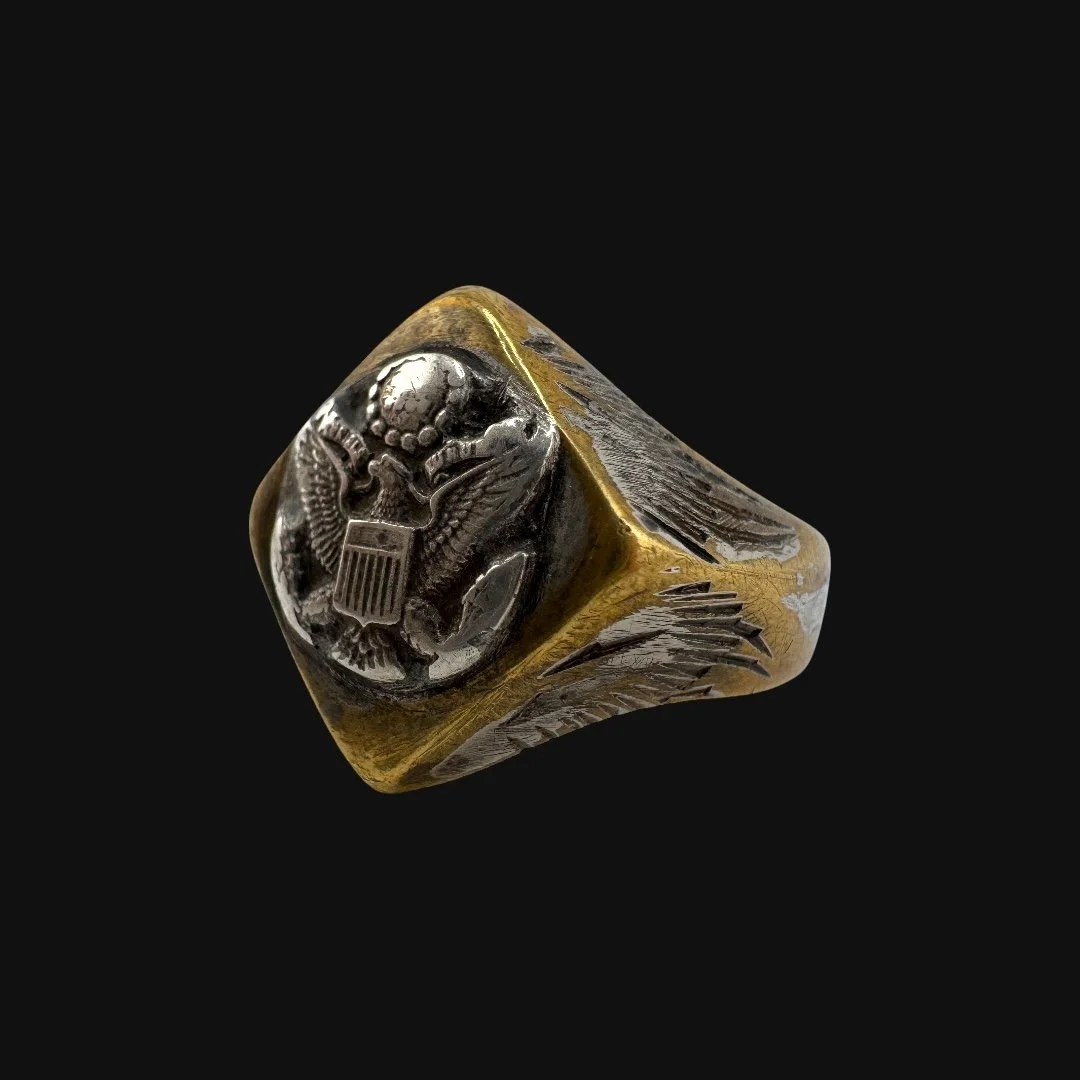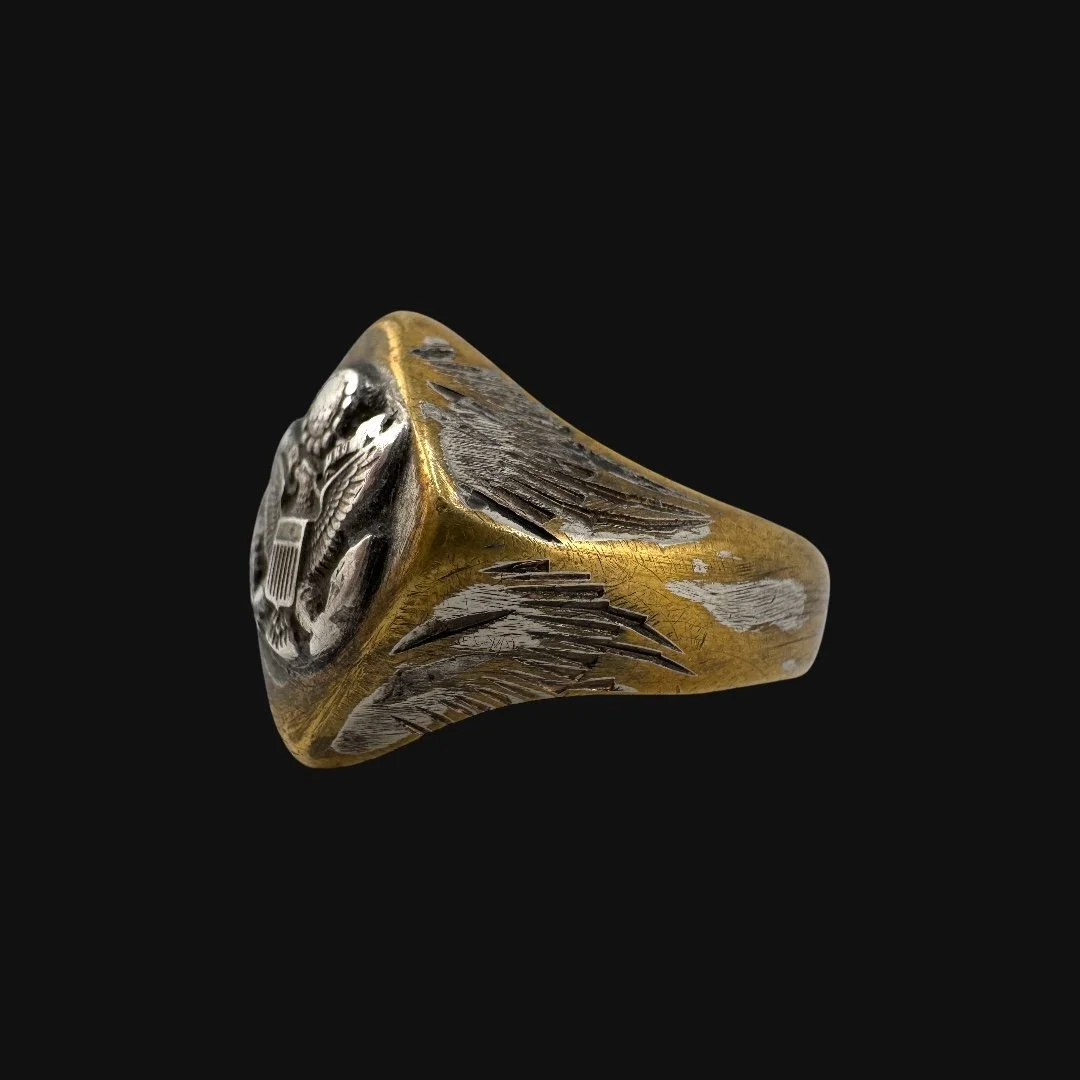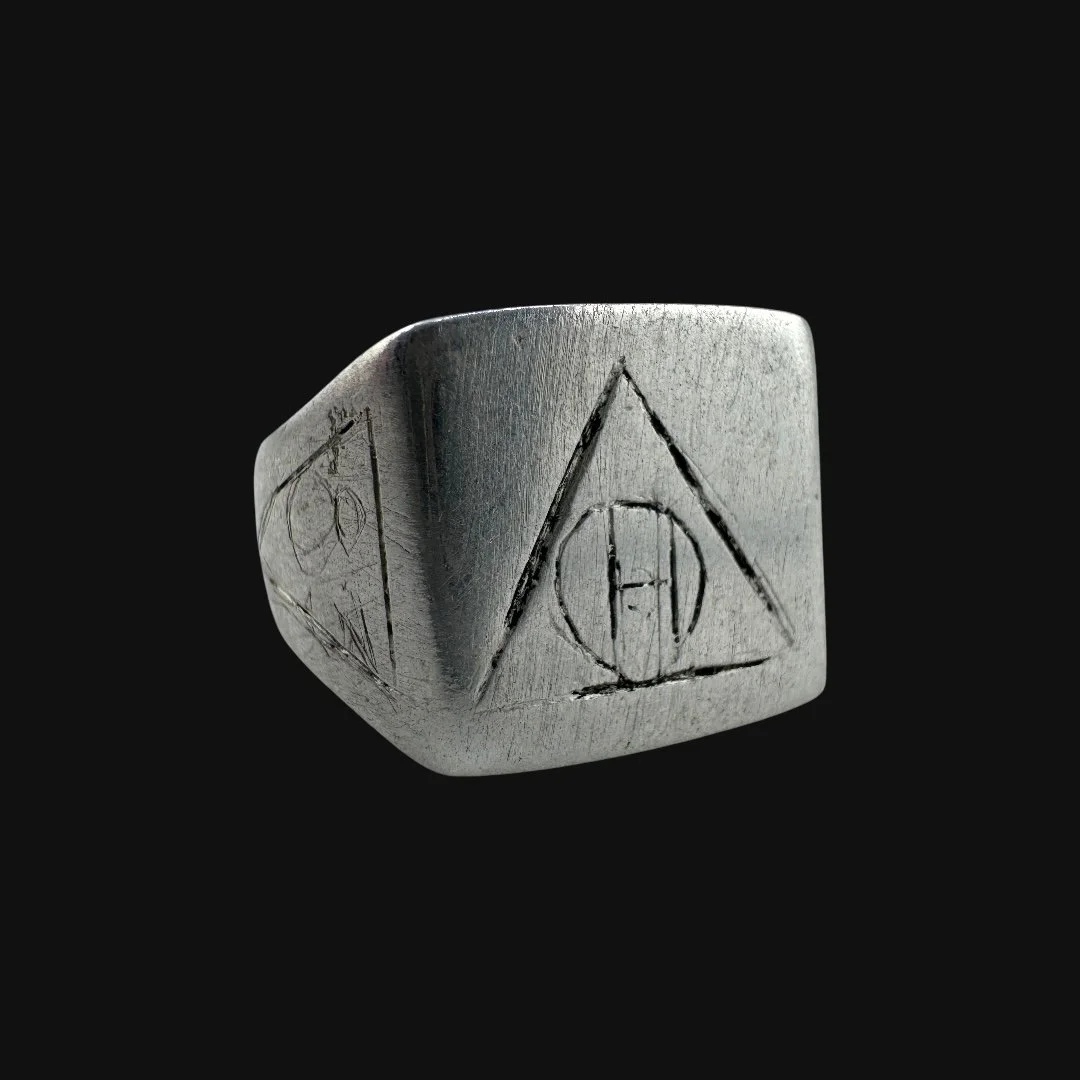 Image 1 of 13
Image 1 of 13

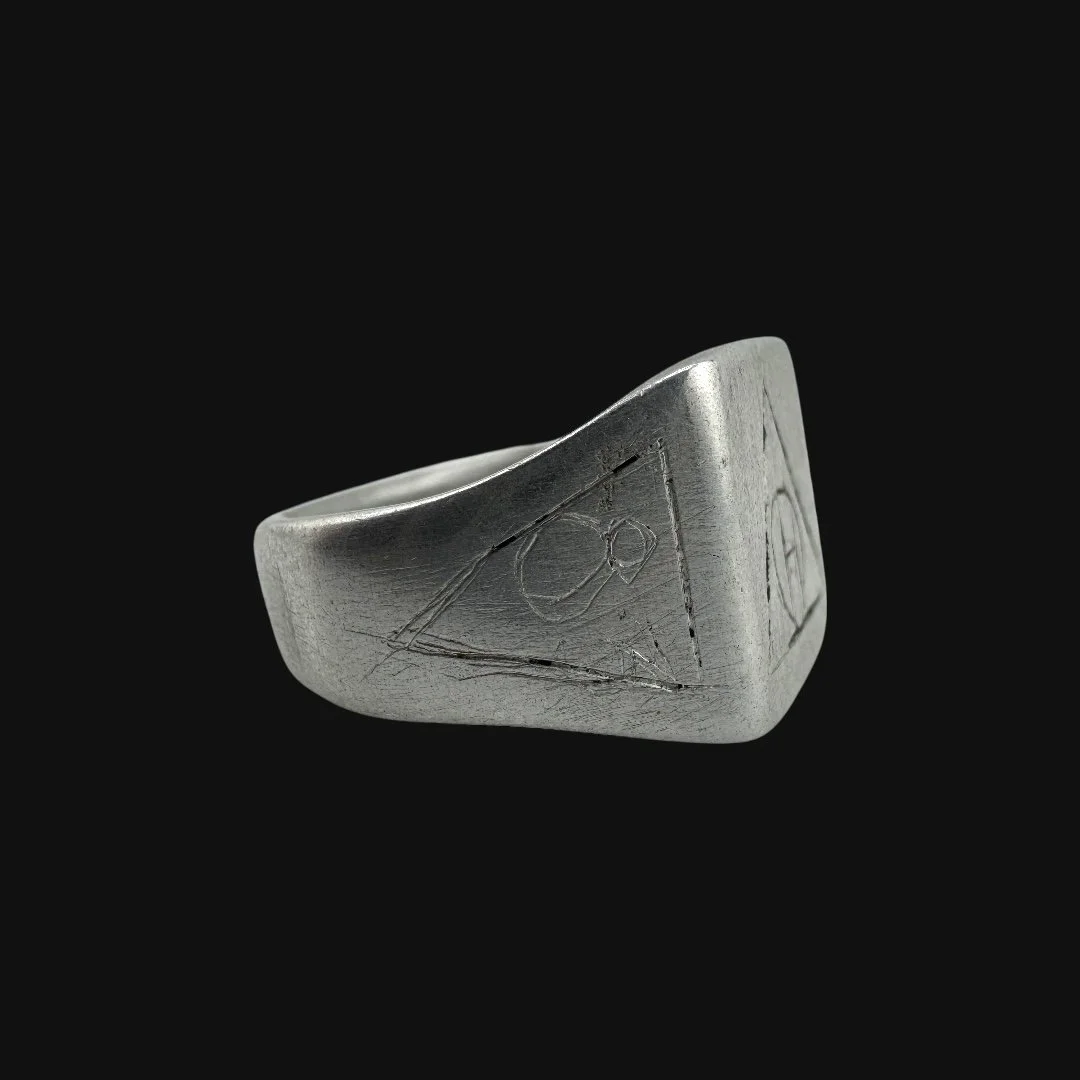 Image 2 of 13
Image 2 of 13

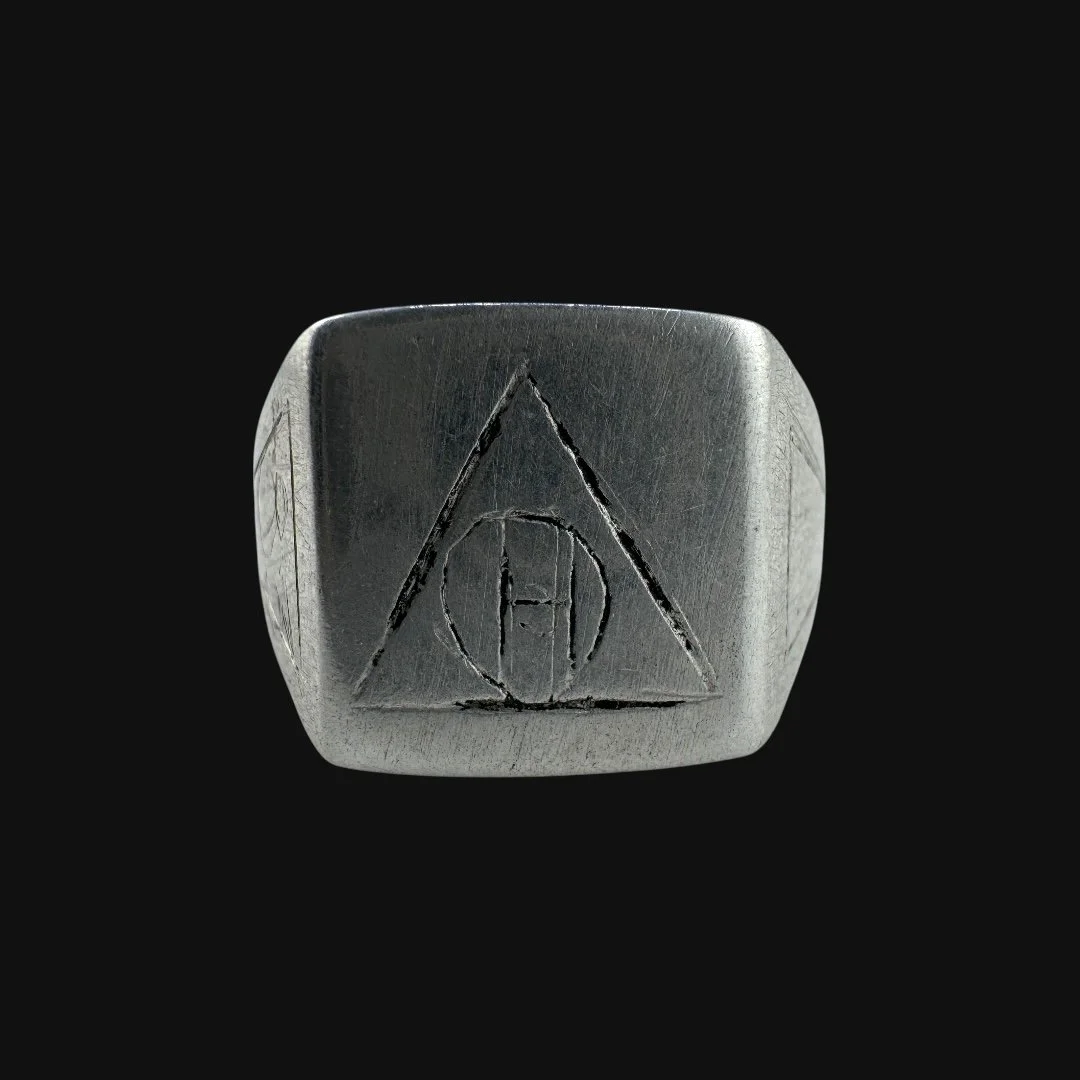 Image 3 of 13
Image 3 of 13

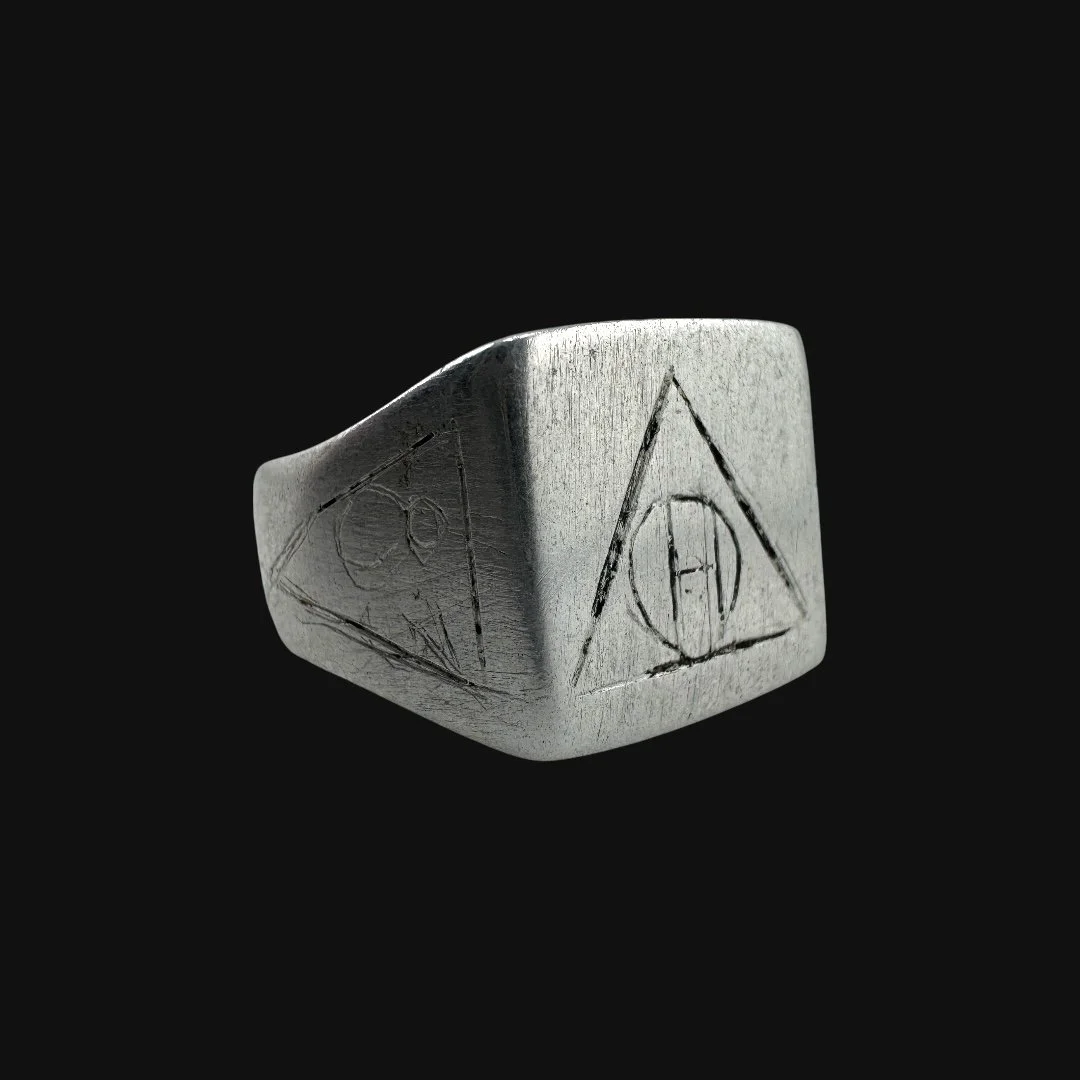 Image 4 of 13
Image 4 of 13

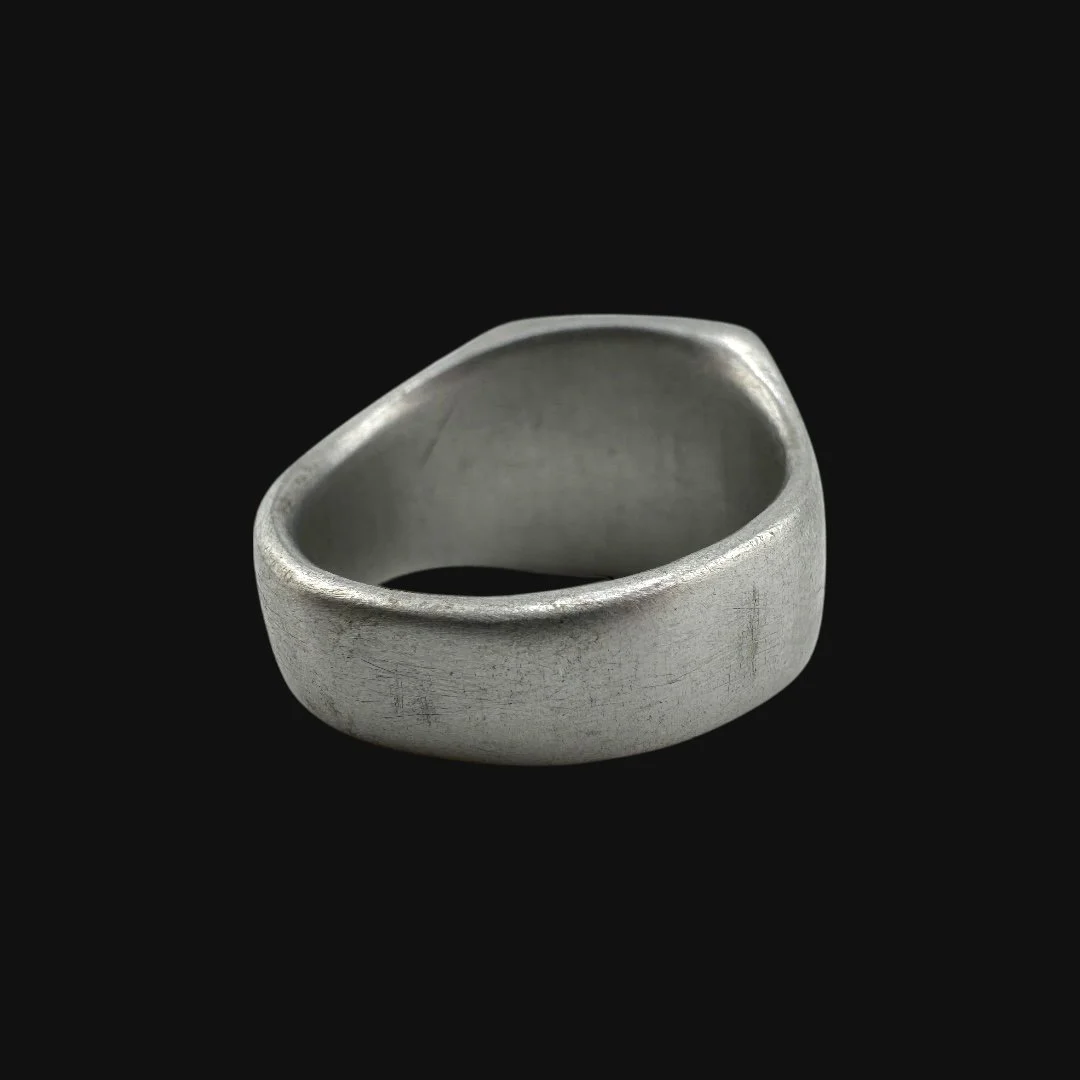 Image 5 of 13
Image 5 of 13

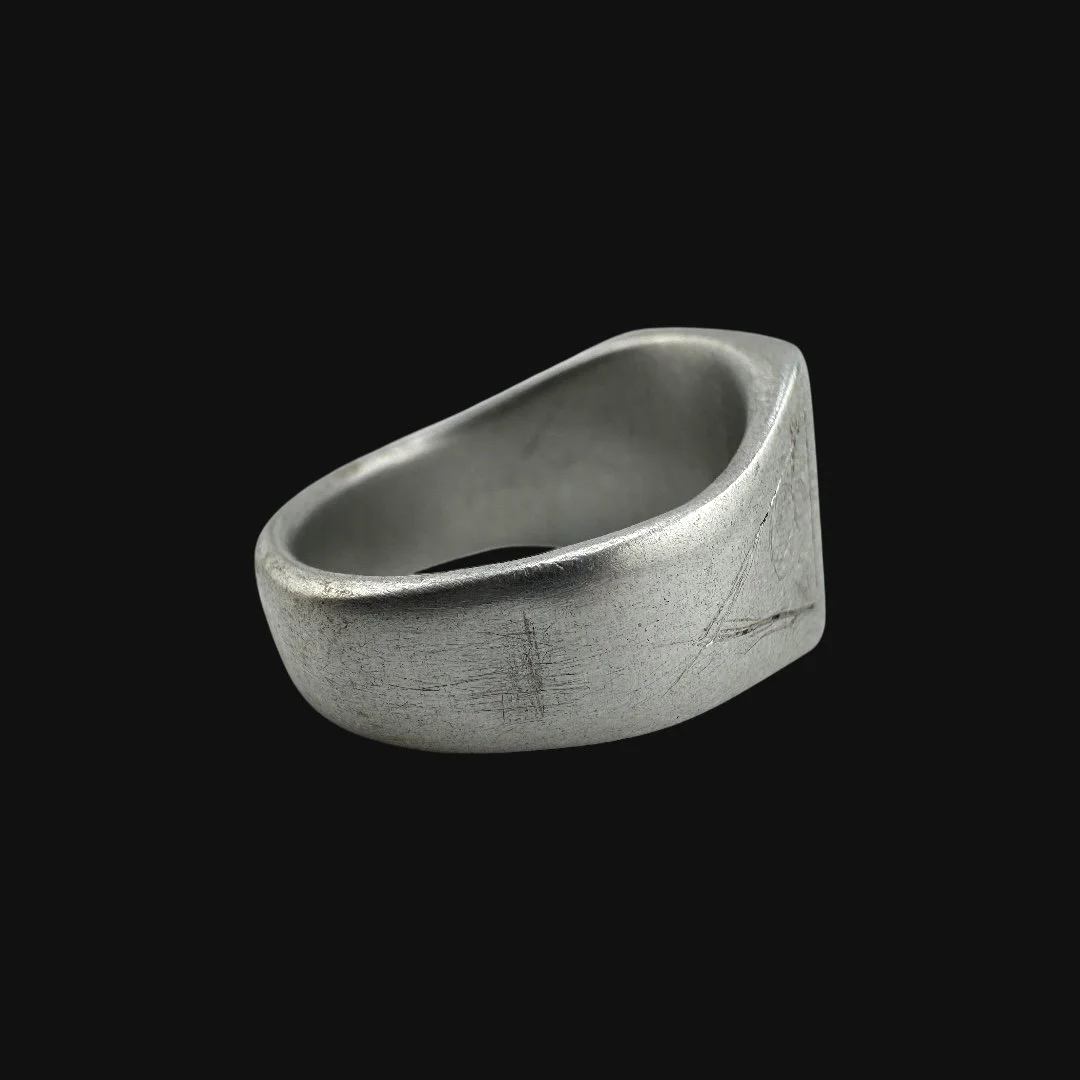 Image 6 of 13
Image 6 of 13

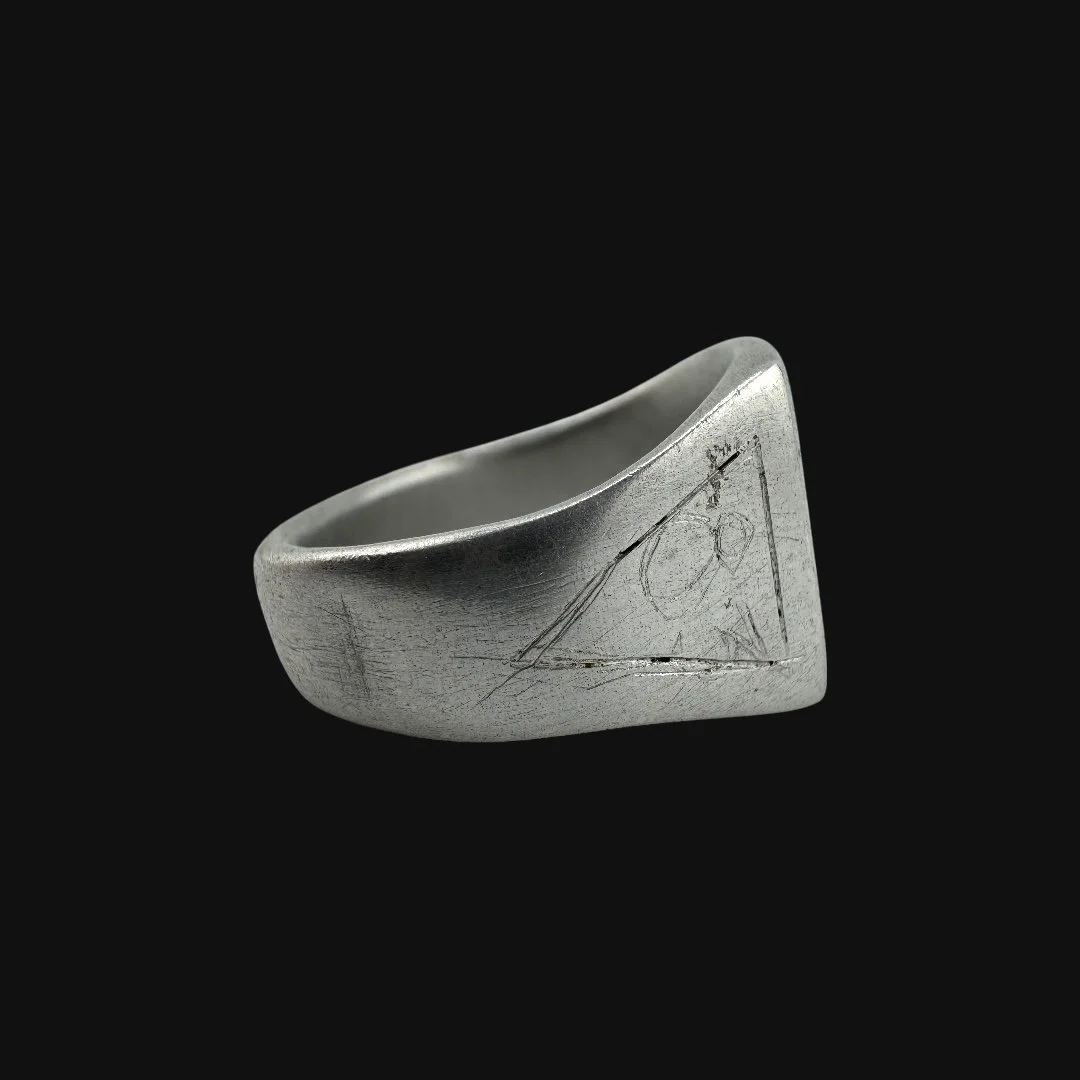 Image 7 of 13
Image 7 of 13

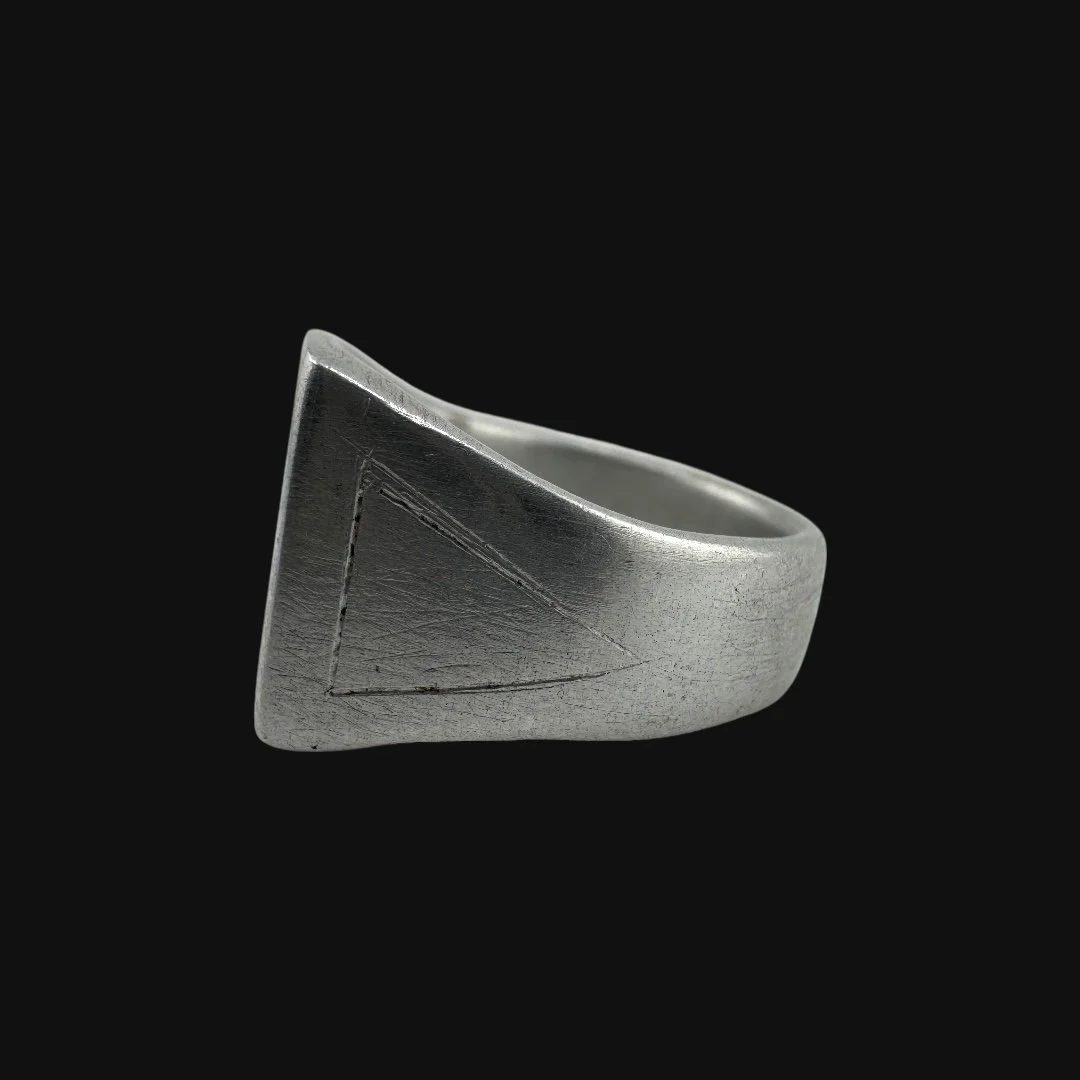 Image 8 of 13
Image 8 of 13

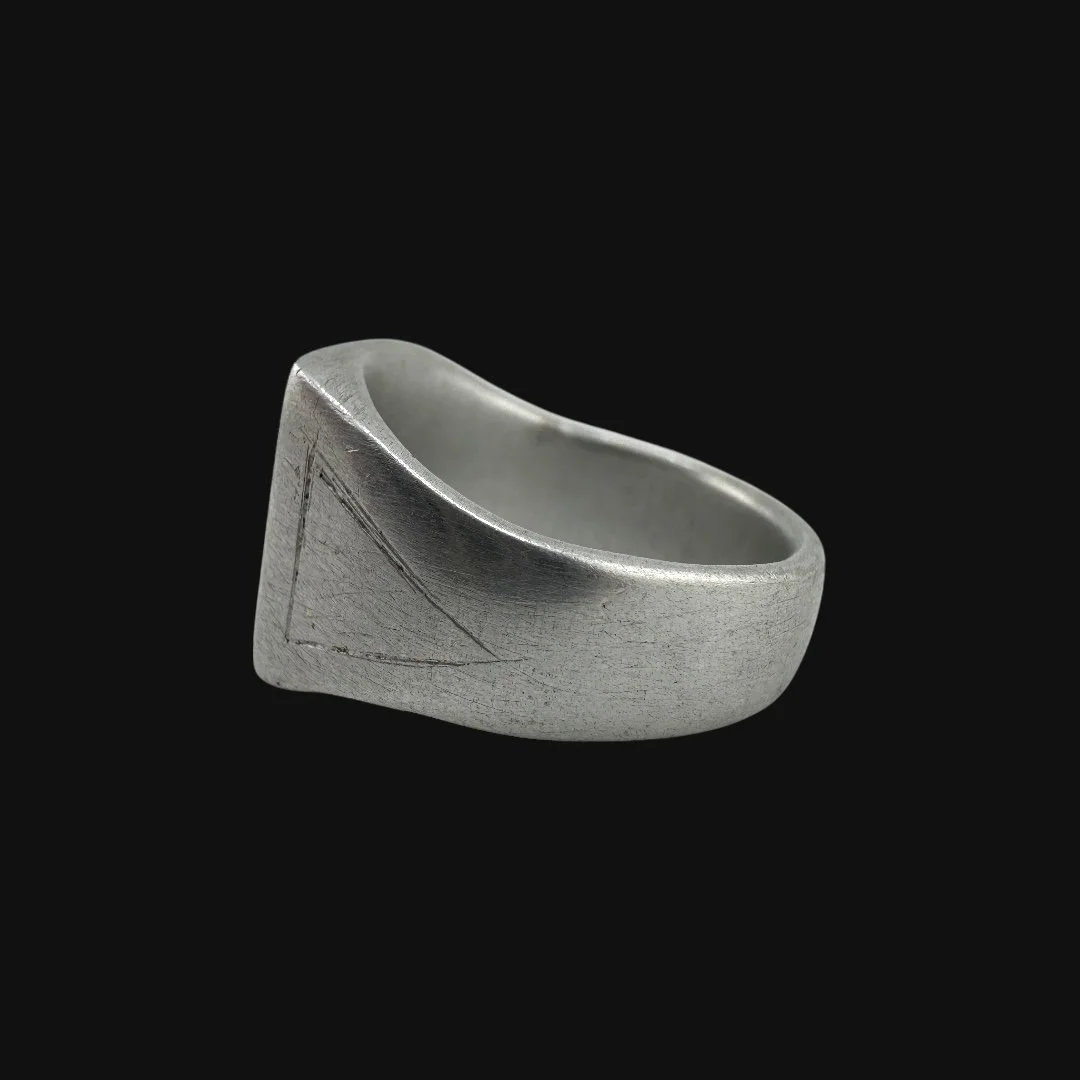 Image 9 of 13
Image 9 of 13

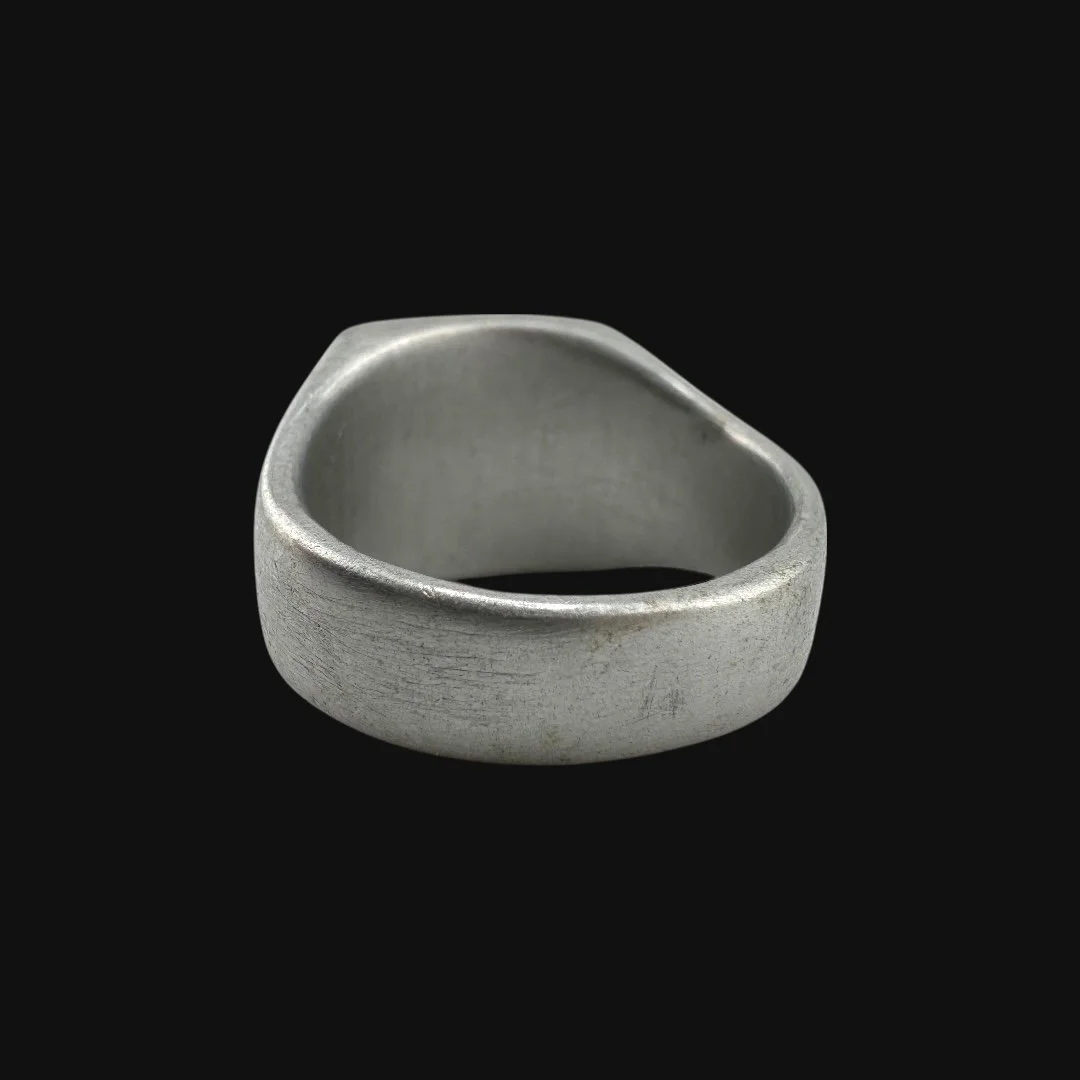 Image 10 of 13
Image 10 of 13

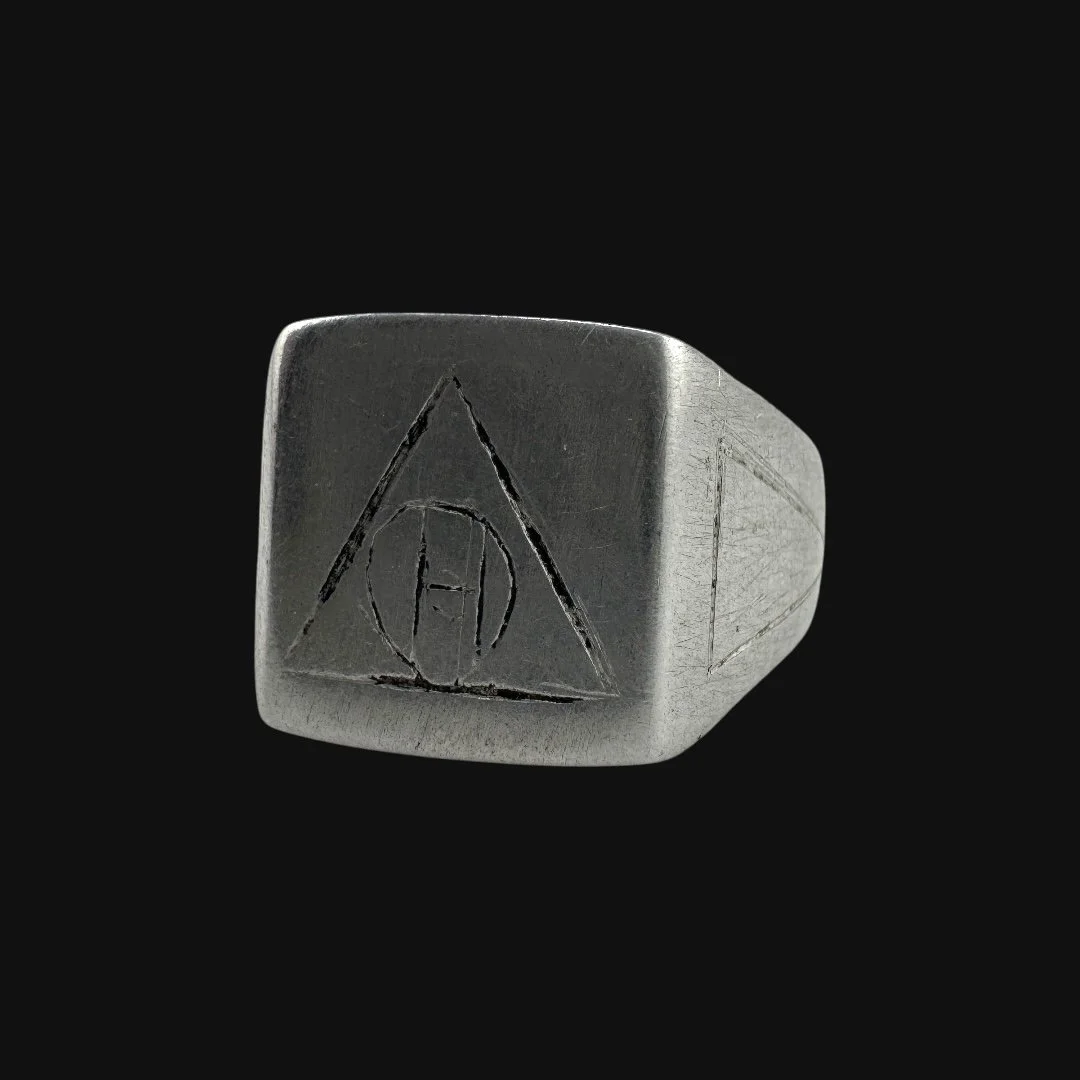 Image 11 of 13
Image 11 of 13

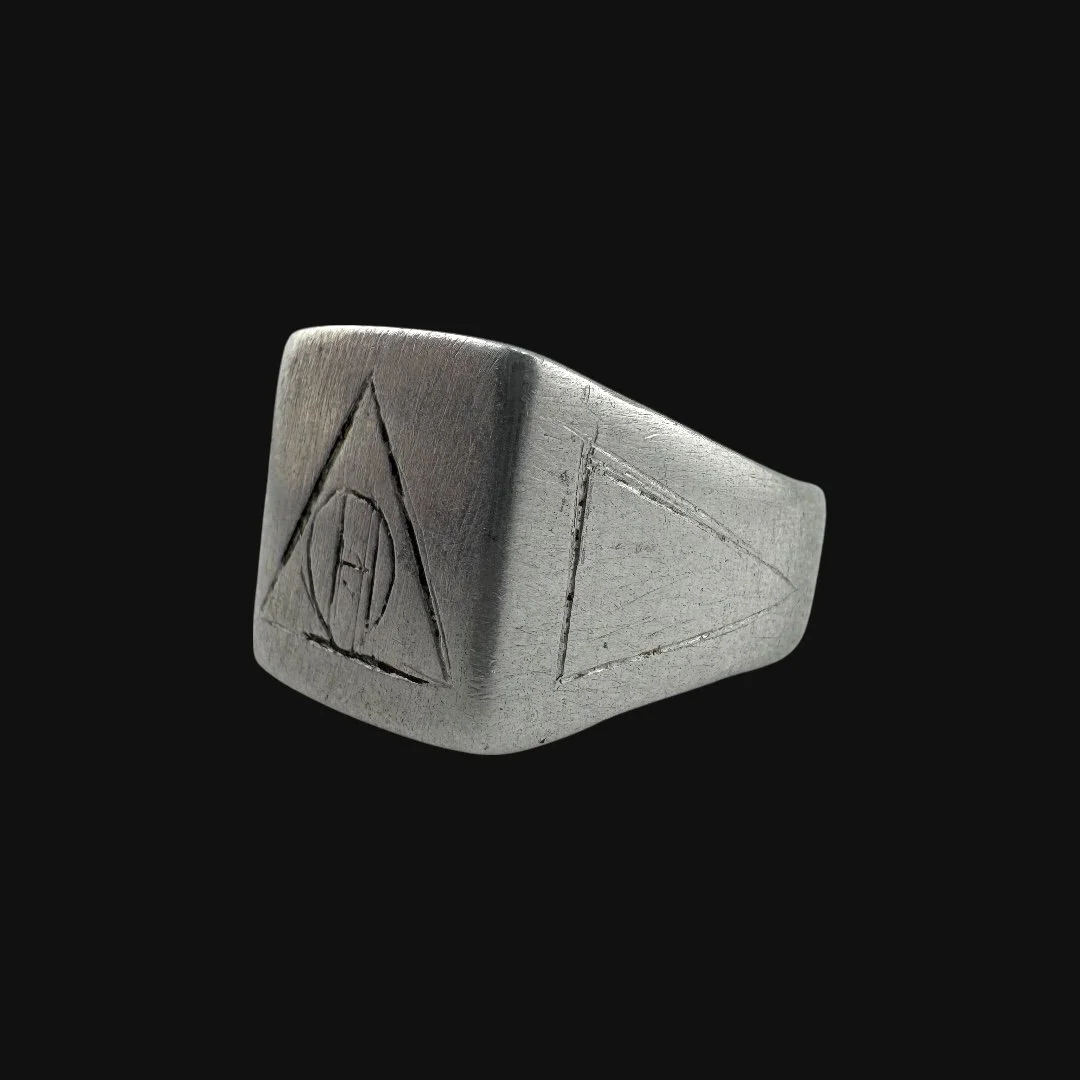 Image 12 of 13
Image 12 of 13

 Image 13 of 13
Image 13 of 13














Original WWII 1945 Captured German POW “Prisoner of War ” Austria Camp Ring – American POW Zone – European Theater (Size 8)
Comes with a hand-signed C.O.A. and a full historical research write-up
From: World War II
Made By: Captured German POW in the American Zone of Salzburg, Upper Austria, Tyrol
Dated: 1945
Ring Size: 8 (US)
Material: Discard War Materials/Metal From German POW Camp
Theater: European Theater
Wearable History Collection:
This authentic 1945-1946 WWII-era ring, preserved in its original and unaltered condition, combines exceptional craftsmanship with lasting durability, making it fully suitable for modern wear today. As part of our exclusive World War II “Wearable History Ring Collection,” it offers the rare opportunity to own and wear a genuine piece of World War II. Both a timeless accessory and a tangible link to the past, this truly one-of-a-kind ring stands as a wearable tribute to the courage and sacrifice of a generation.
Historical Significance to the German POW Camps During WWII:
From May 1945 to the end of 1946, Austria was filled with prisoner of war camps for captured German soldiers, each shaped by the policies of its occupying power. In the American zone, the most prominent was Lager Glasenbach (Camp Marcus W. Orr) near Salzburg, which held high-ranking officers, SS members, and Nazi officials, functioning as a denazification and interrogation center until 1947. Linz and Wels served as large transit camps, briefly holding thousands of POWs before release or transfer to labor units in Italy or France, while smaller compounds in the Tyrol secured units retreating into the mountains. In the British zone, Wolfsberg Camp in Carinthia, formerly Stalag XVIII-A, was repurposed to hold thousands of German military personnel, many assigned to agricultural and road-repair labor, with smaller requisitioned sites scattered around Graz and rural Styria. The Soviet zone in Lower Austria, Burgenland, and eastern Vienna maintained POWs in converted military barracks, using them for rubble-clearing and heavy labor, with key staging points at Bruck an der Leitha and Baden for deportations to the Soviet Union, where many captives remained for years. The French zone in Vorarlberg and North Tyrol oversaw smaller barrack and alpine camps that housed Germans retreating from Italy, often transferring them to France for work in agriculture and industry. By late 1945, most ordinary soldiers in U.S. and British custody had been released, but officers, SS members, and war-crimes suspects were held longer, while some camps—like Hallein—were converted to house displaced persons by late 1946, marking a shift from wartime detention to postwar humanitarian use.
The Legacy Within This Ring:
This World War II ring, made for an American soldier by a German prisoner of war in the American Zone of Salzburg, Upper Austria, Tyrol, is a rare artifact born from the uneasy peace that followed combat. Crafted entirely from discarded wartime and POW camp materials, it reflects the resourcefulness and artistry possible even in captivity. Beyond its craftsmanship, the ring tells a deeper story, of former enemies meeting not in battle but through the quiet act of creation, transforming remnants of destruction into a lasting symbol of survival, resilience, and shared humanity. It stands as both a personal memento of the soldier’s service and a fragment of the U.S. Army’s legacy in postwar Austria.
Comes with a hand-signed C.O.A. and a full historical research write-up
From: World War II
Made By: Captured German POW in the American Zone of Salzburg, Upper Austria, Tyrol
Dated: 1945
Ring Size: 8 (US)
Material: Discard War Materials/Metal From German POW Camp
Theater: European Theater
Wearable History Collection:
This authentic 1945-1946 WWII-era ring, preserved in its original and unaltered condition, combines exceptional craftsmanship with lasting durability, making it fully suitable for modern wear today. As part of our exclusive World War II “Wearable History Ring Collection,” it offers the rare opportunity to own and wear a genuine piece of World War II. Both a timeless accessory and a tangible link to the past, this truly one-of-a-kind ring stands as a wearable tribute to the courage and sacrifice of a generation.
Historical Significance to the German POW Camps During WWII:
From May 1945 to the end of 1946, Austria was filled with prisoner of war camps for captured German soldiers, each shaped by the policies of its occupying power. In the American zone, the most prominent was Lager Glasenbach (Camp Marcus W. Orr) near Salzburg, which held high-ranking officers, SS members, and Nazi officials, functioning as a denazification and interrogation center until 1947. Linz and Wels served as large transit camps, briefly holding thousands of POWs before release or transfer to labor units in Italy or France, while smaller compounds in the Tyrol secured units retreating into the mountains. In the British zone, Wolfsberg Camp in Carinthia, formerly Stalag XVIII-A, was repurposed to hold thousands of German military personnel, many assigned to agricultural and road-repair labor, with smaller requisitioned sites scattered around Graz and rural Styria. The Soviet zone in Lower Austria, Burgenland, and eastern Vienna maintained POWs in converted military barracks, using them for rubble-clearing and heavy labor, with key staging points at Bruck an der Leitha and Baden for deportations to the Soviet Union, where many captives remained for years. The French zone in Vorarlberg and North Tyrol oversaw smaller barrack and alpine camps that housed Germans retreating from Italy, often transferring them to France for work in agriculture and industry. By late 1945, most ordinary soldiers in U.S. and British custody had been released, but officers, SS members, and war-crimes suspects were held longer, while some camps—like Hallein—were converted to house displaced persons by late 1946, marking a shift from wartime detention to postwar humanitarian use.
The Legacy Within This Ring:
This World War II ring, made for an American soldier by a German prisoner of war in the American Zone of Salzburg, Upper Austria, Tyrol, is a rare artifact born from the uneasy peace that followed combat. Crafted entirely from discarded wartime and POW camp materials, it reflects the resourcefulness and artistry possible even in captivity. Beyond its craftsmanship, the ring tells a deeper story, of former enemies meeting not in battle but through the quiet act of creation, transforming remnants of destruction into a lasting symbol of survival, resilience, and shared humanity. It stands as both a personal memento of the soldier’s service and a fragment of the U.S. Army’s legacy in postwar Austria.
